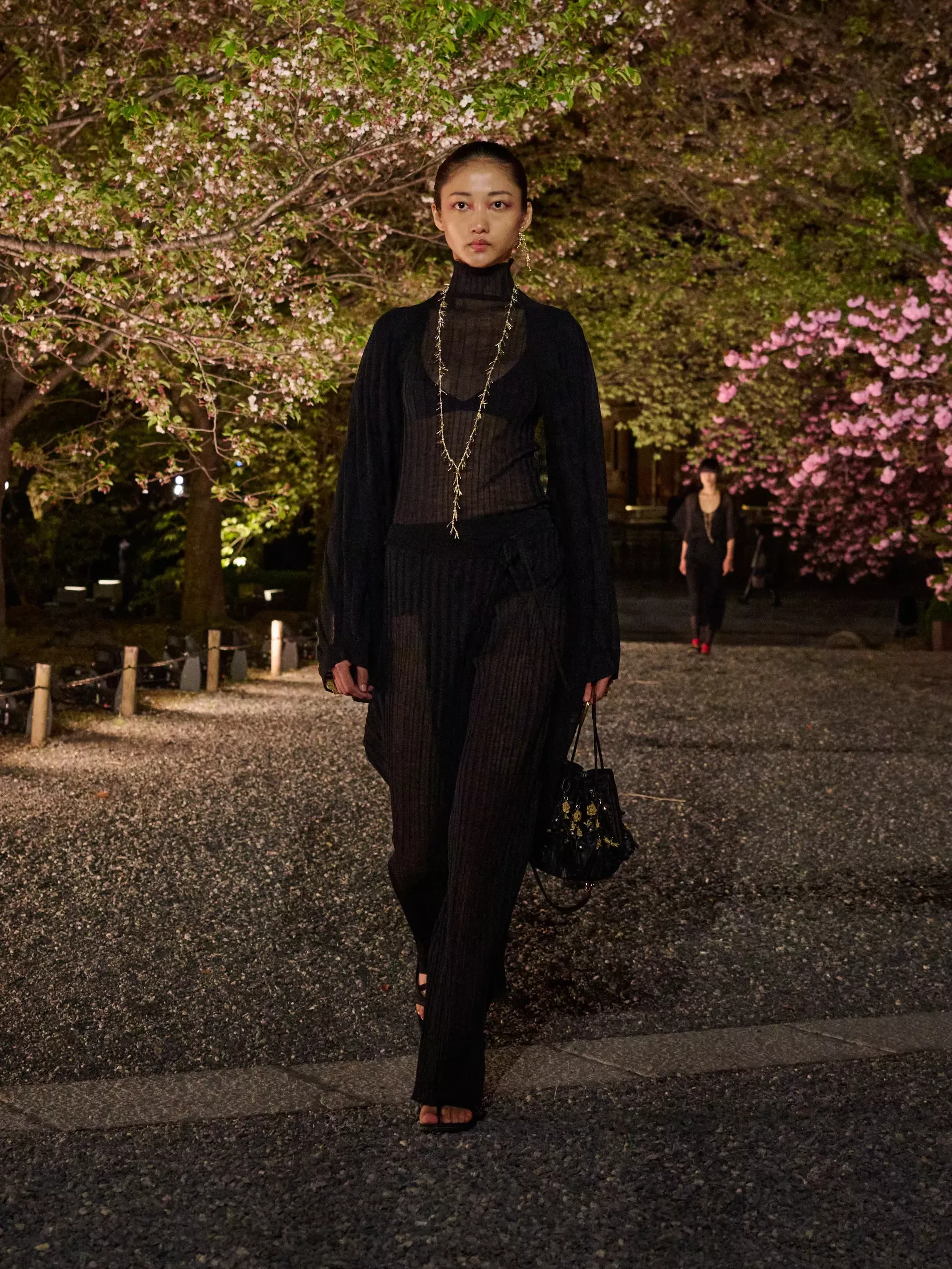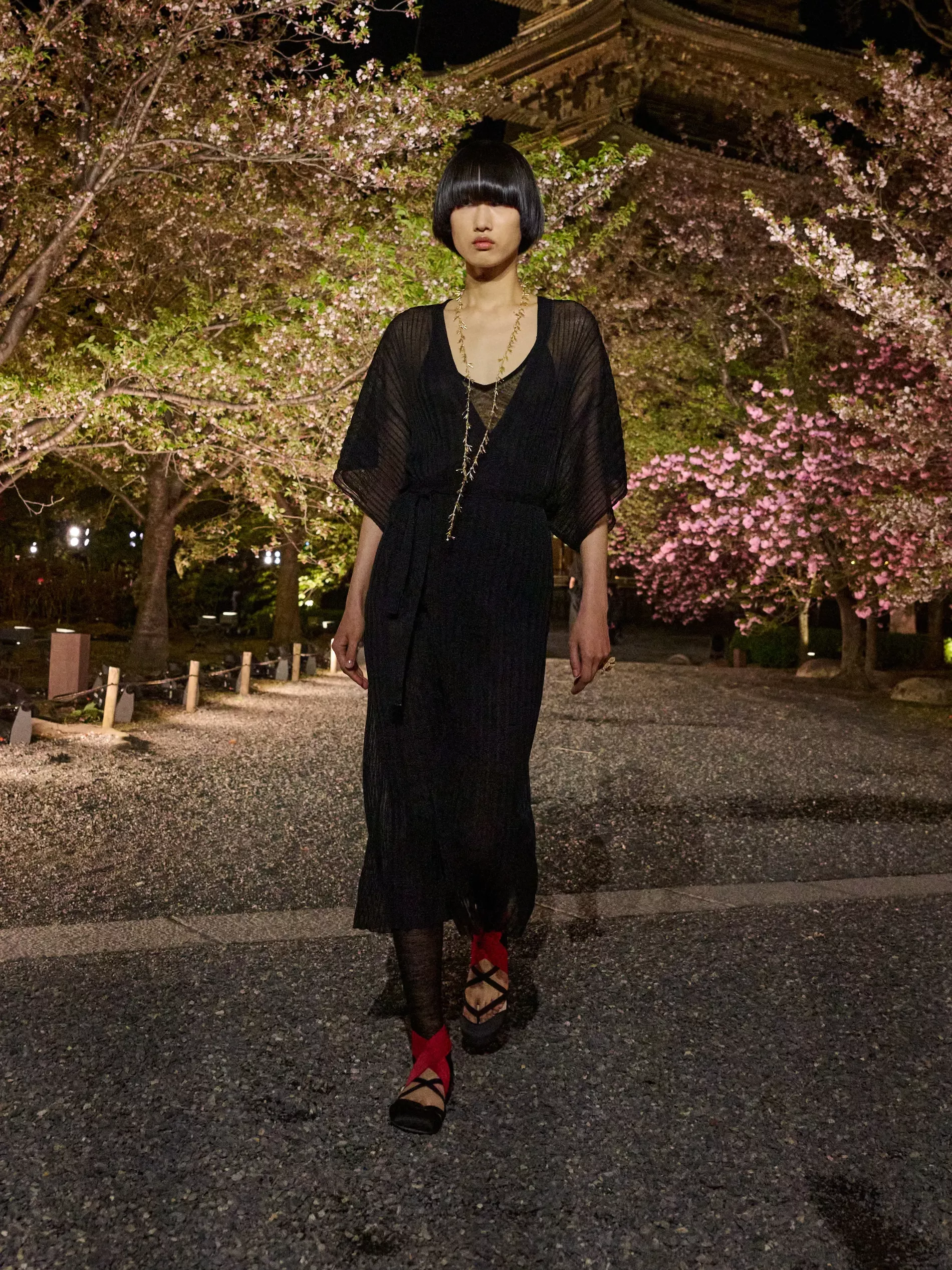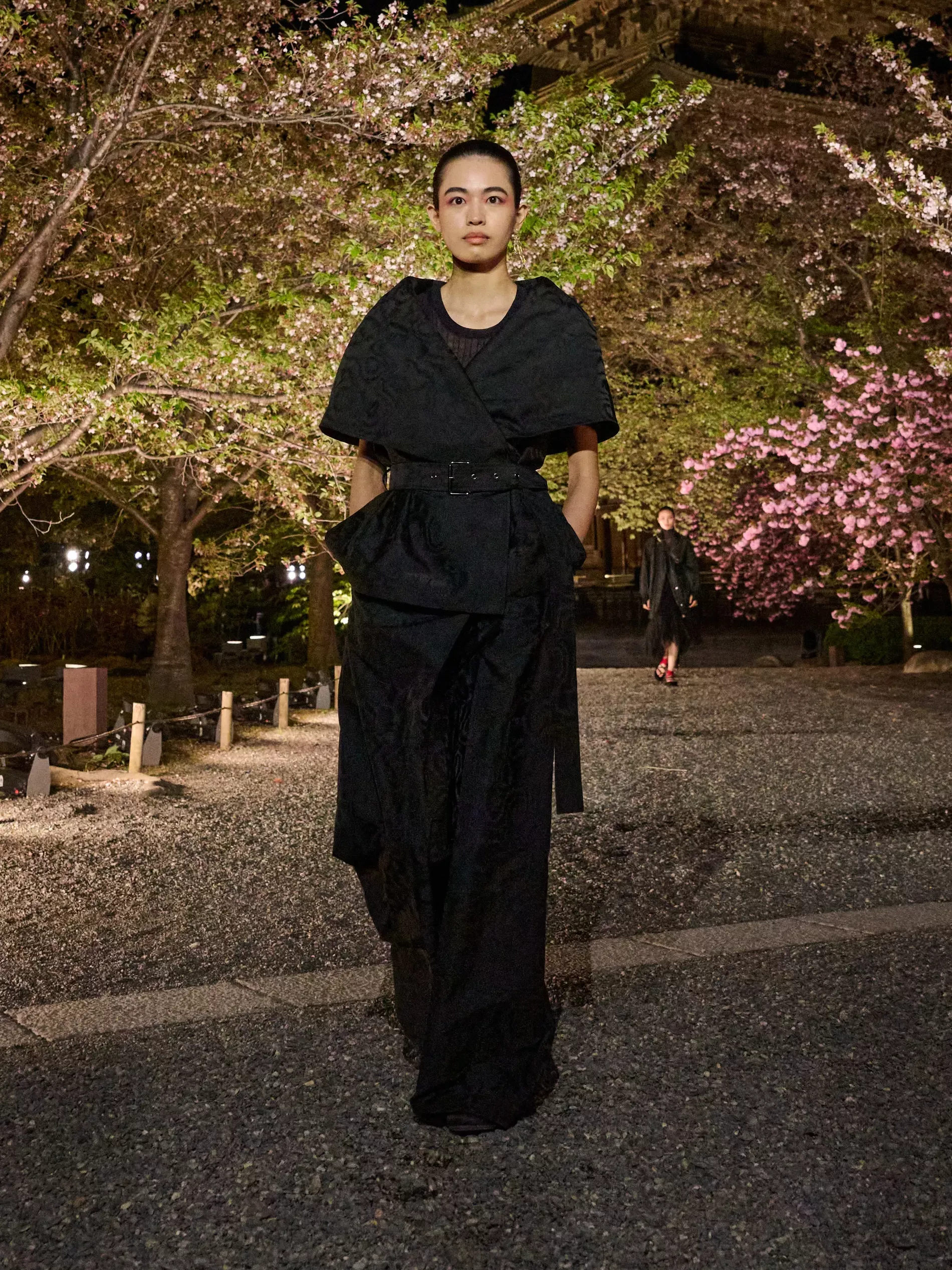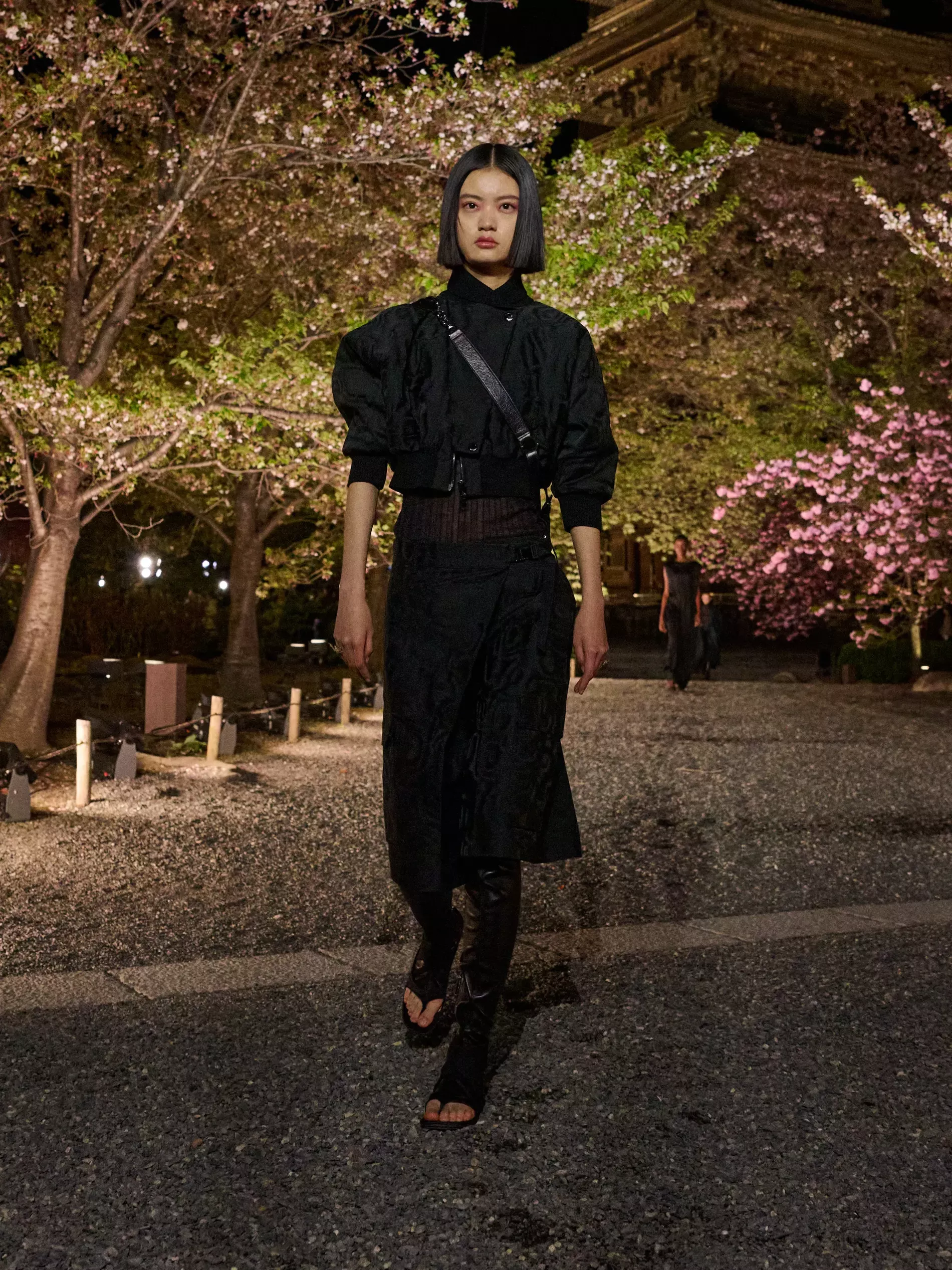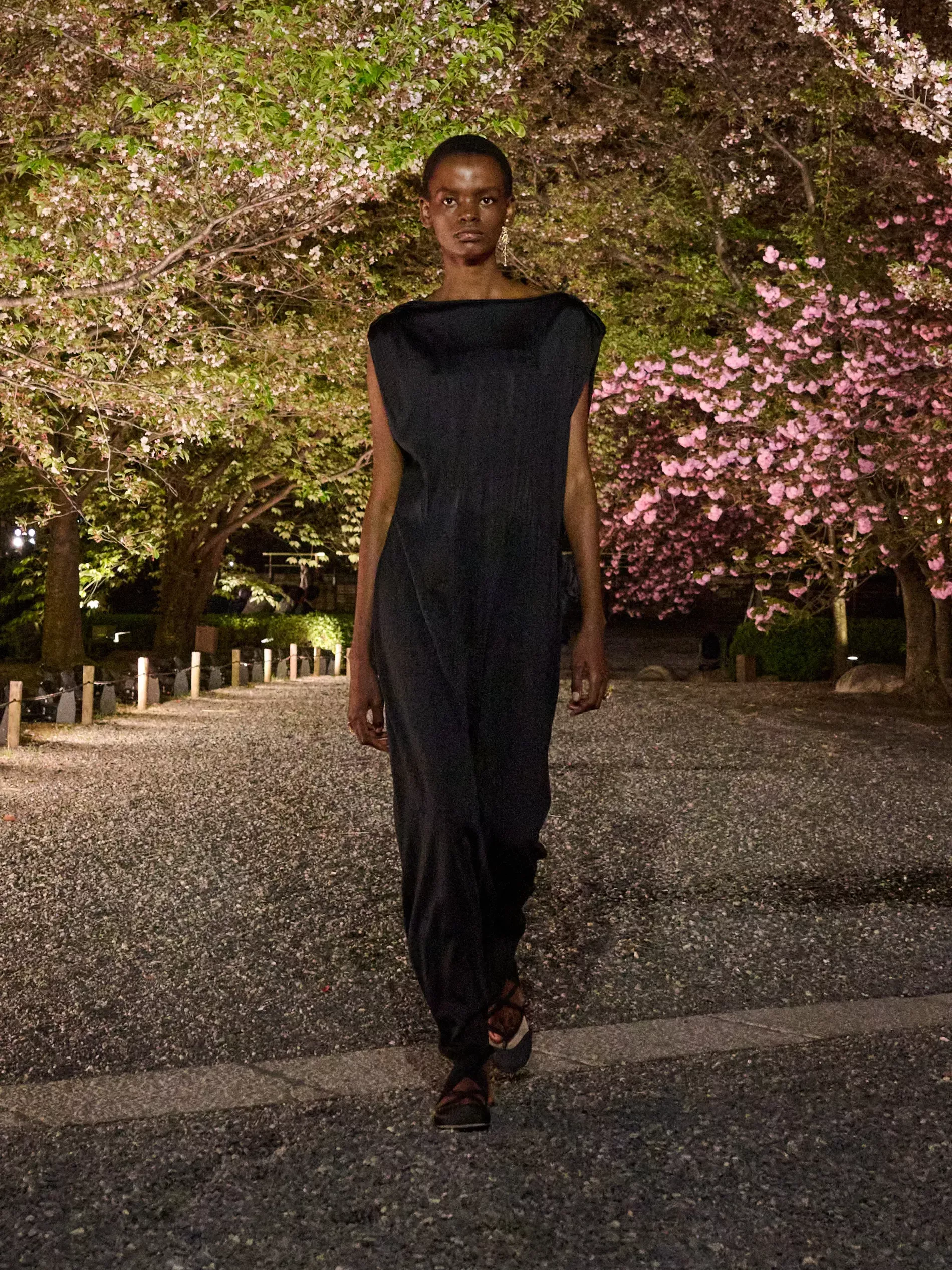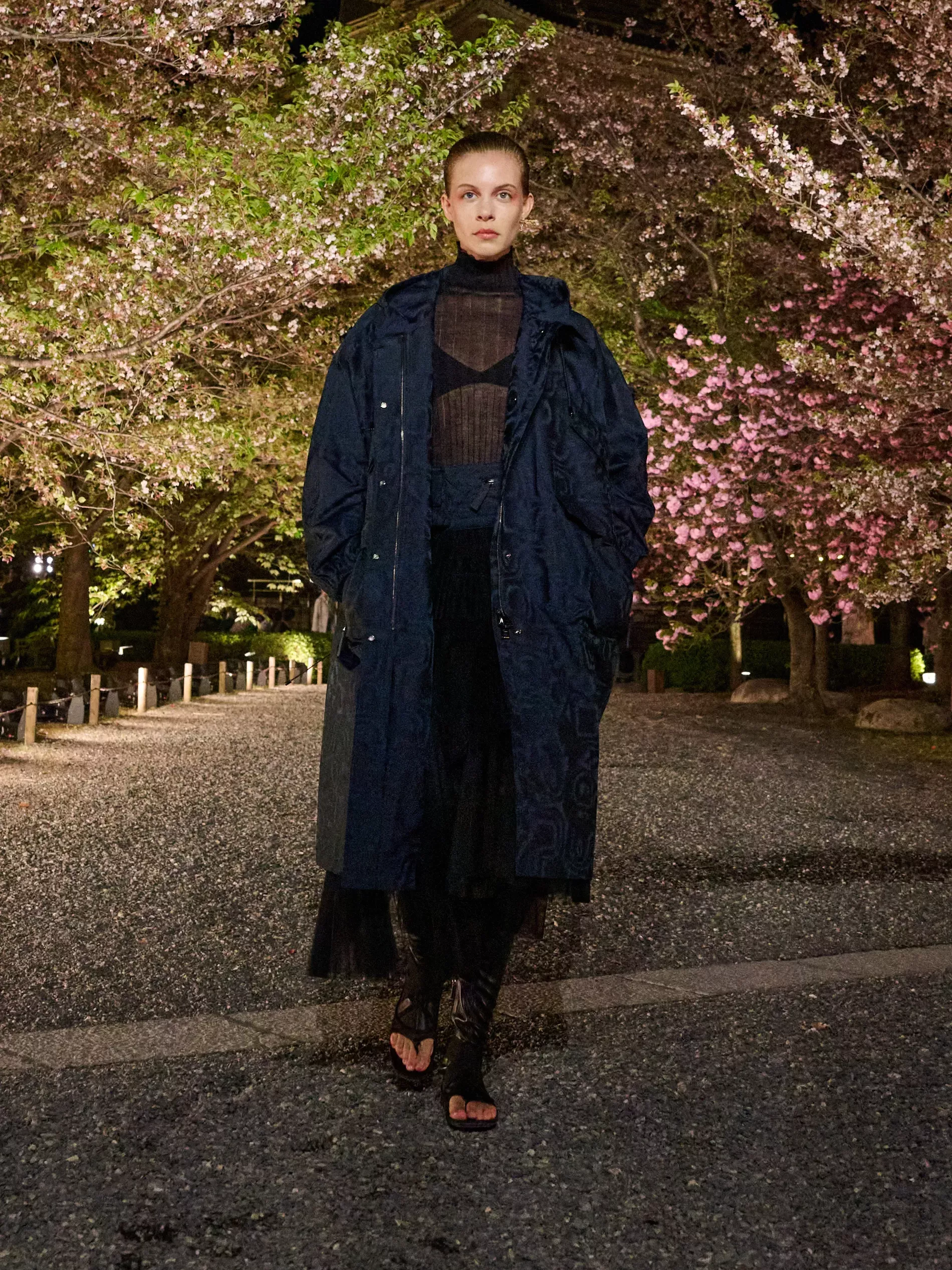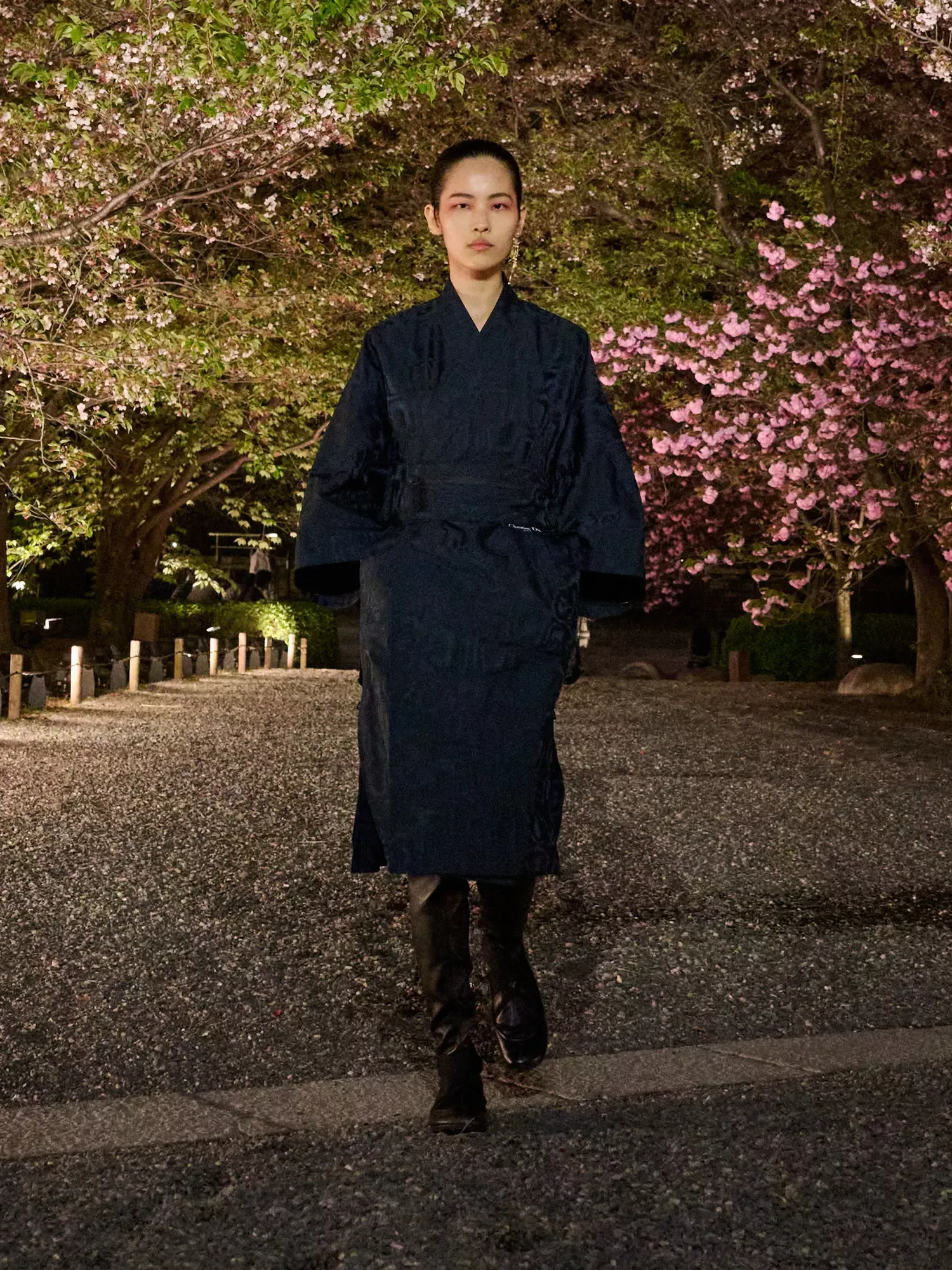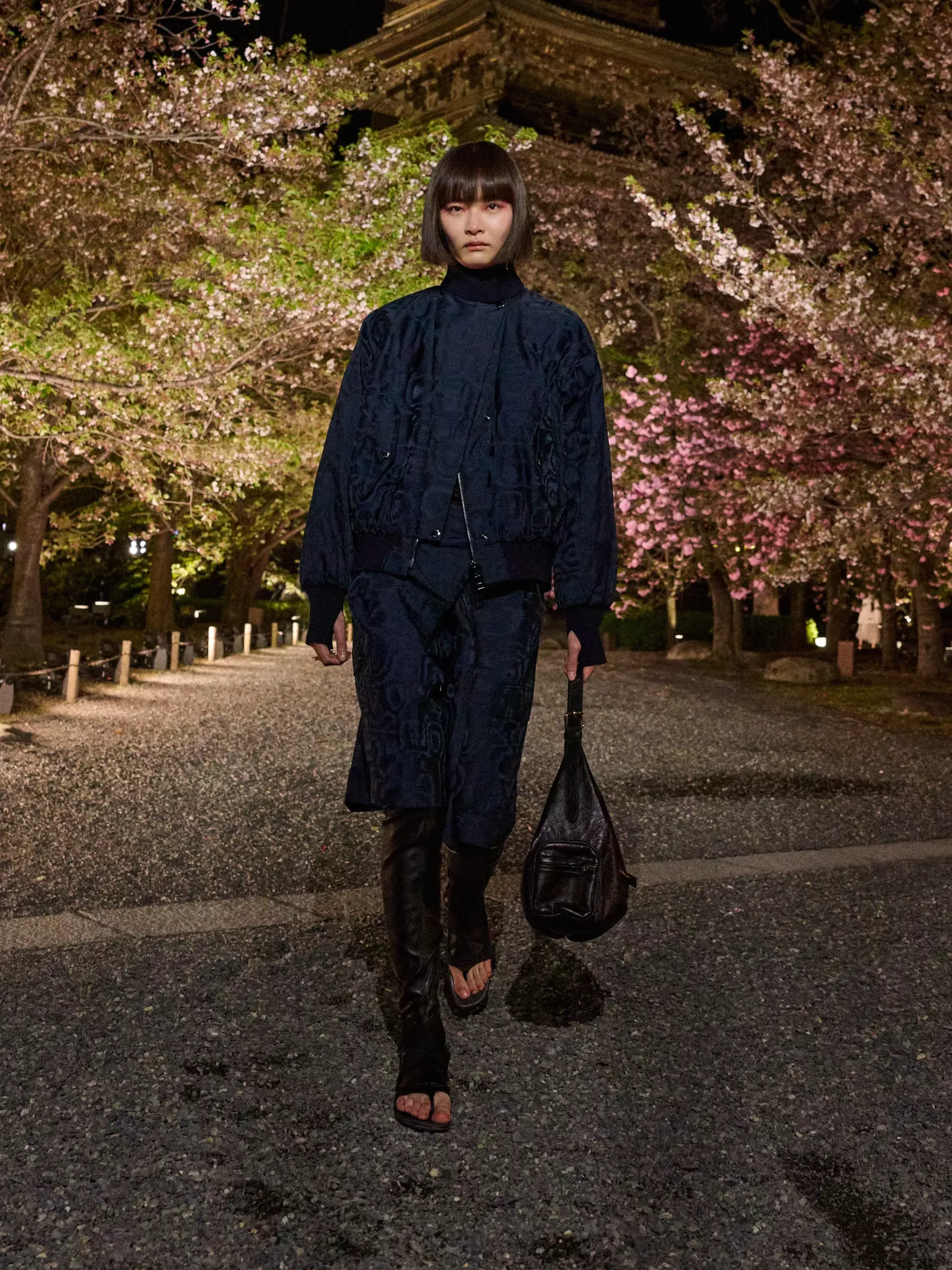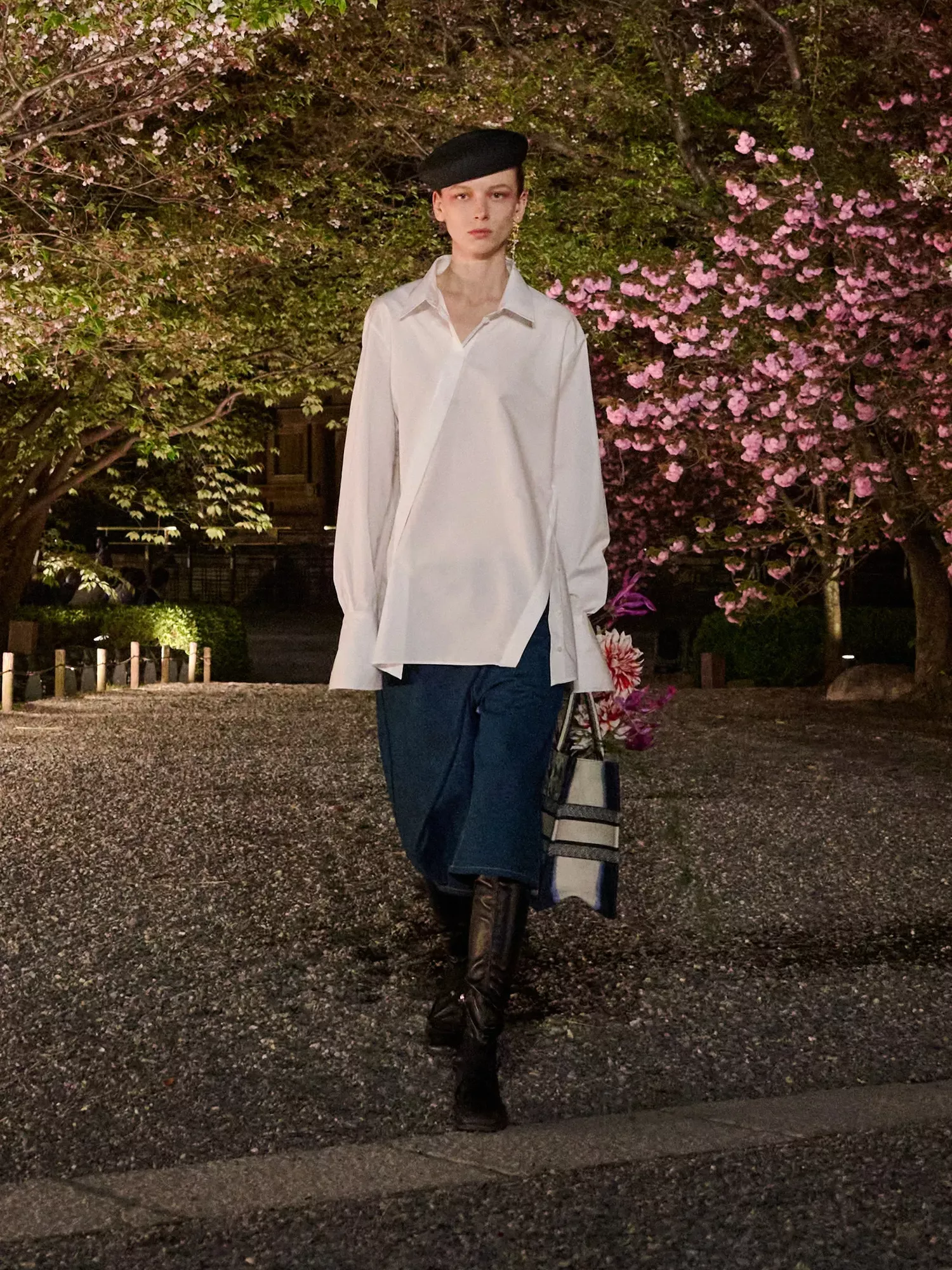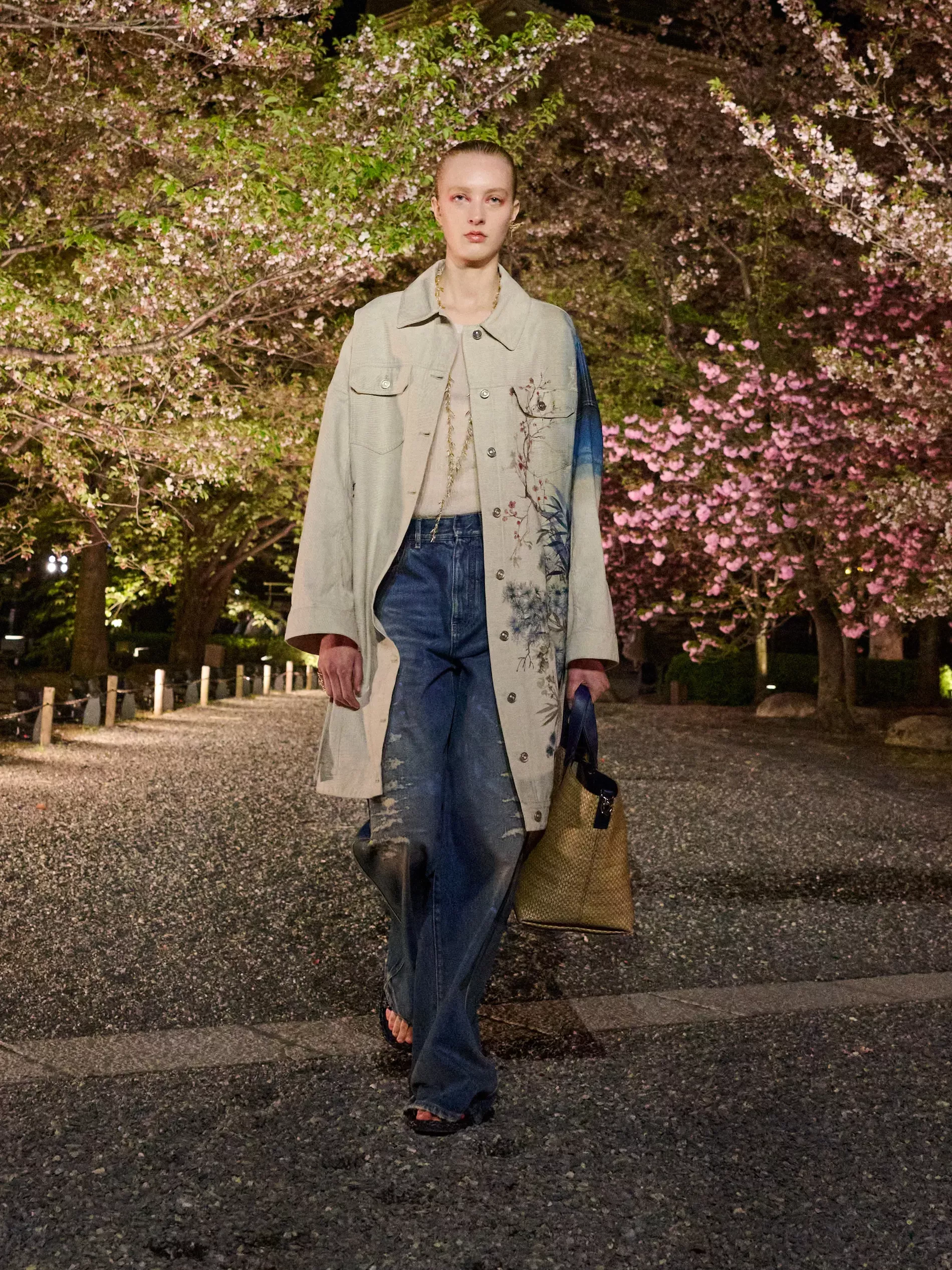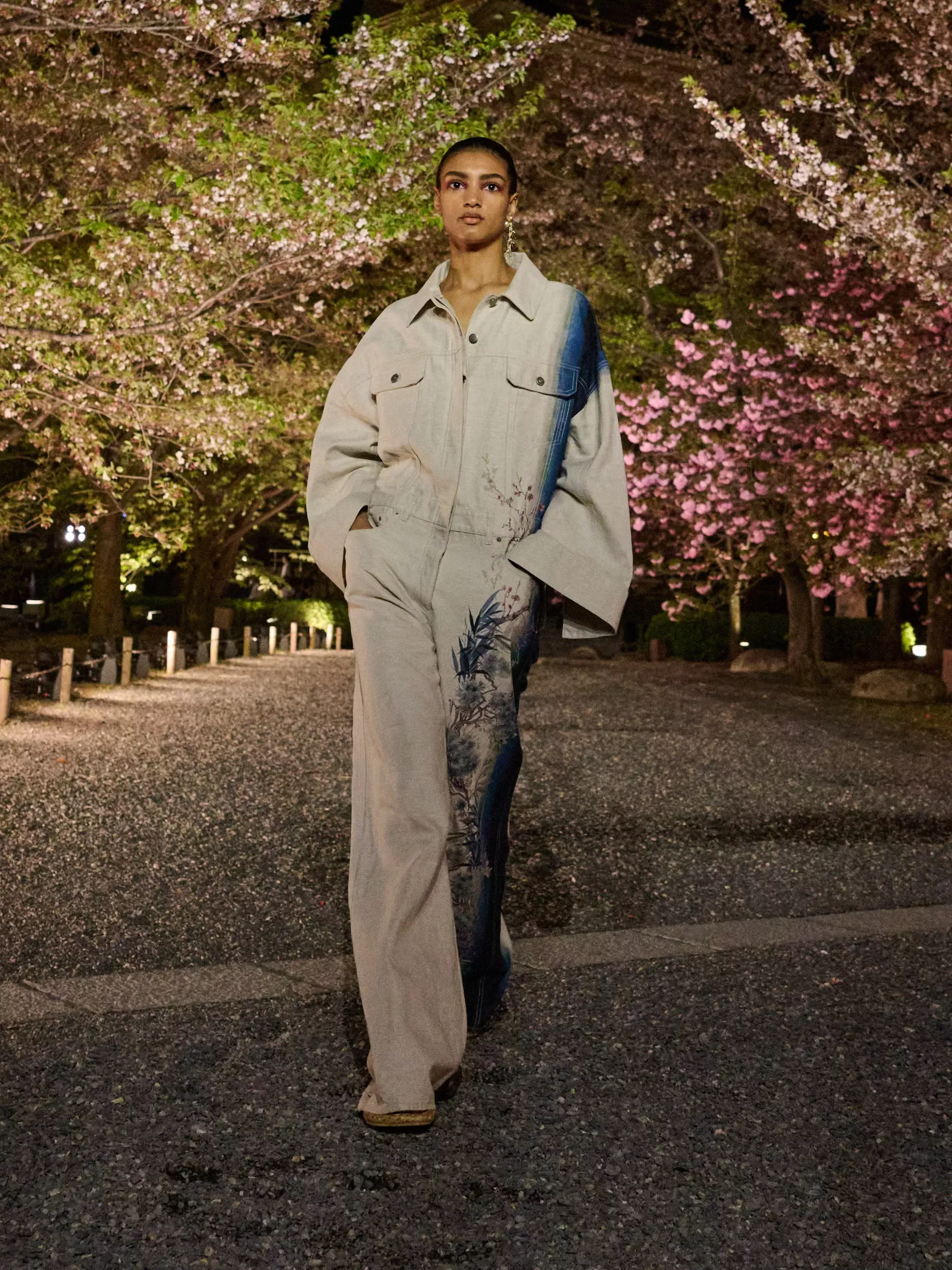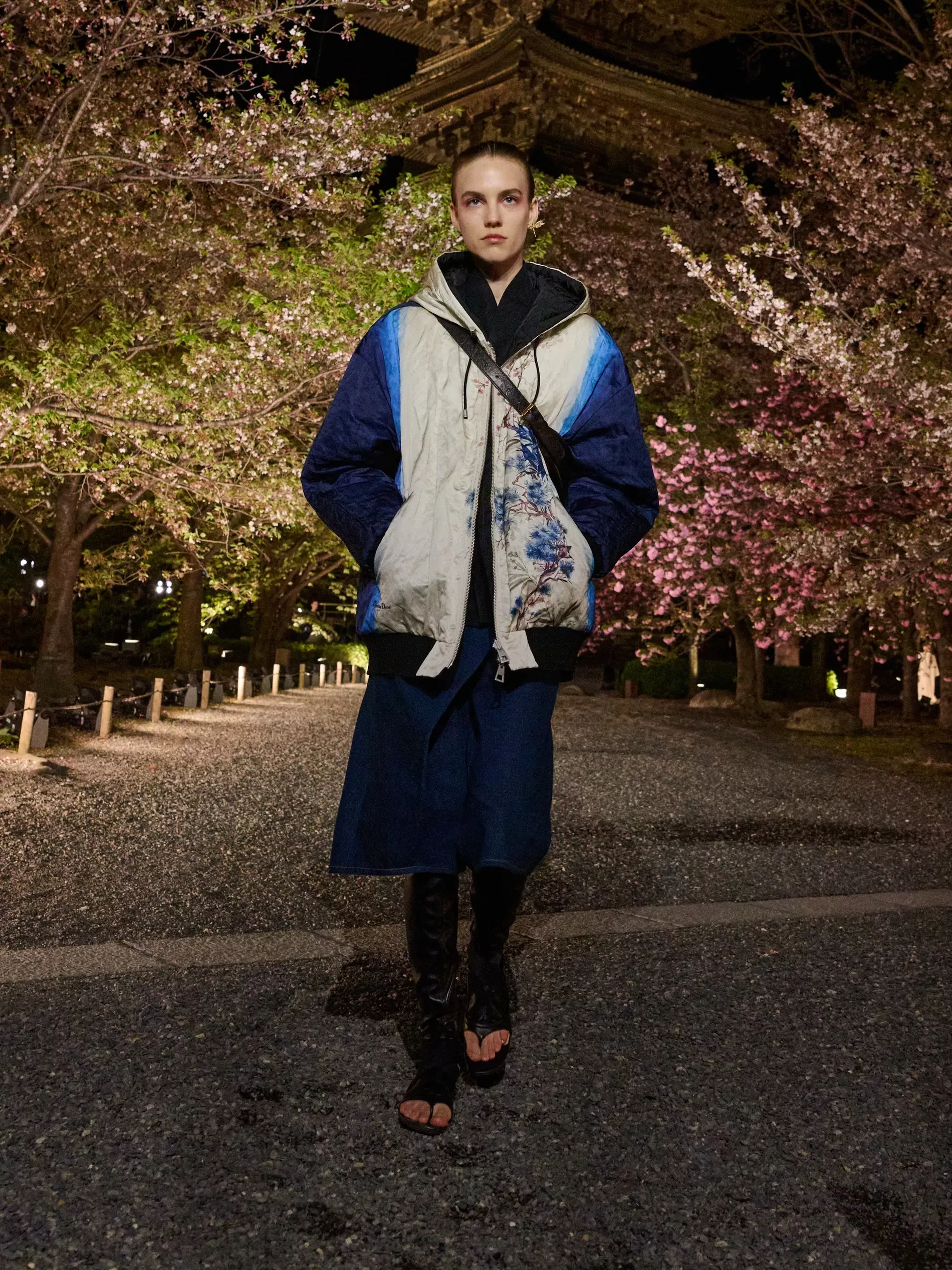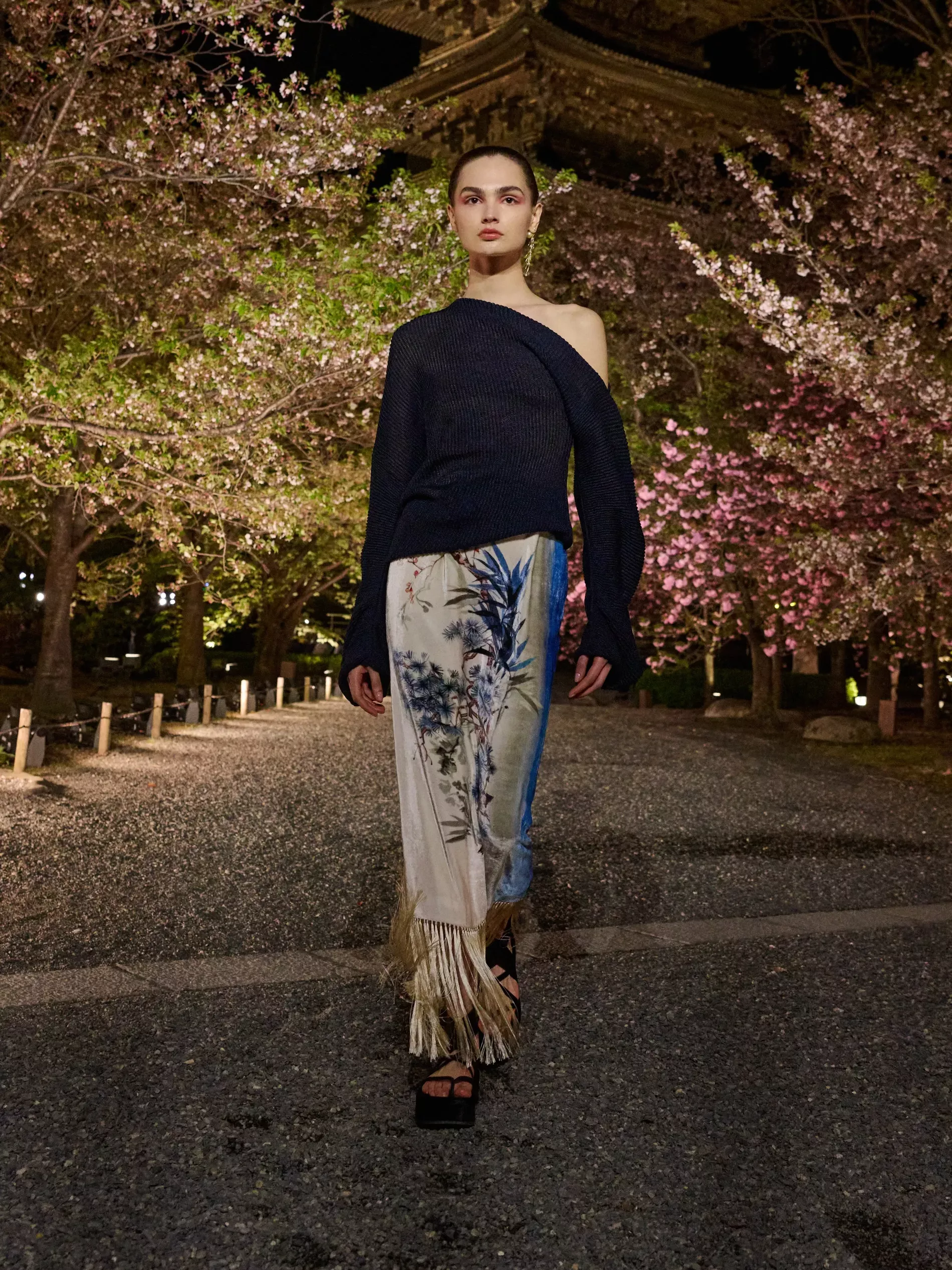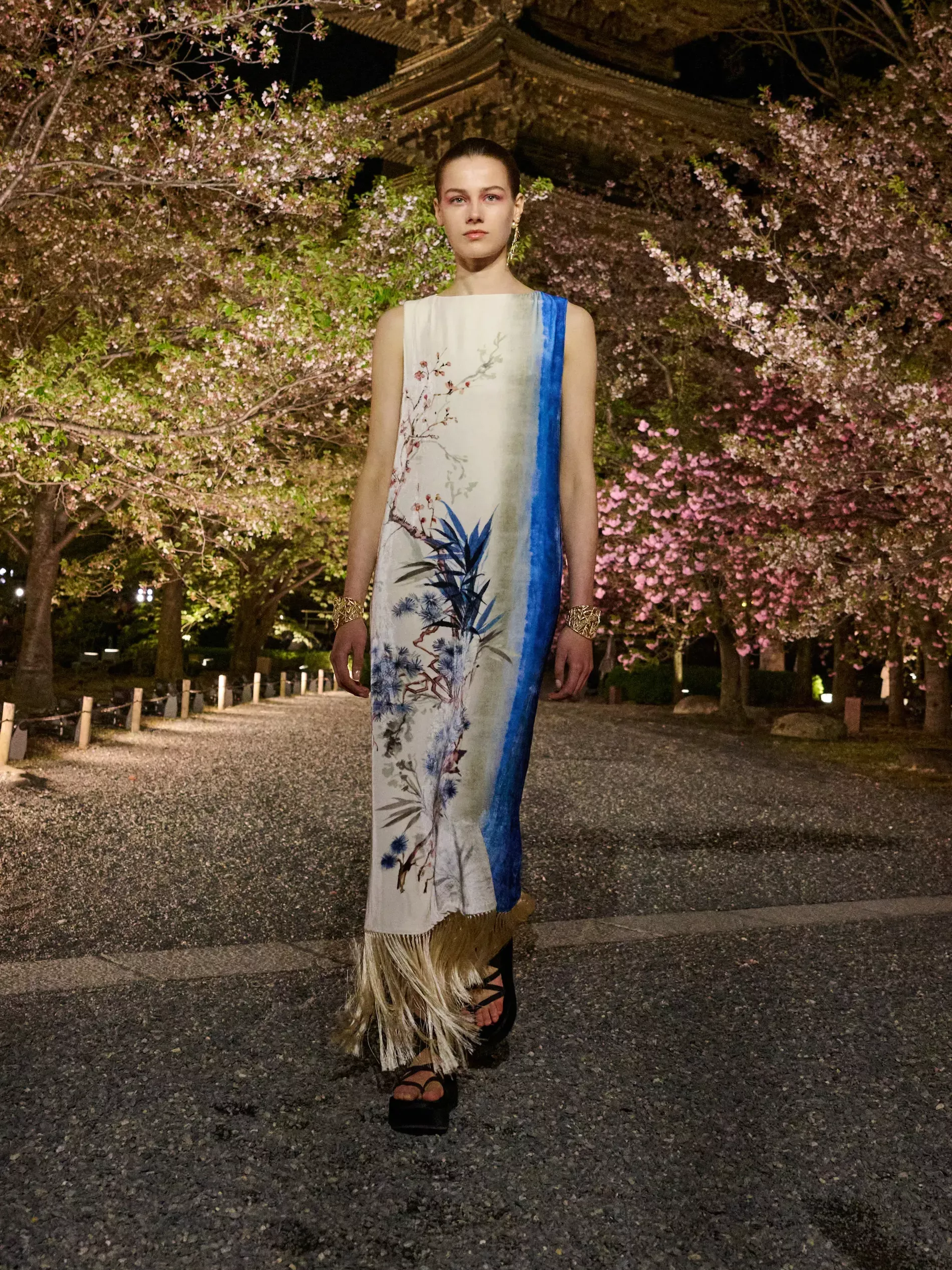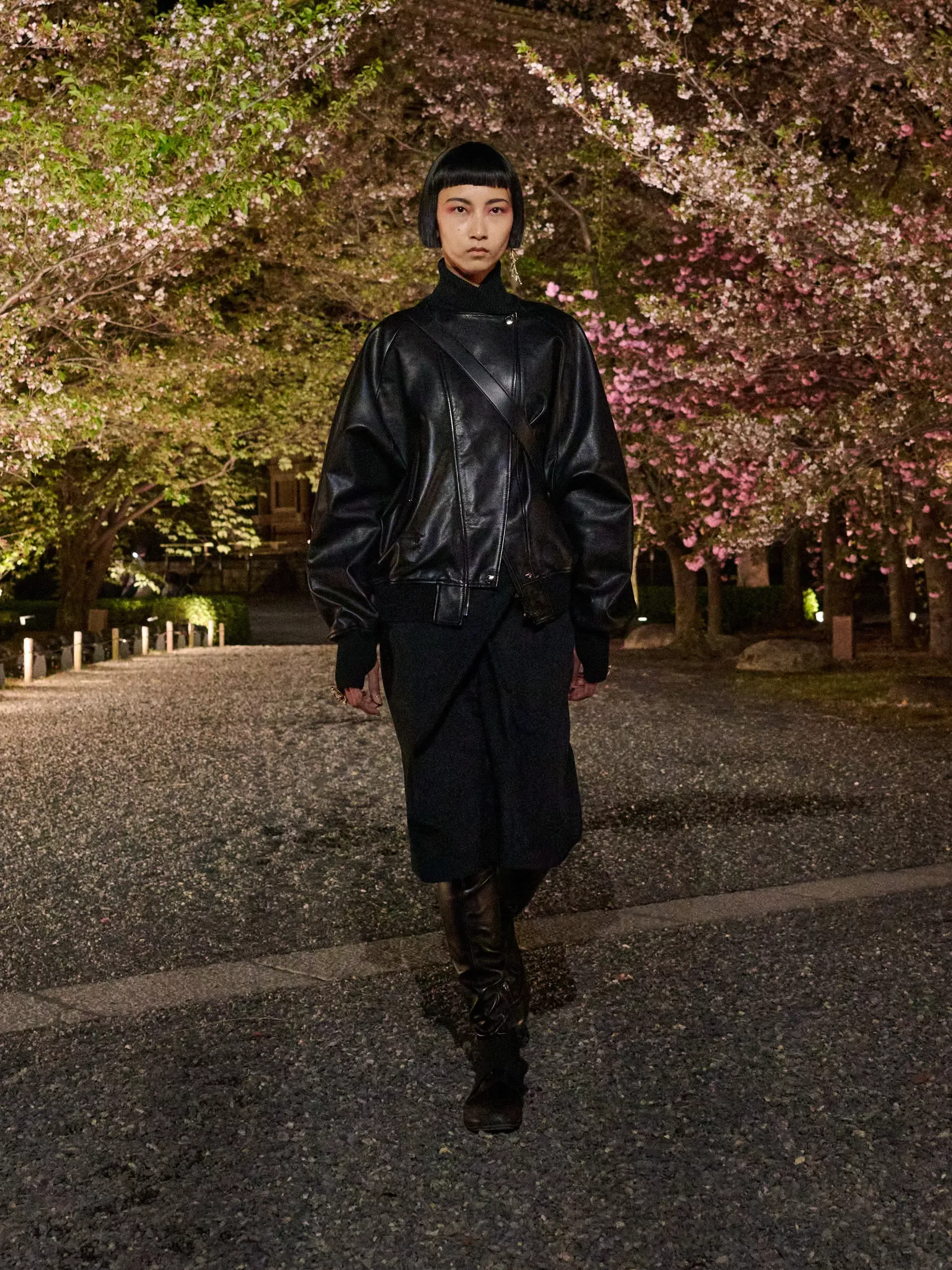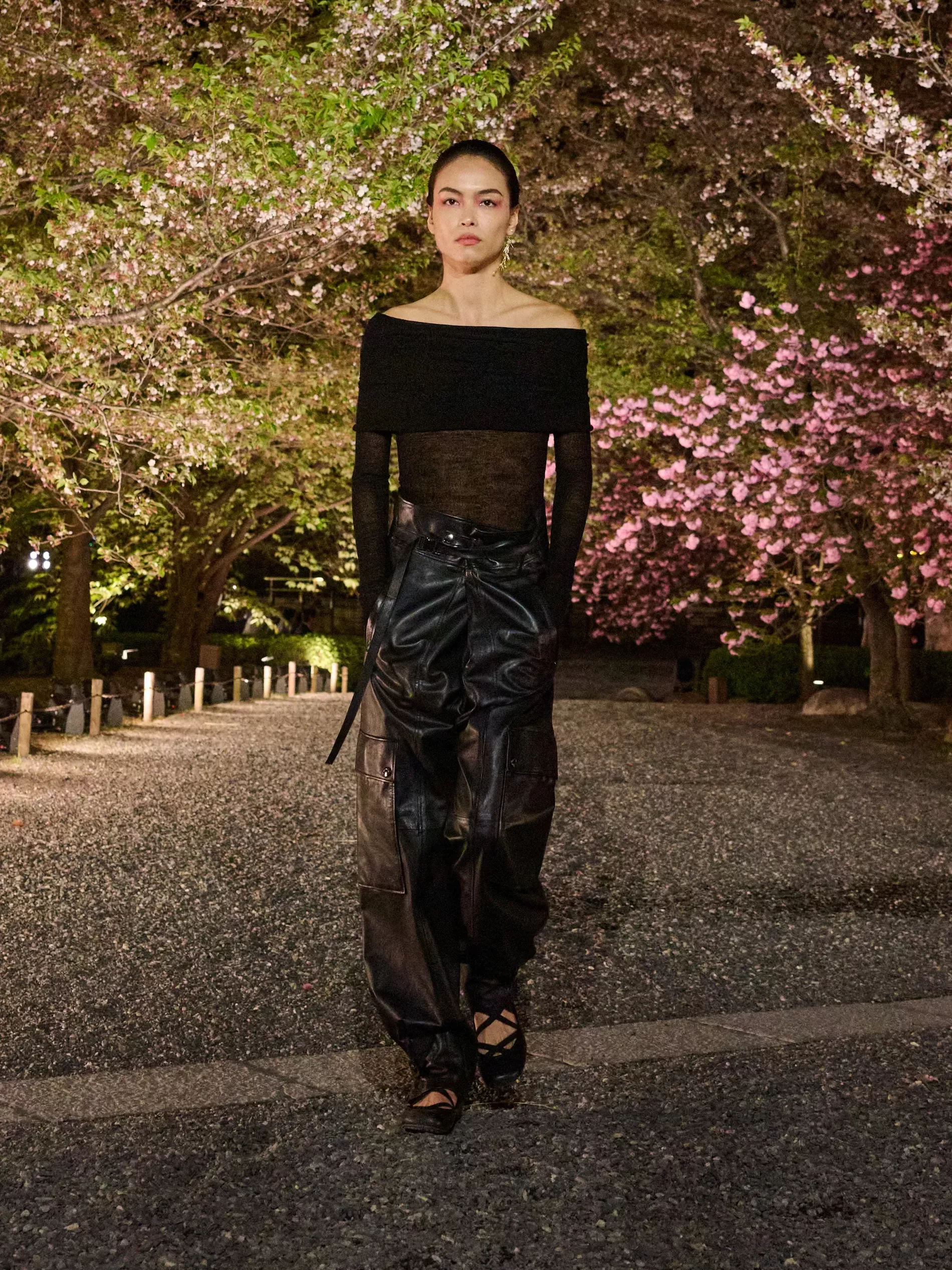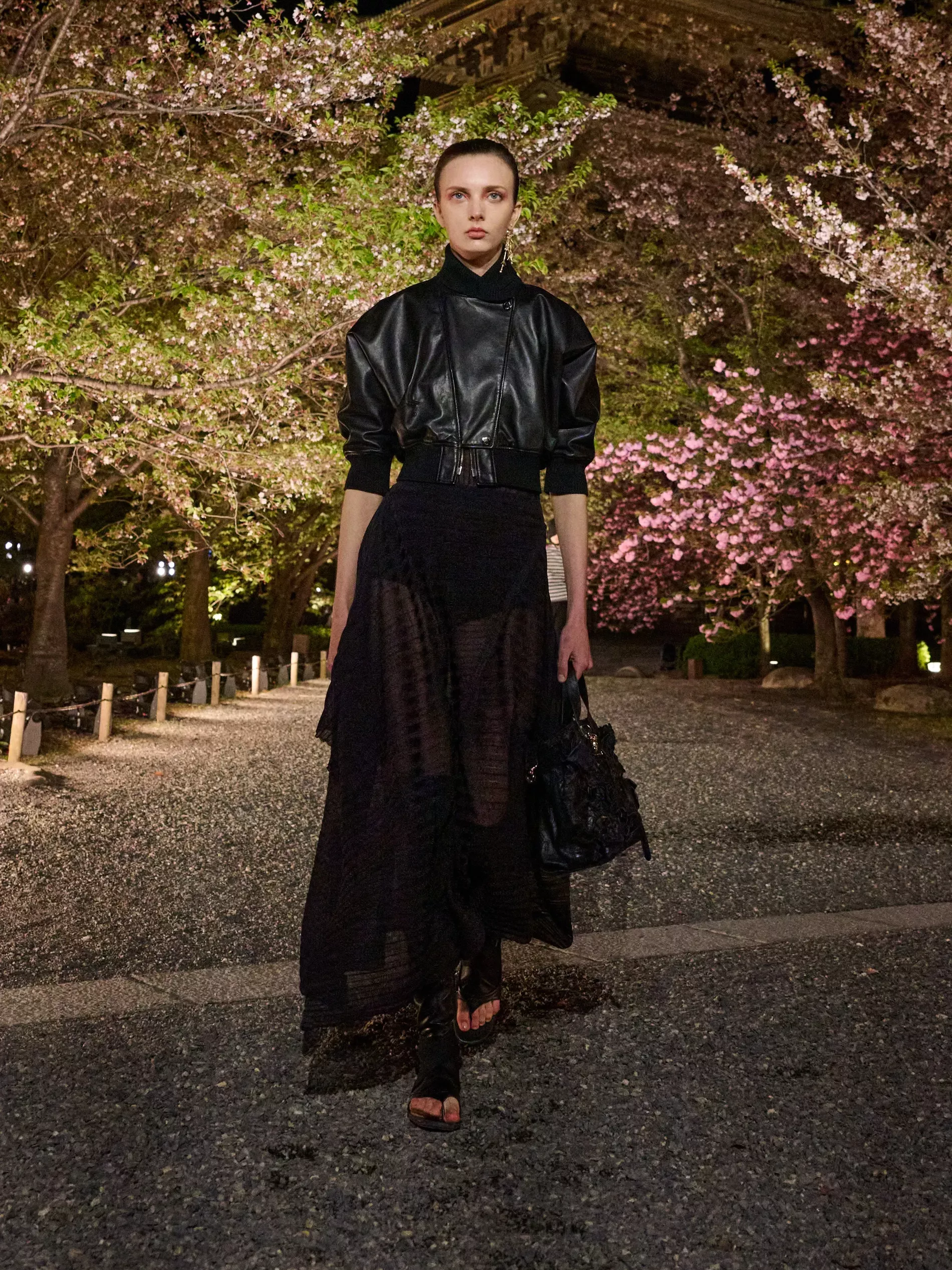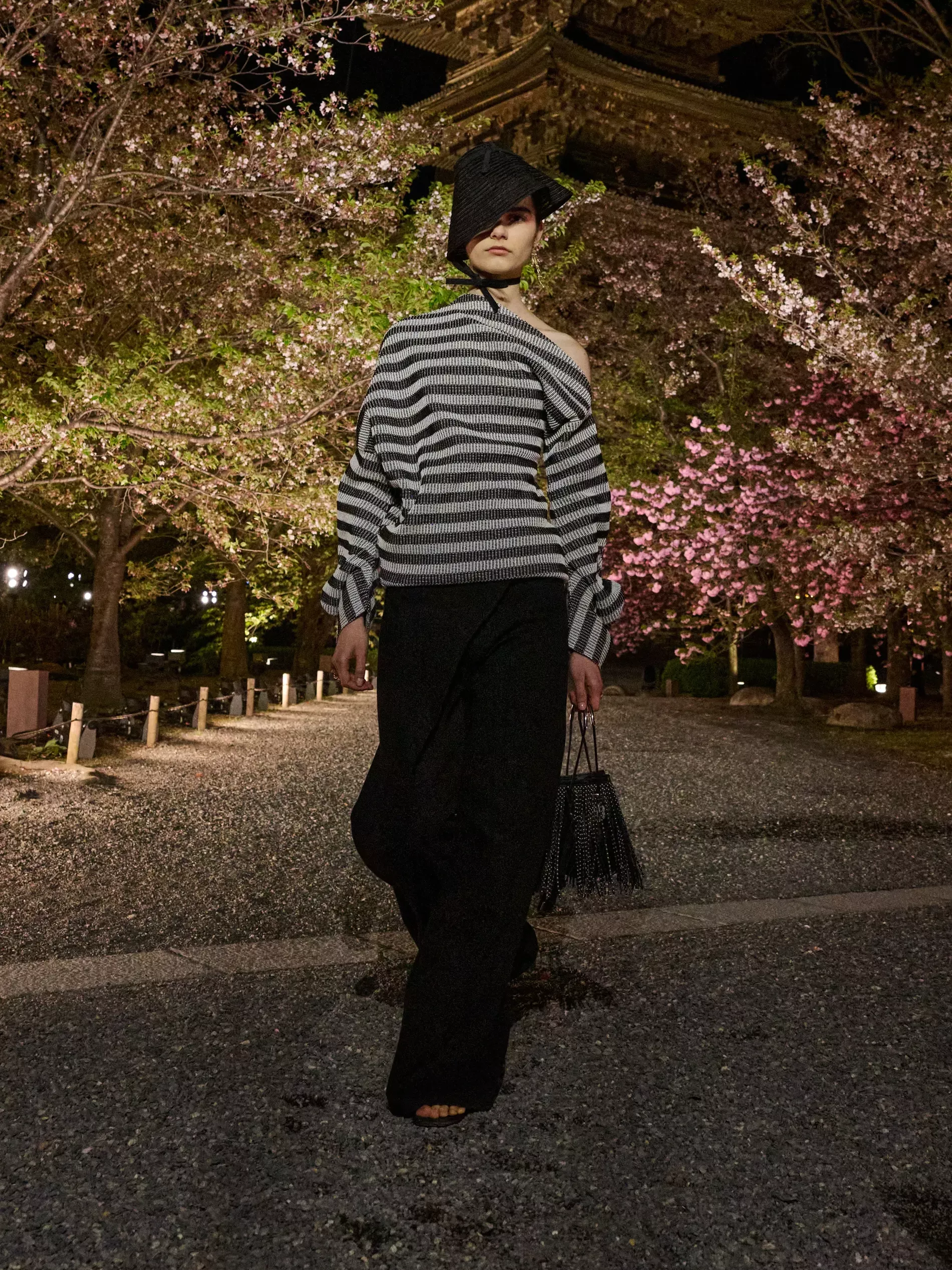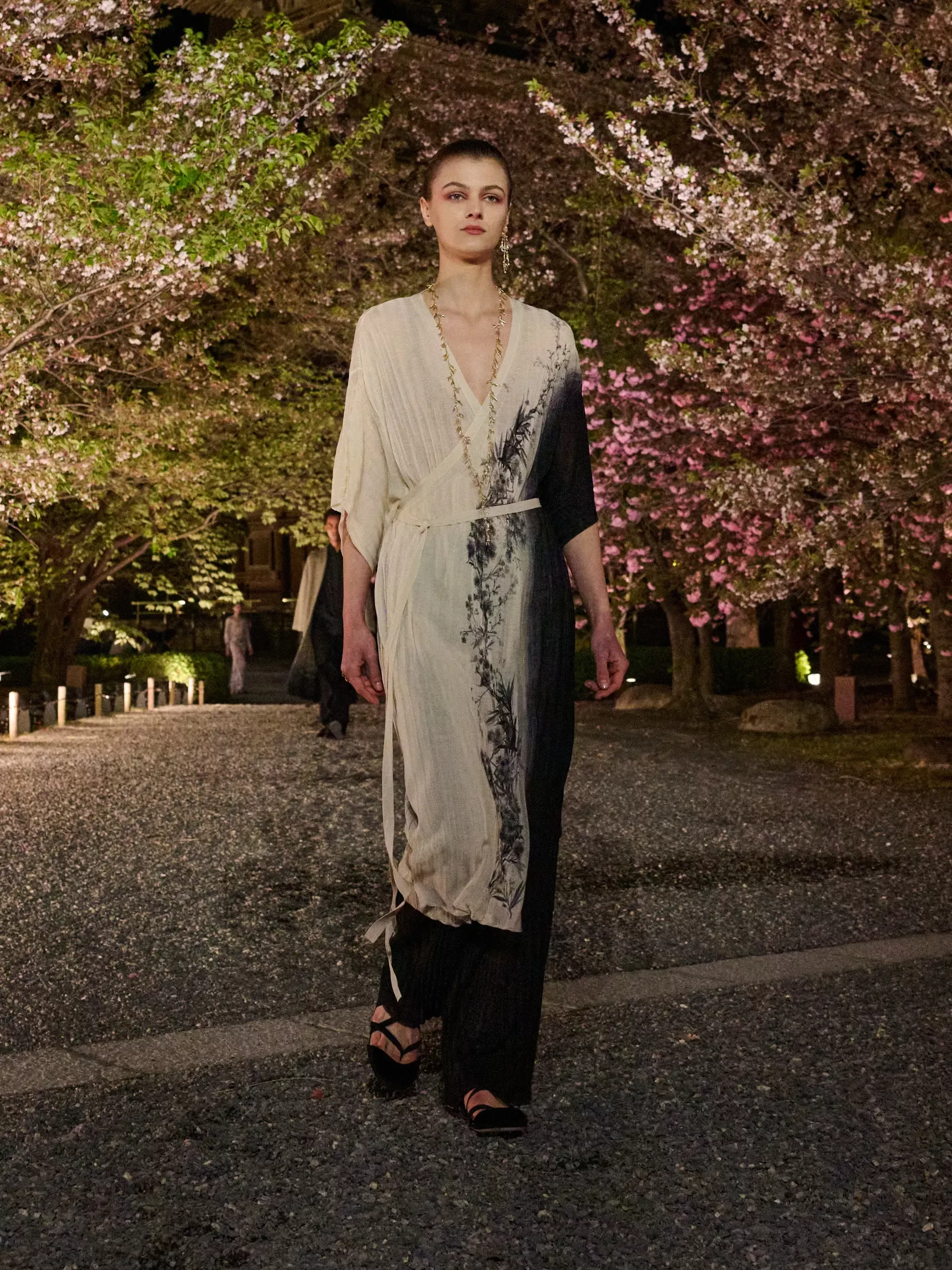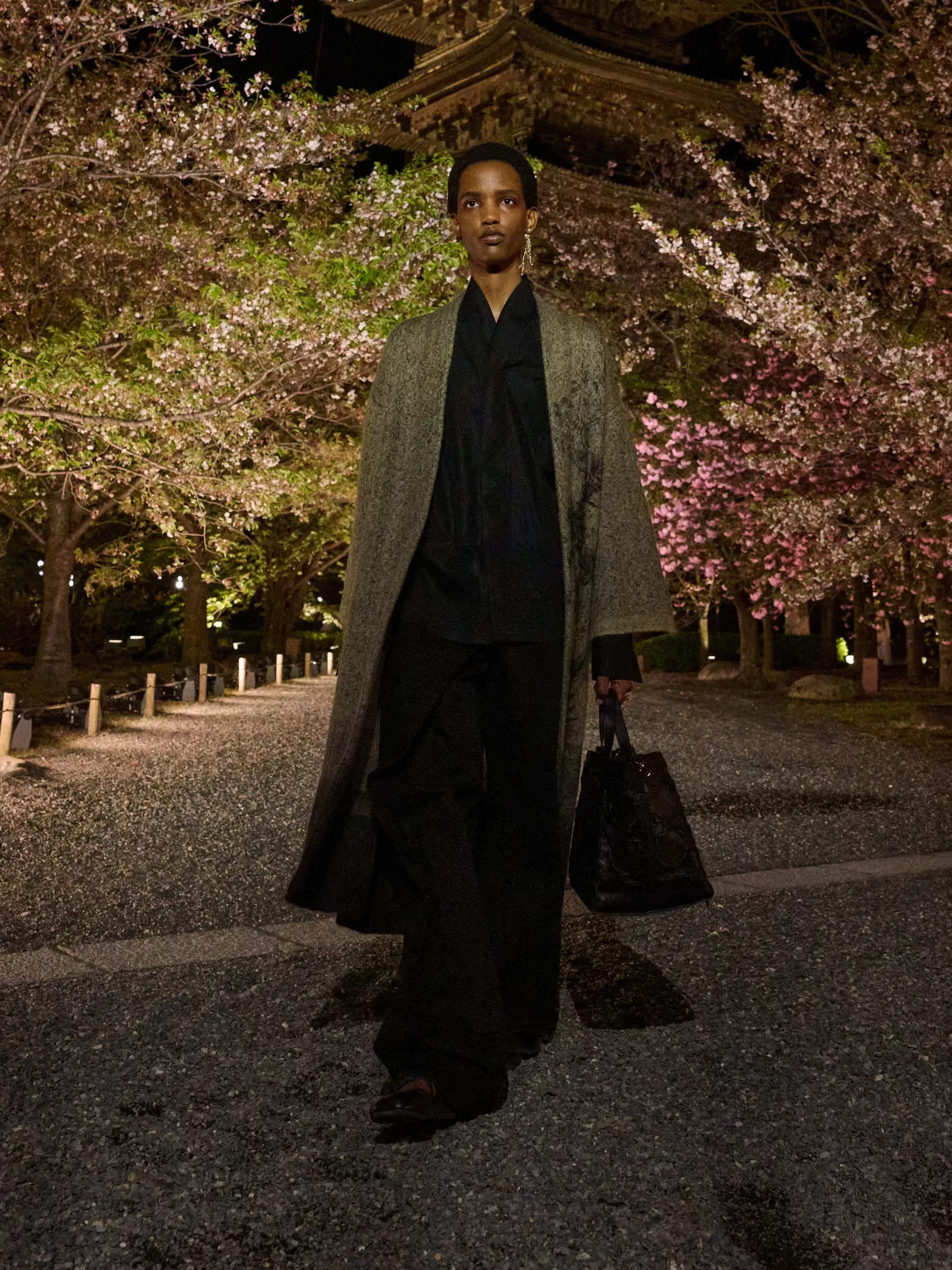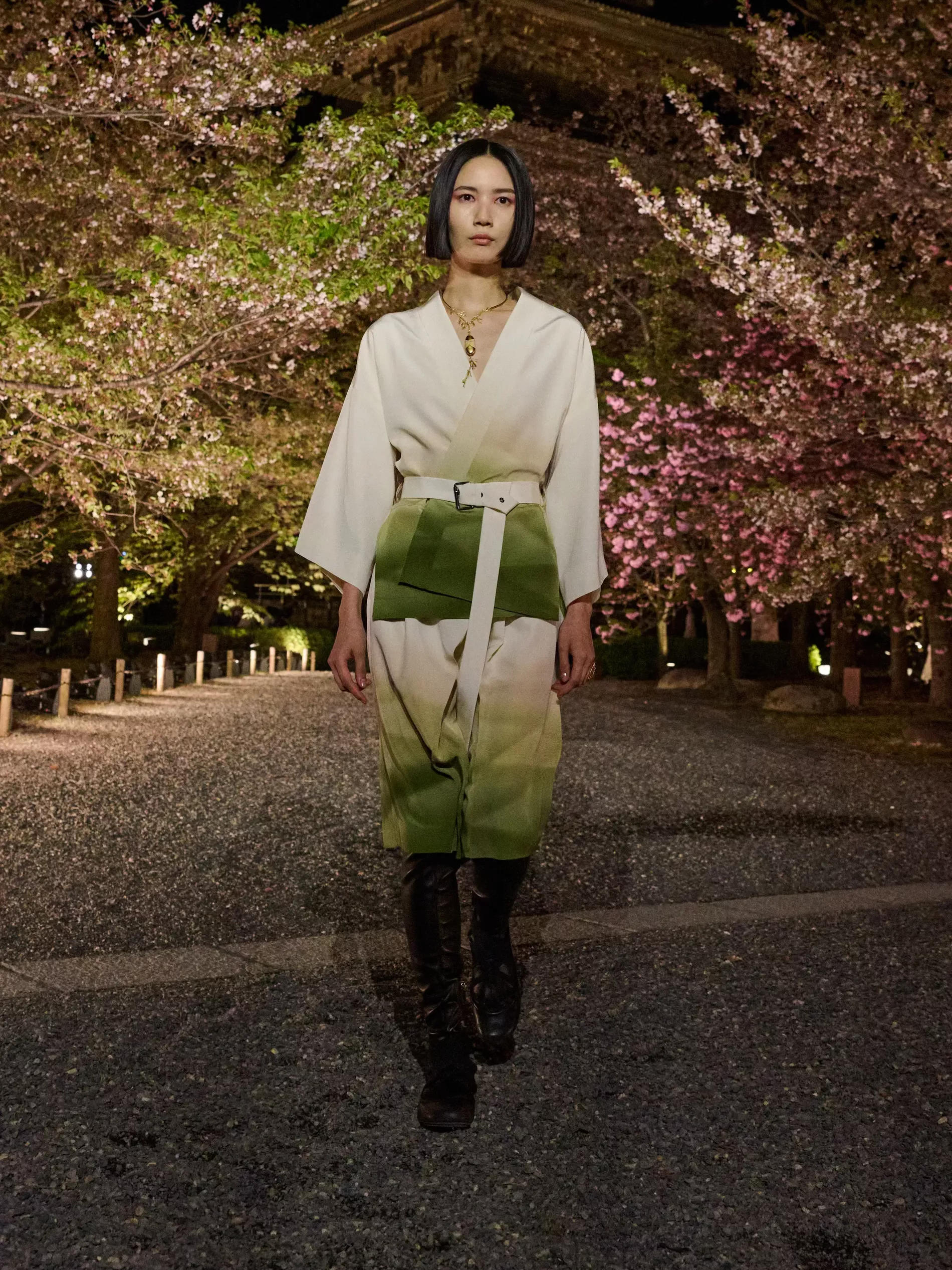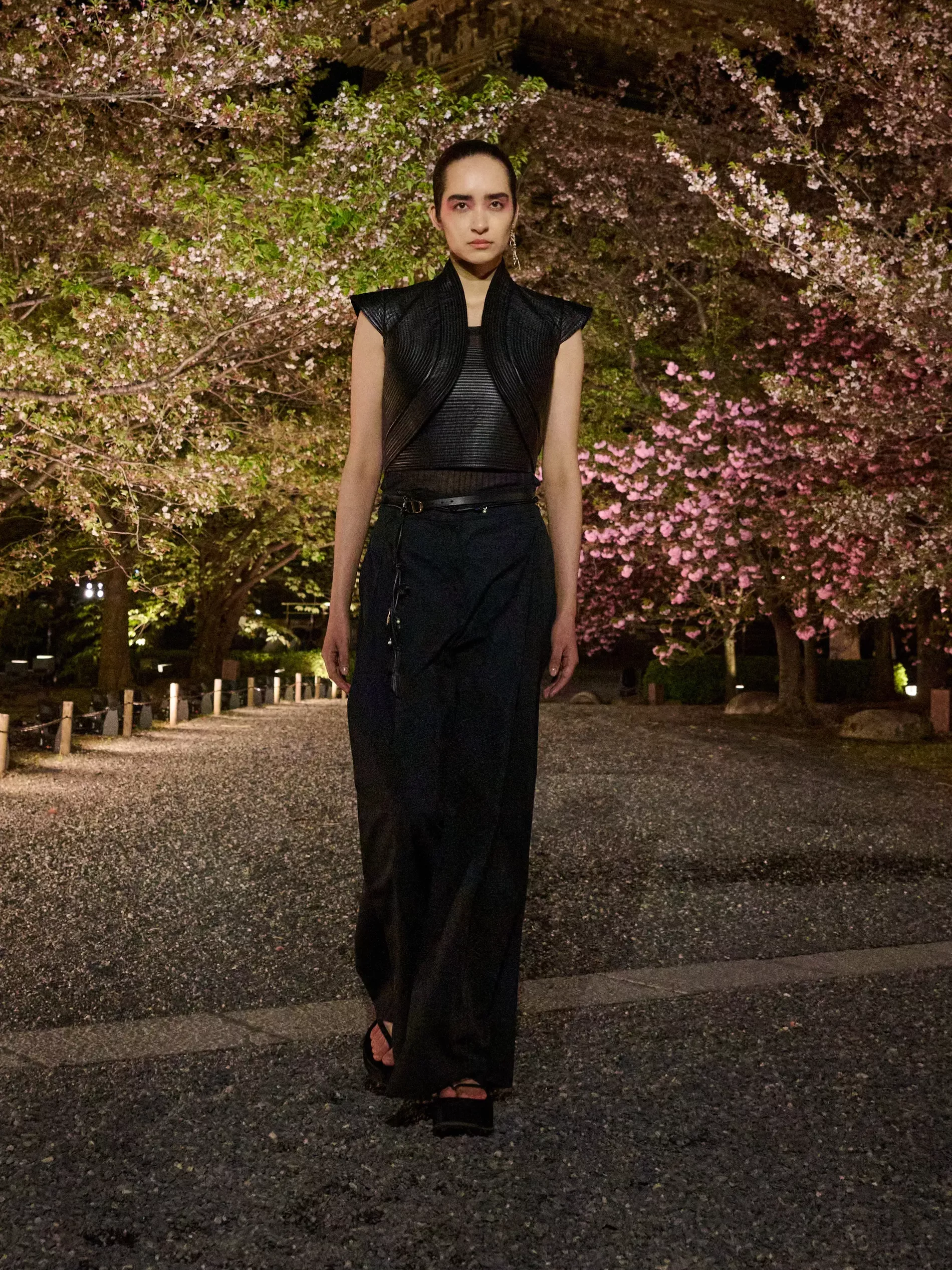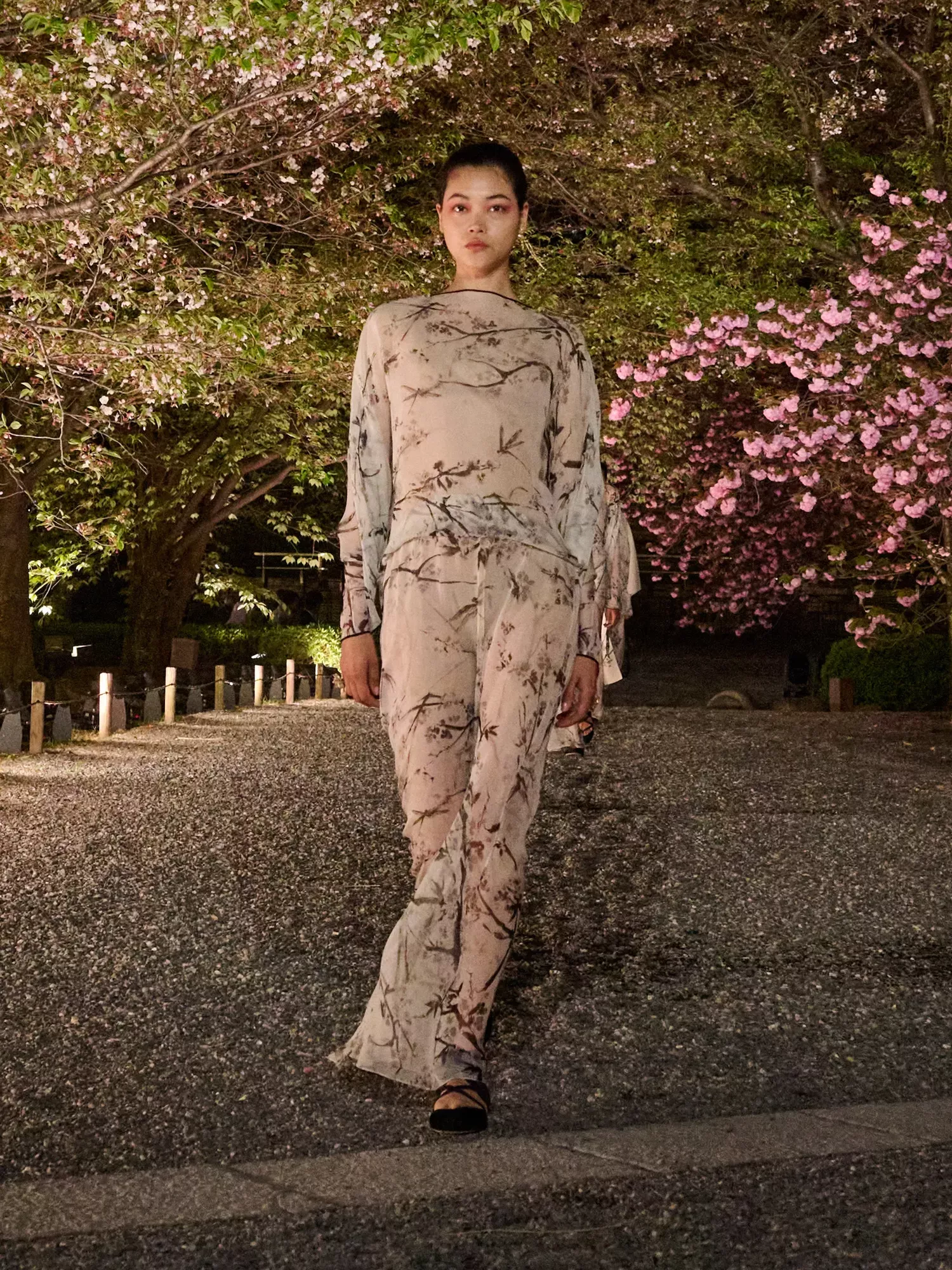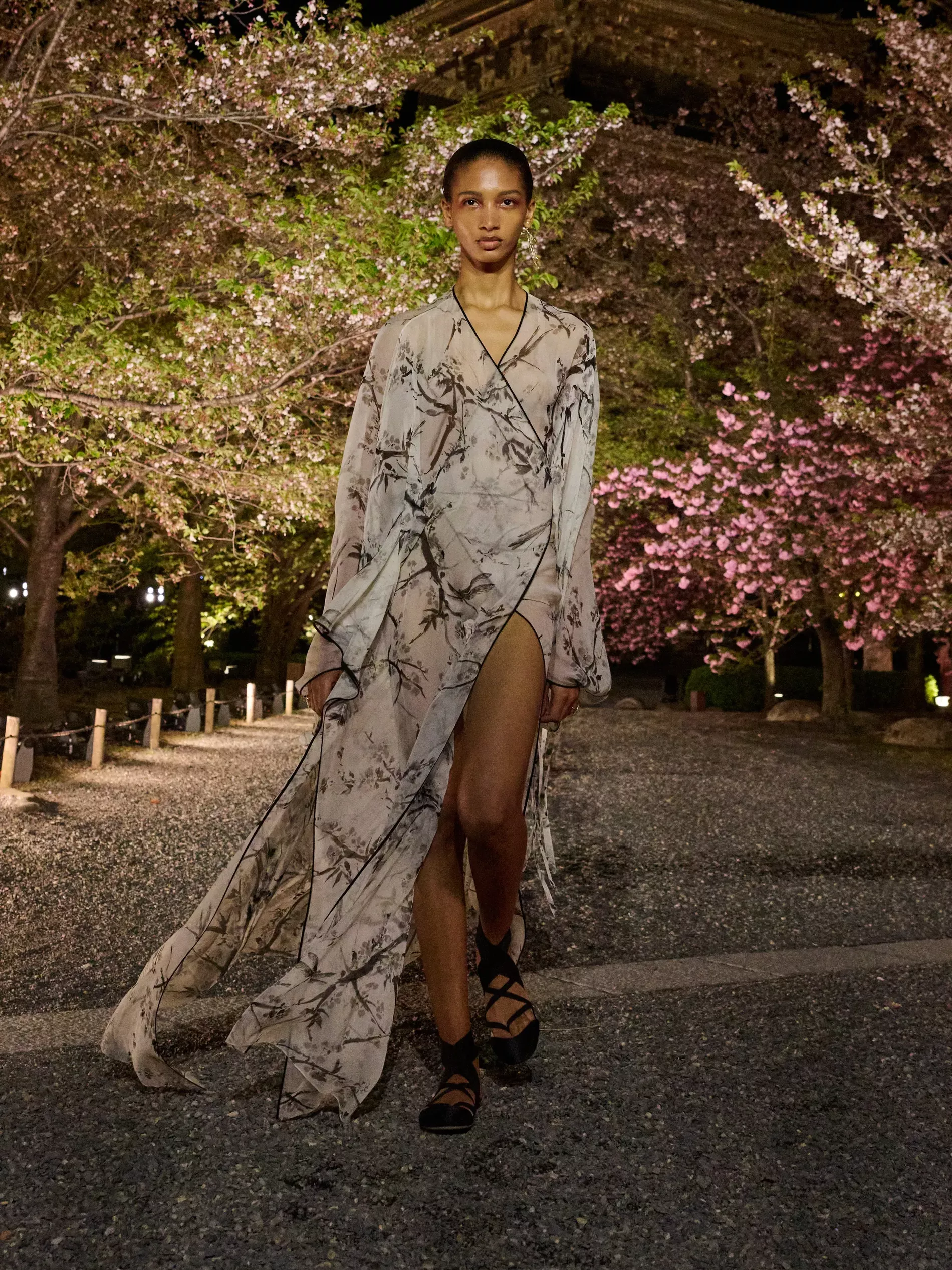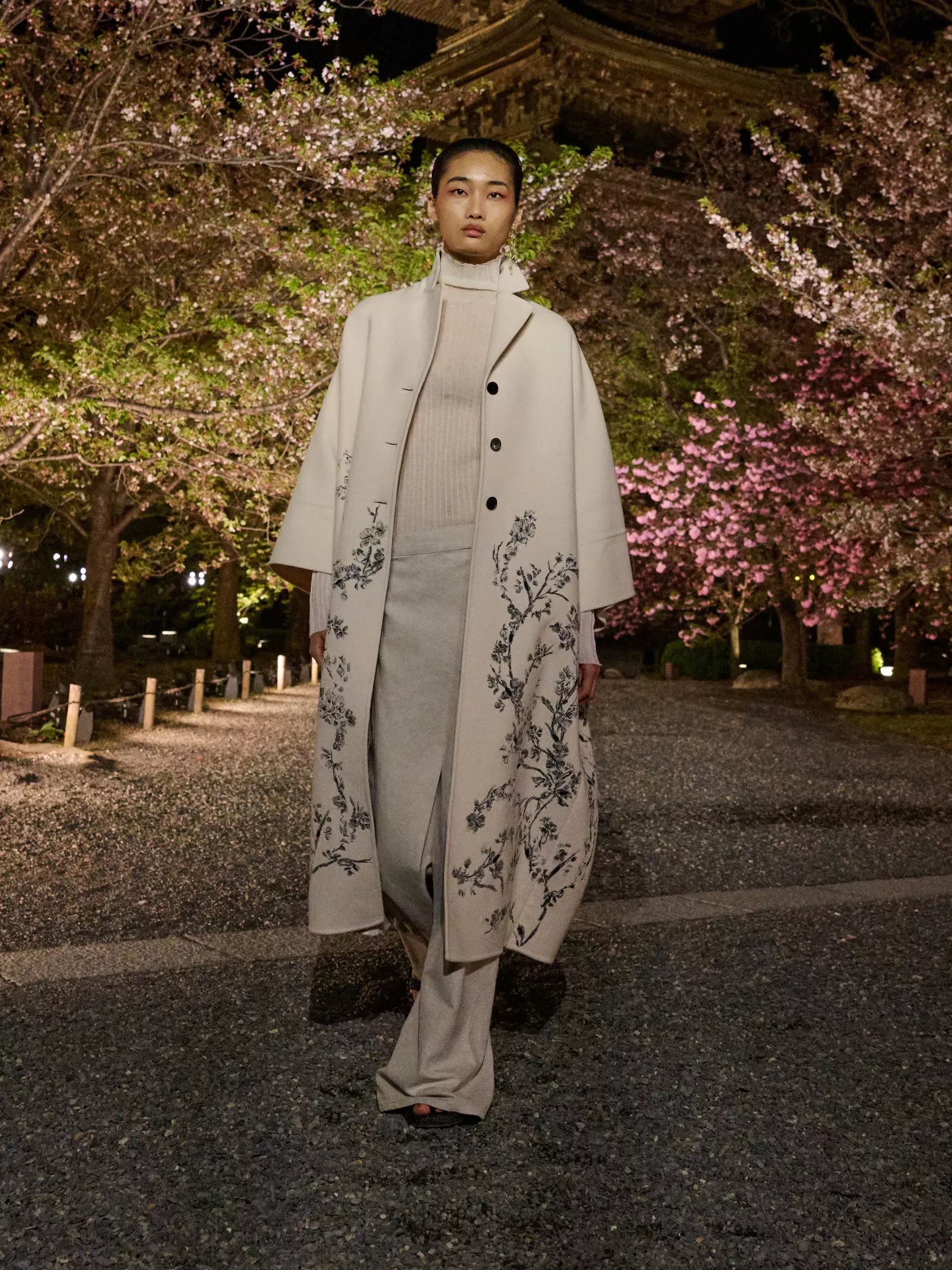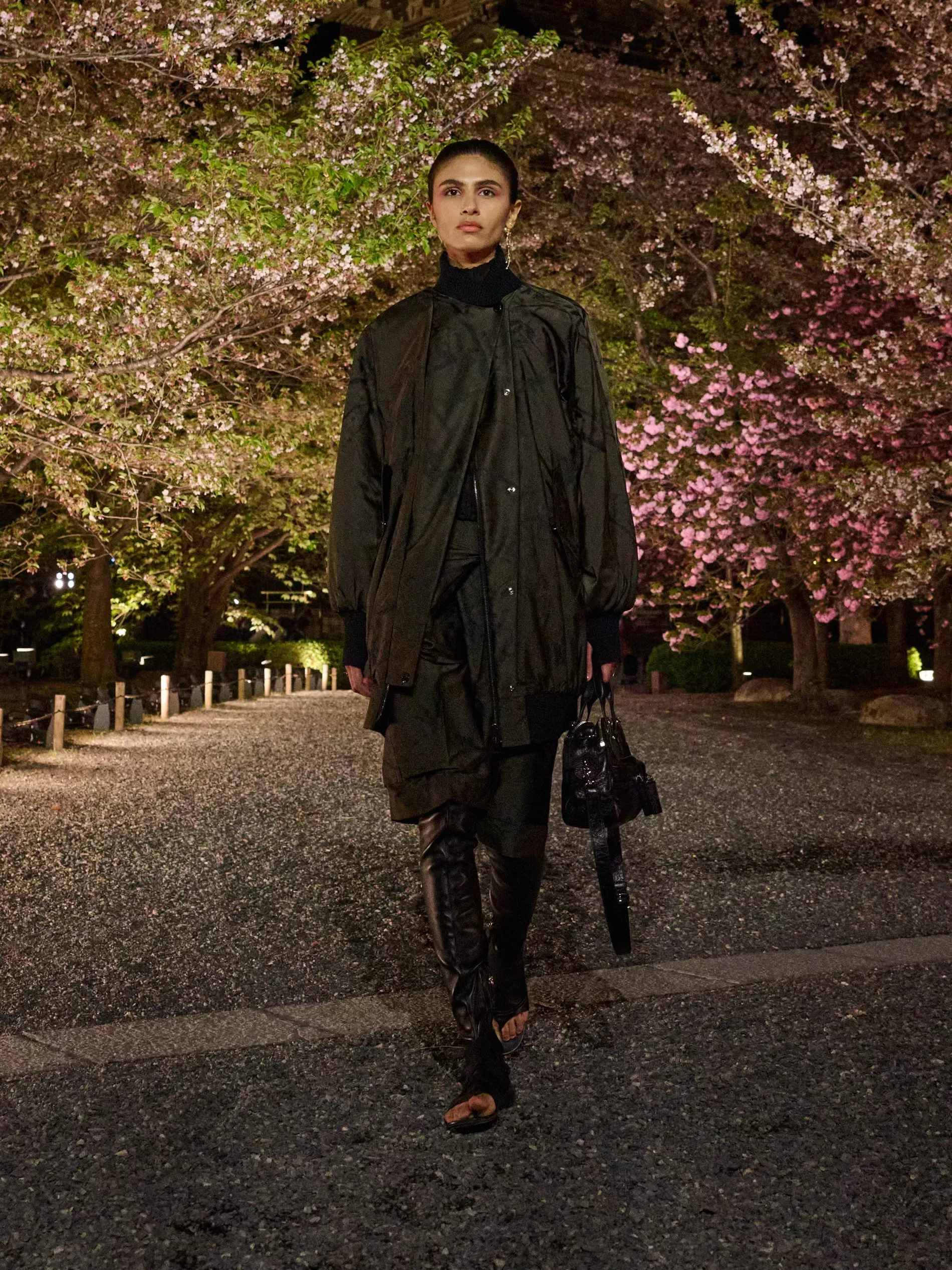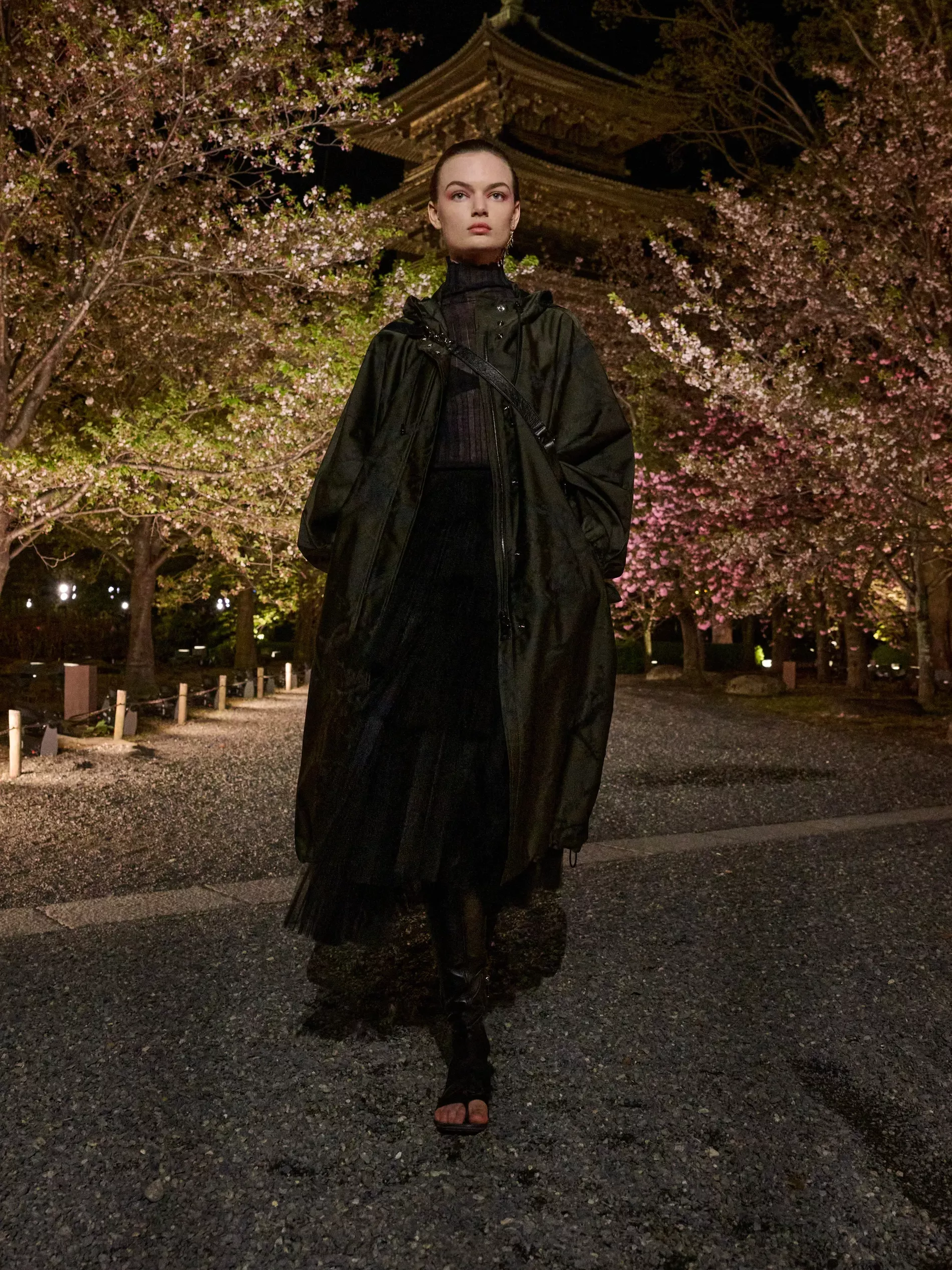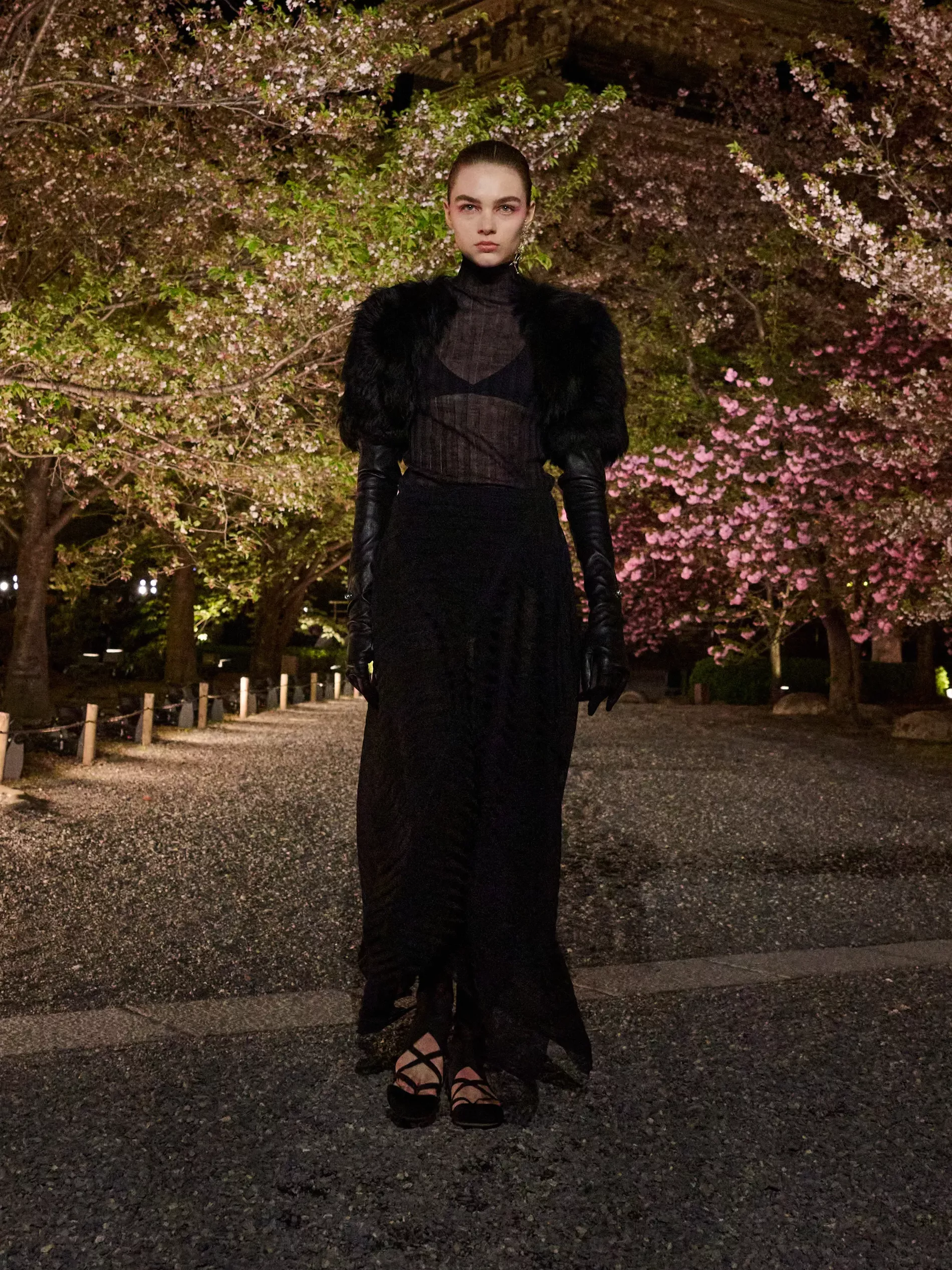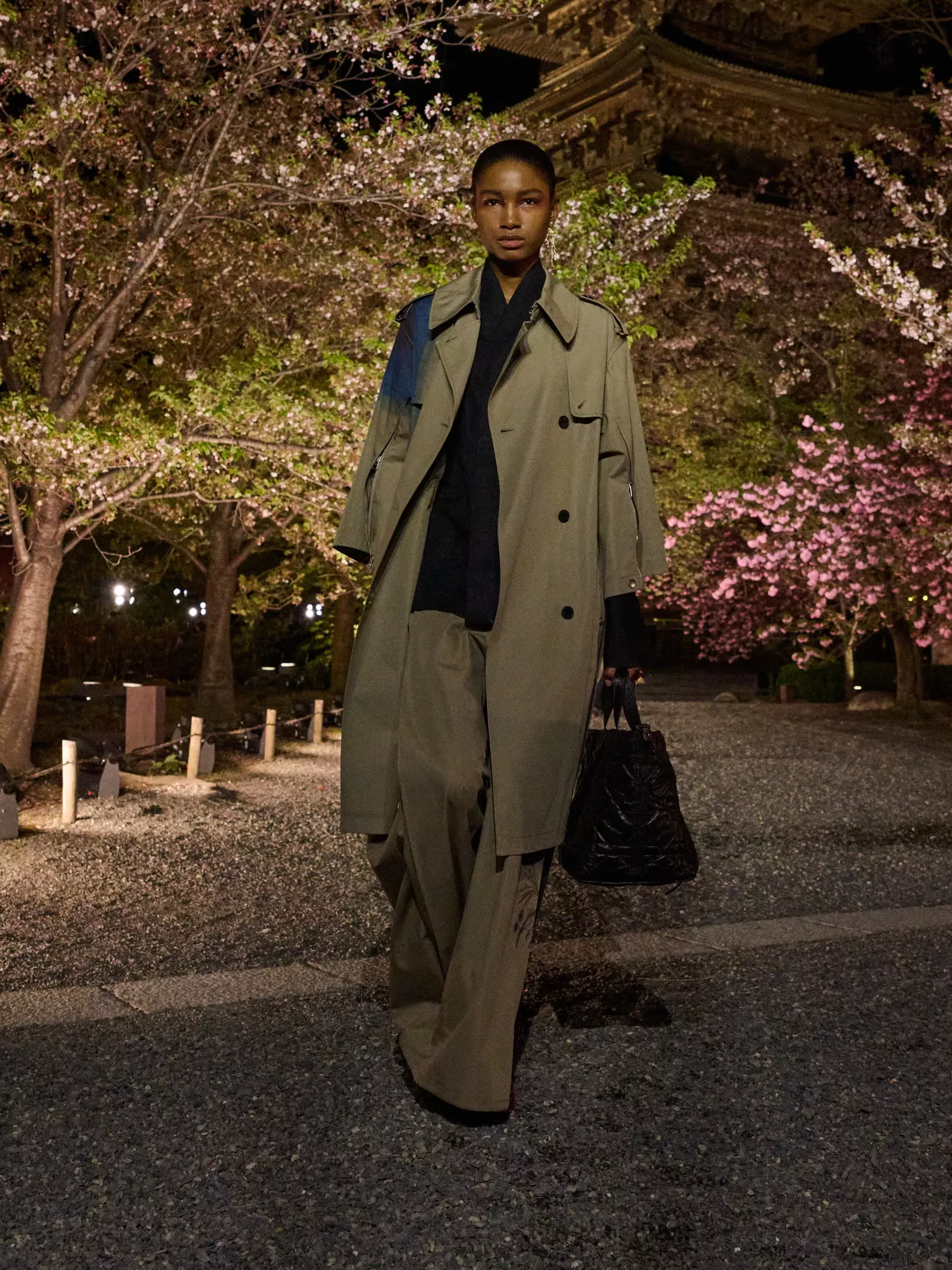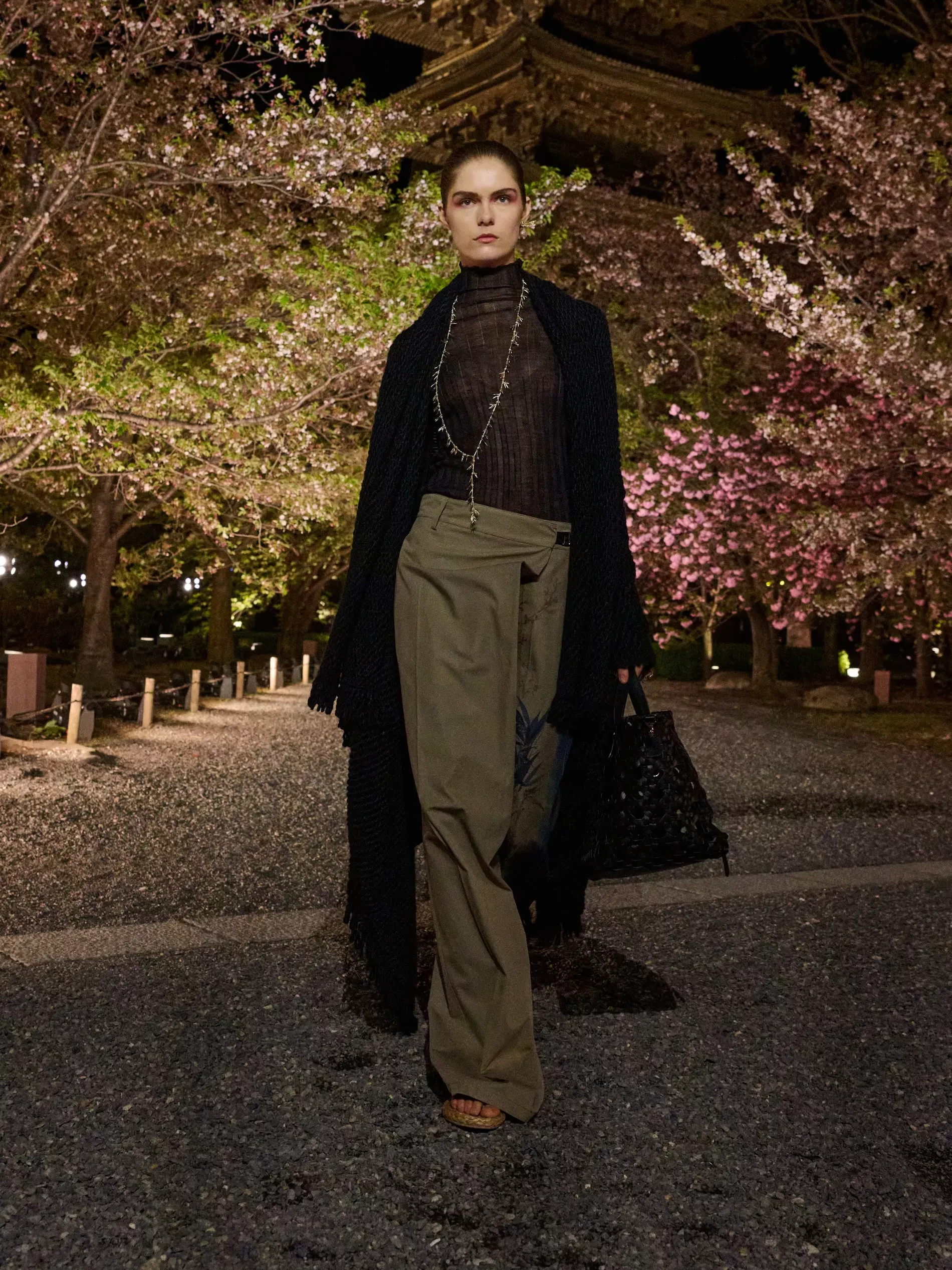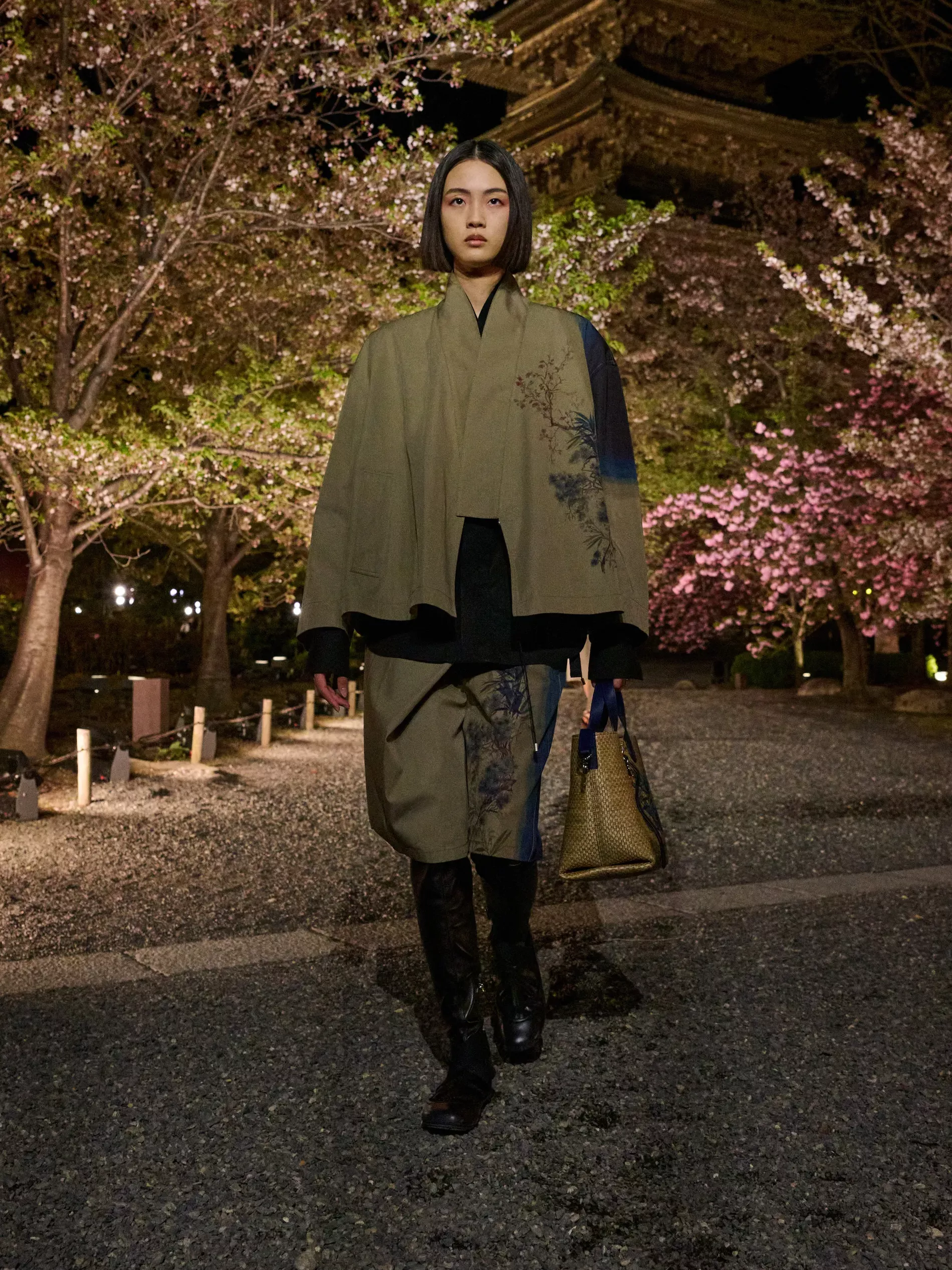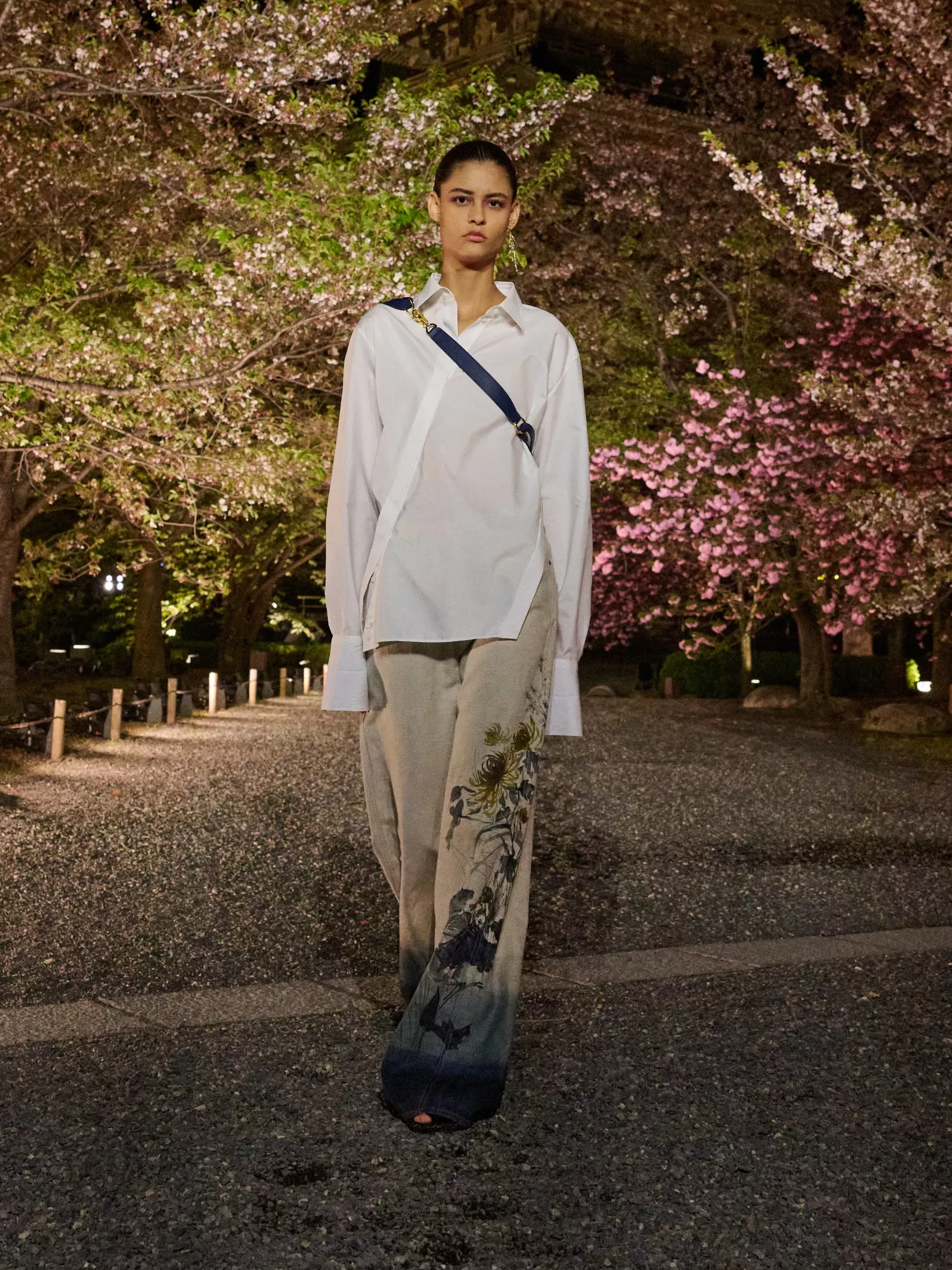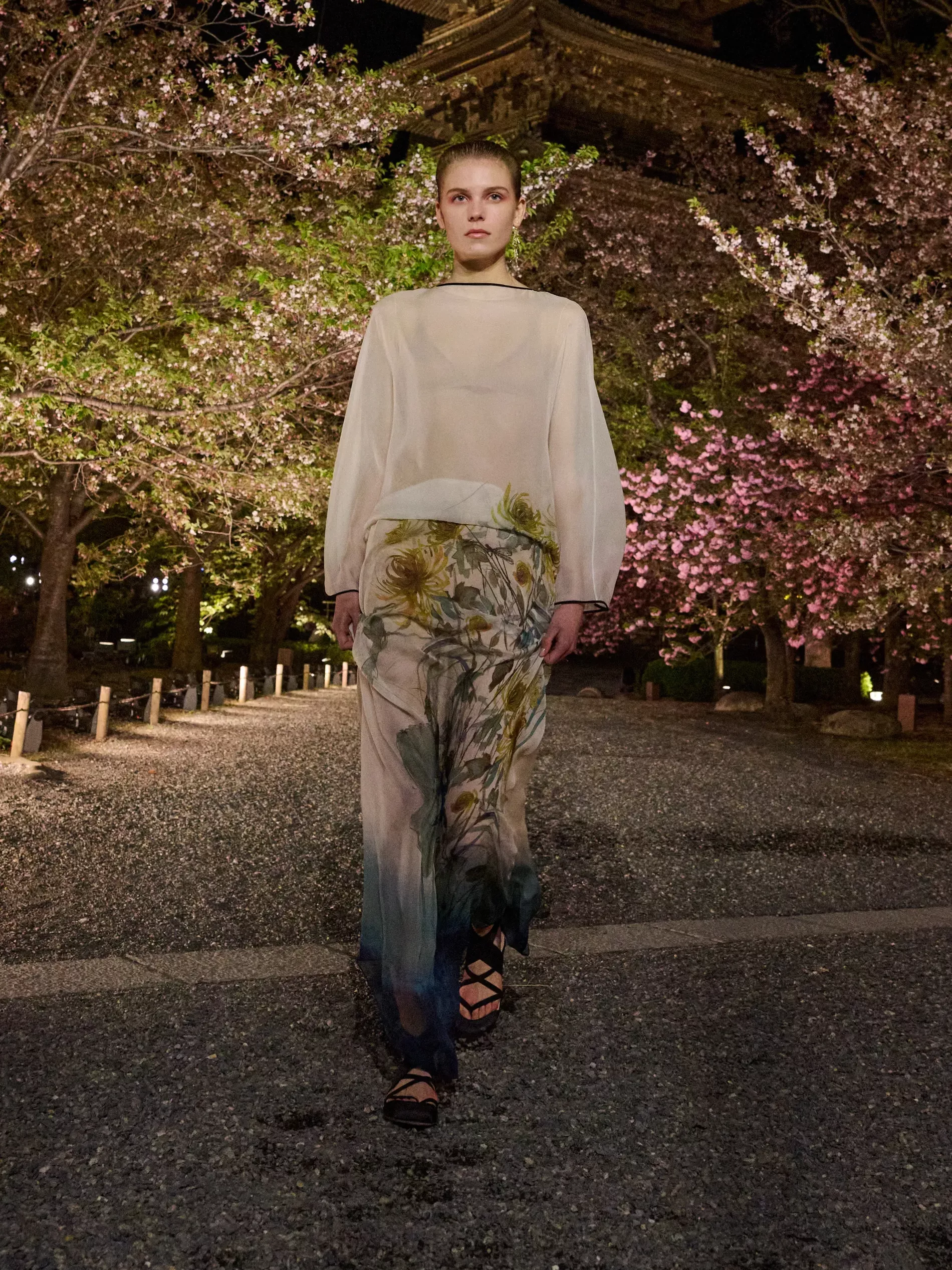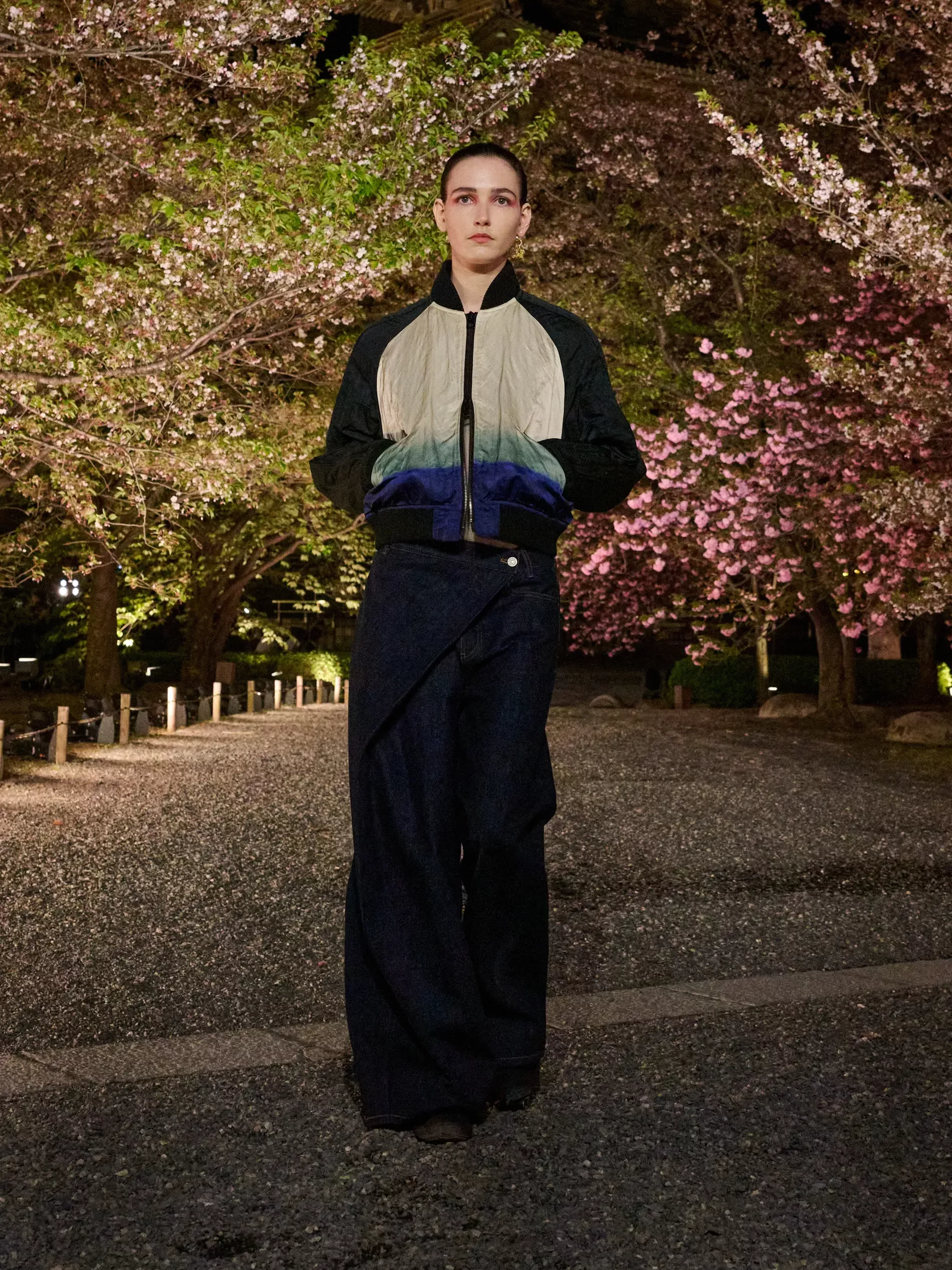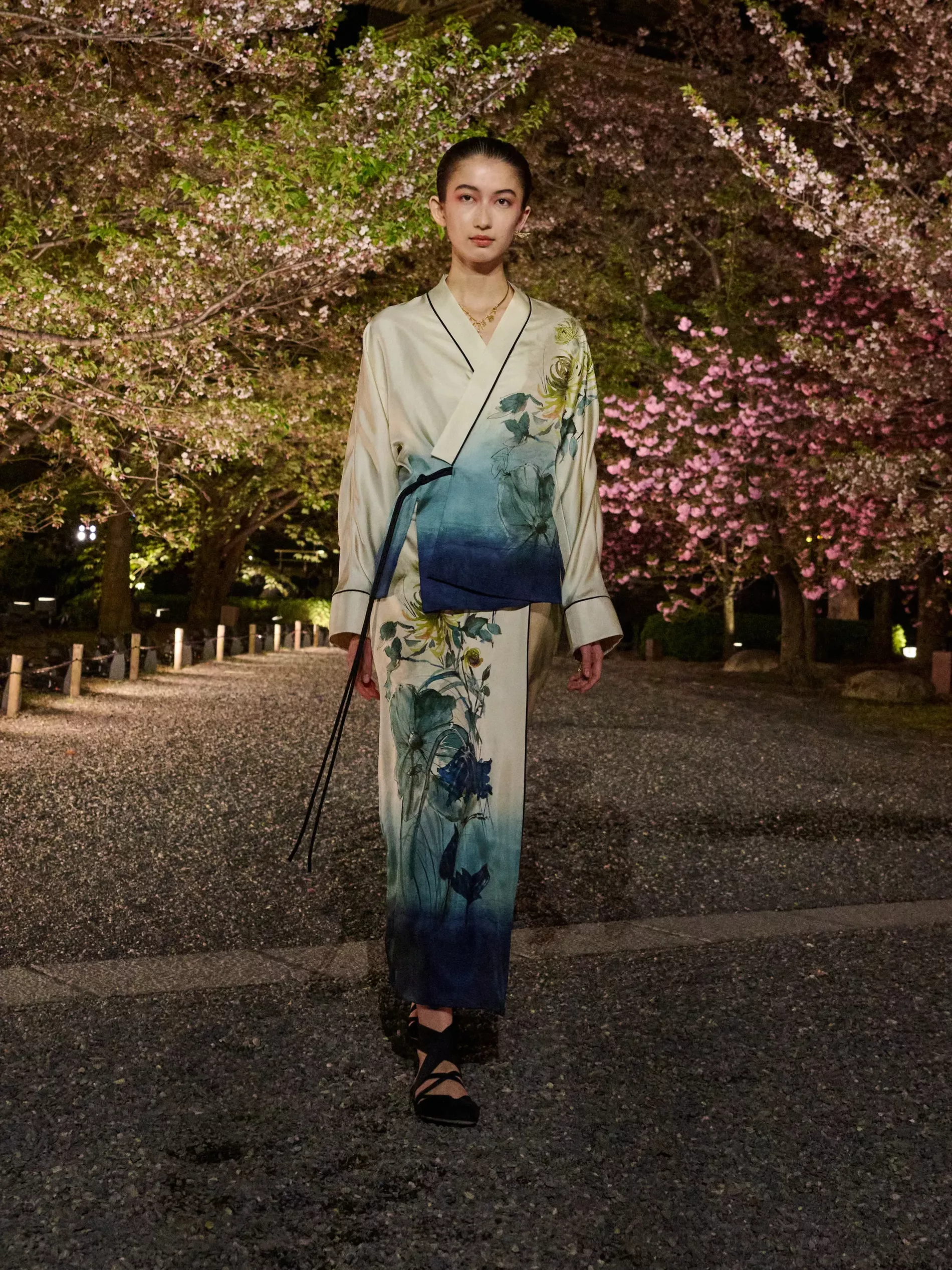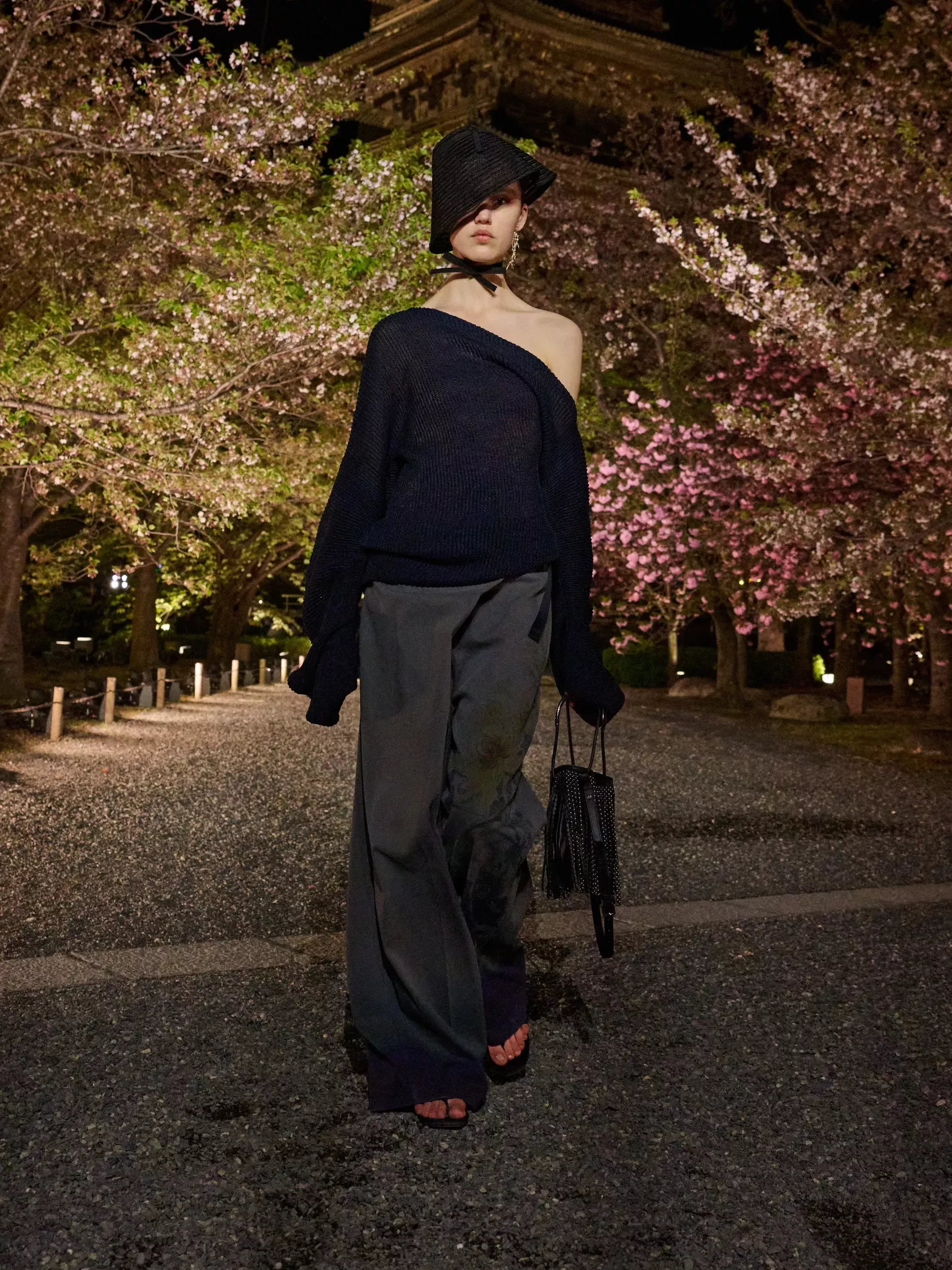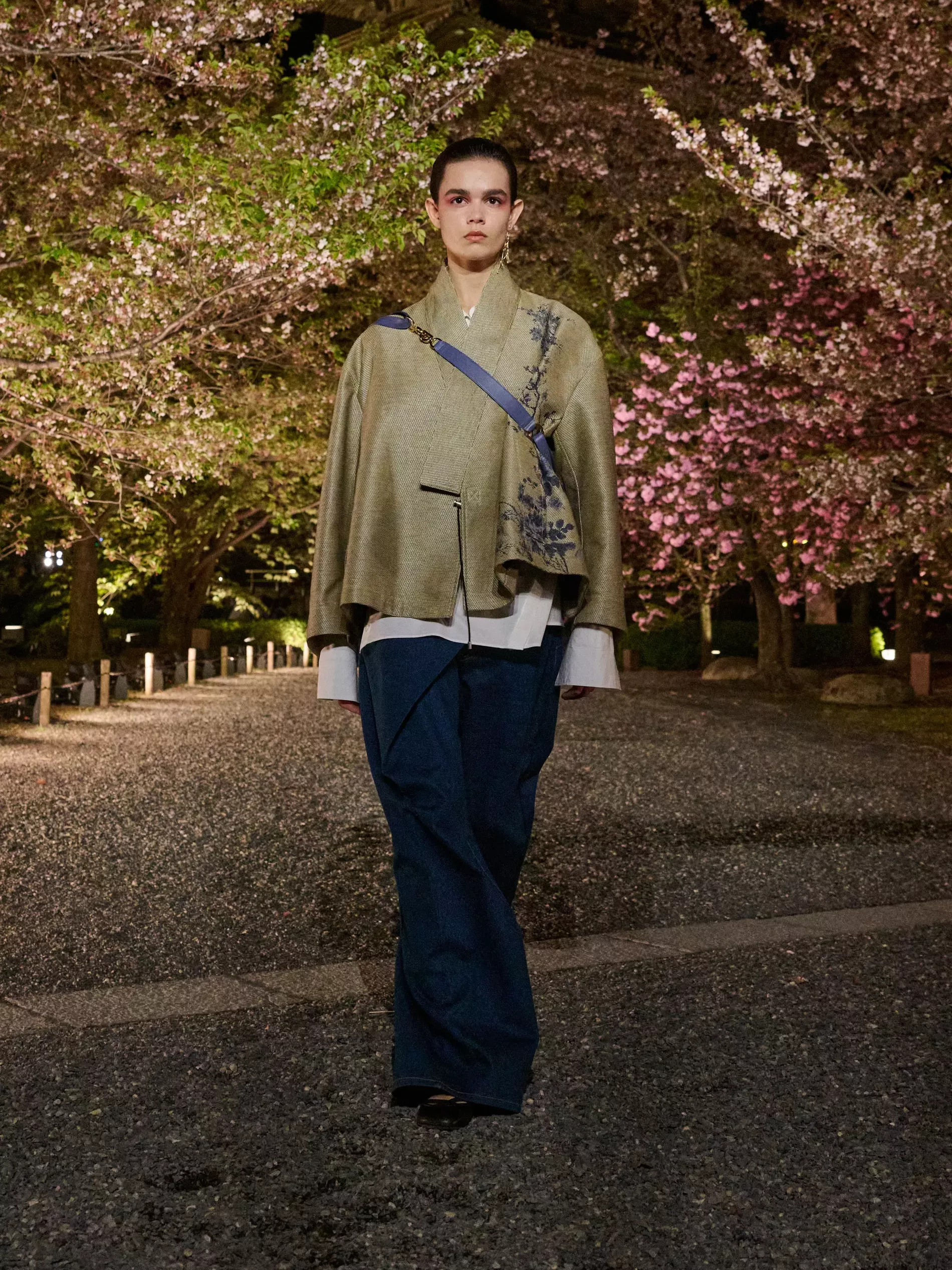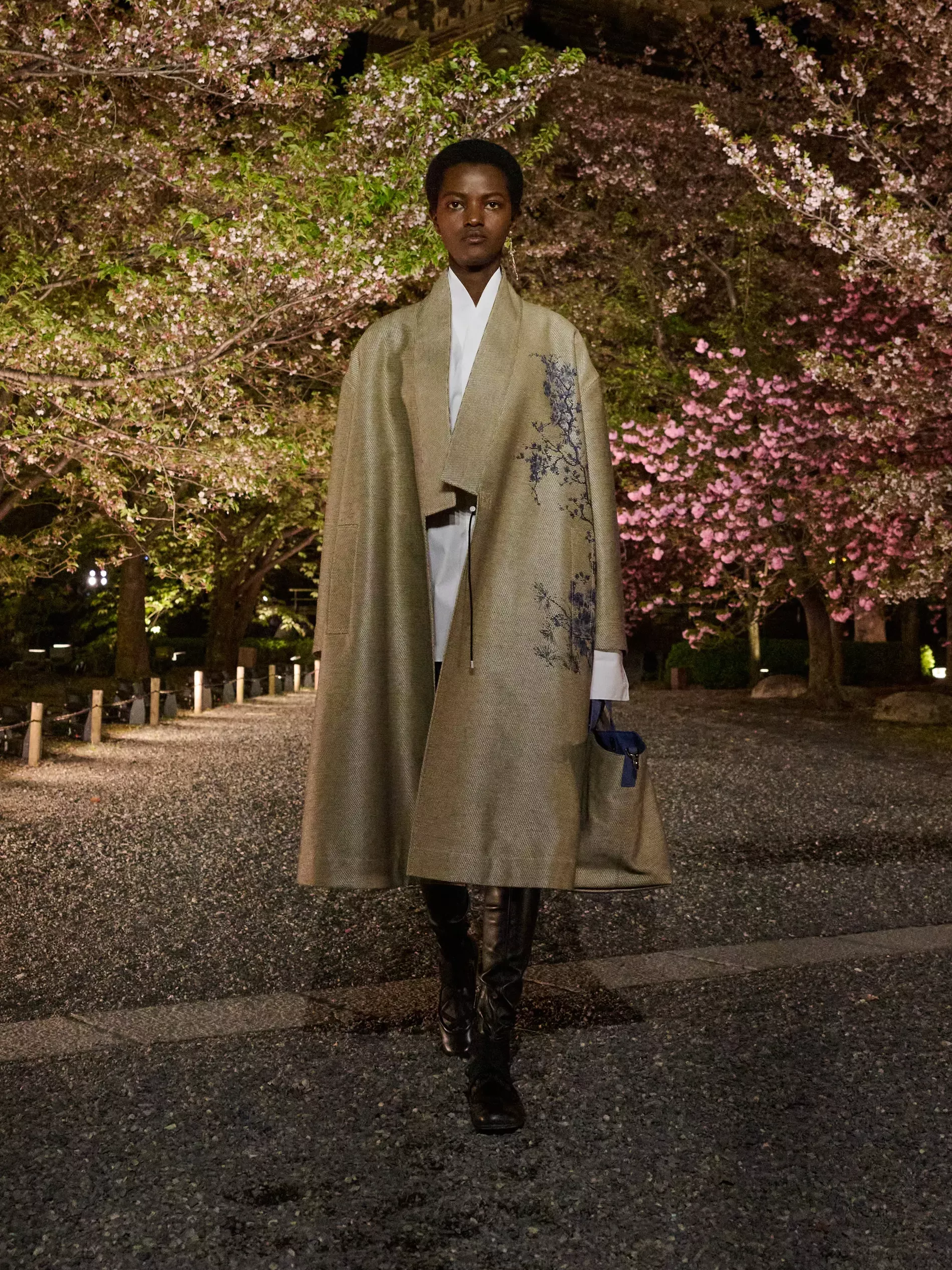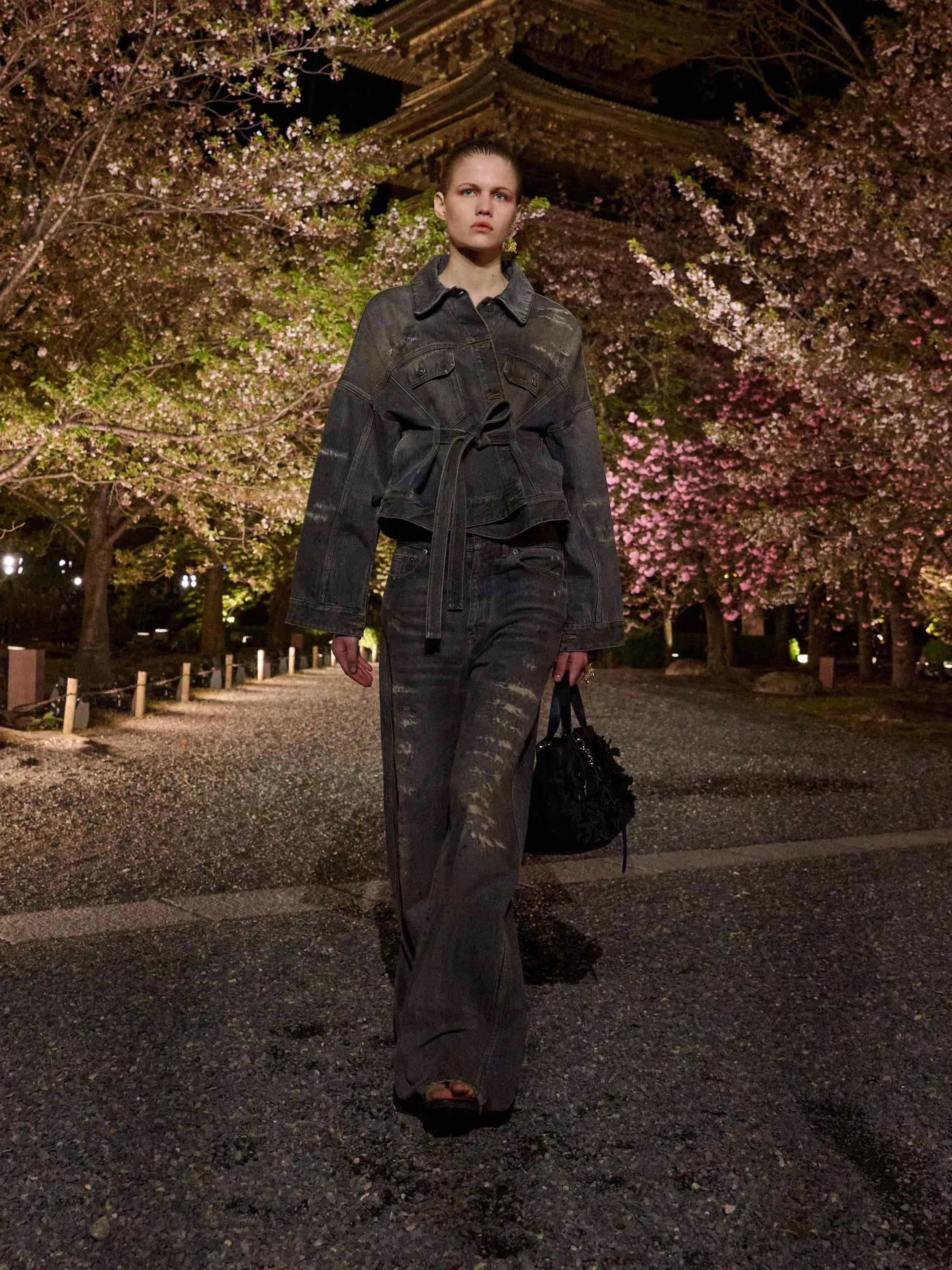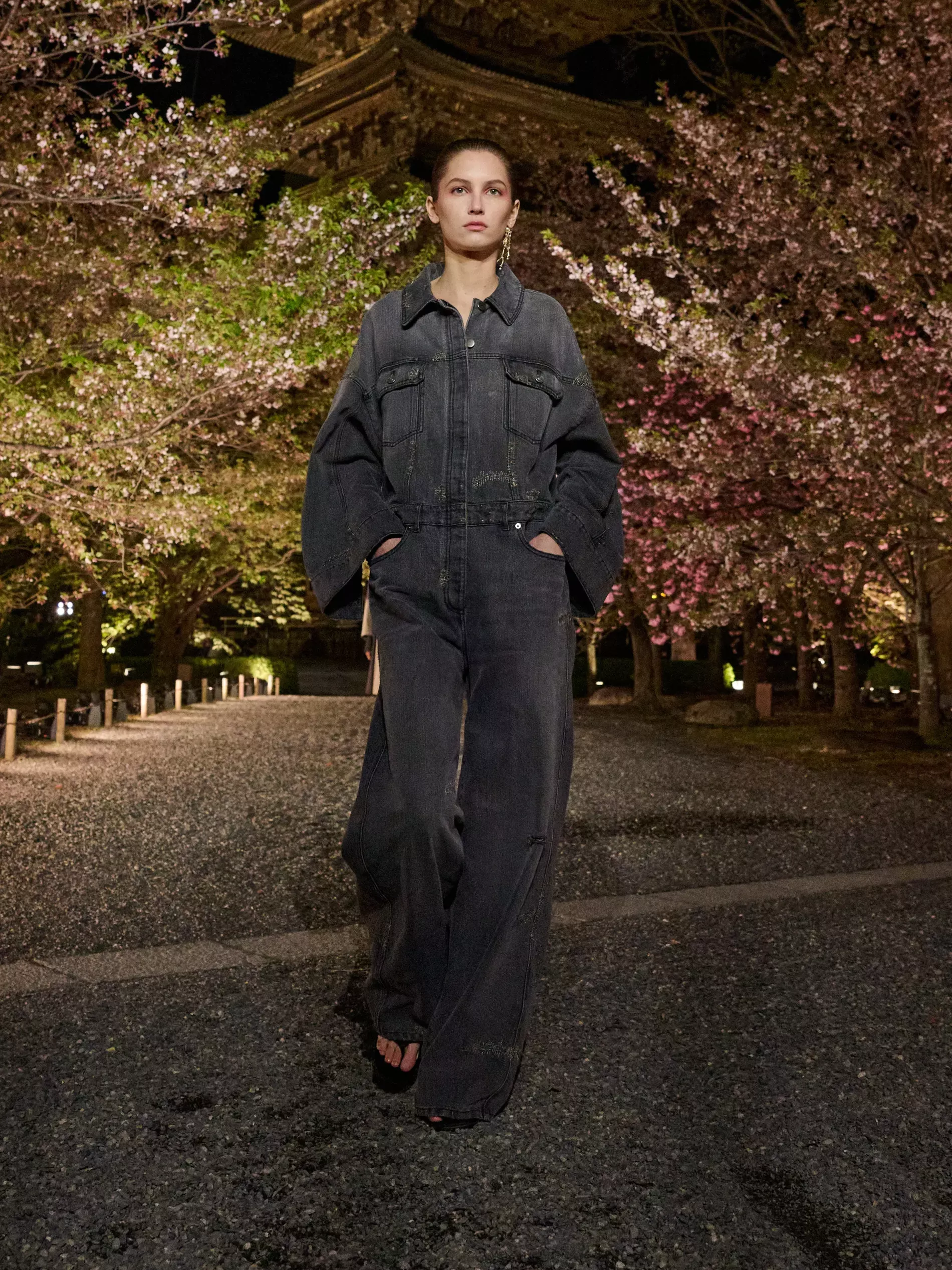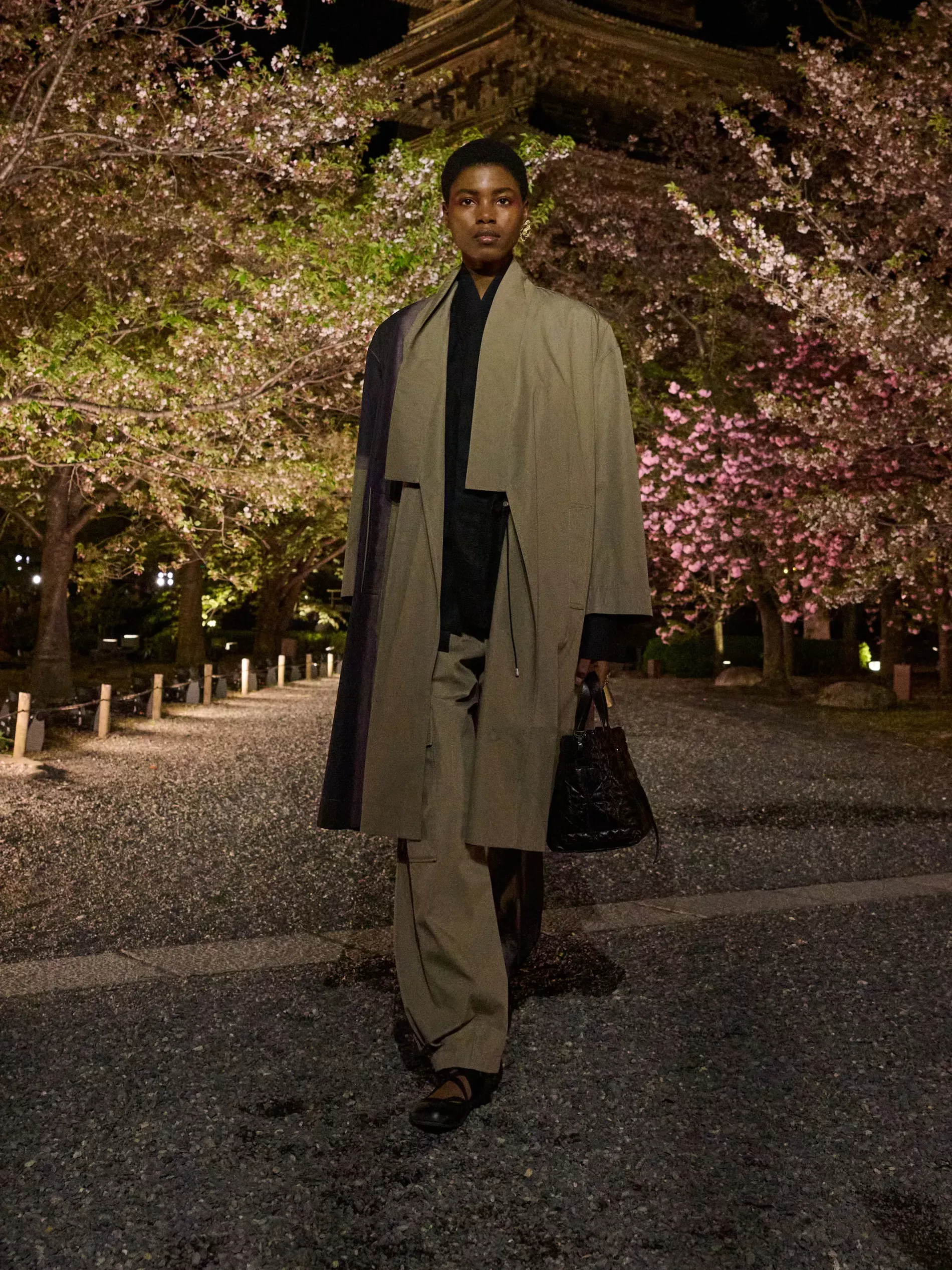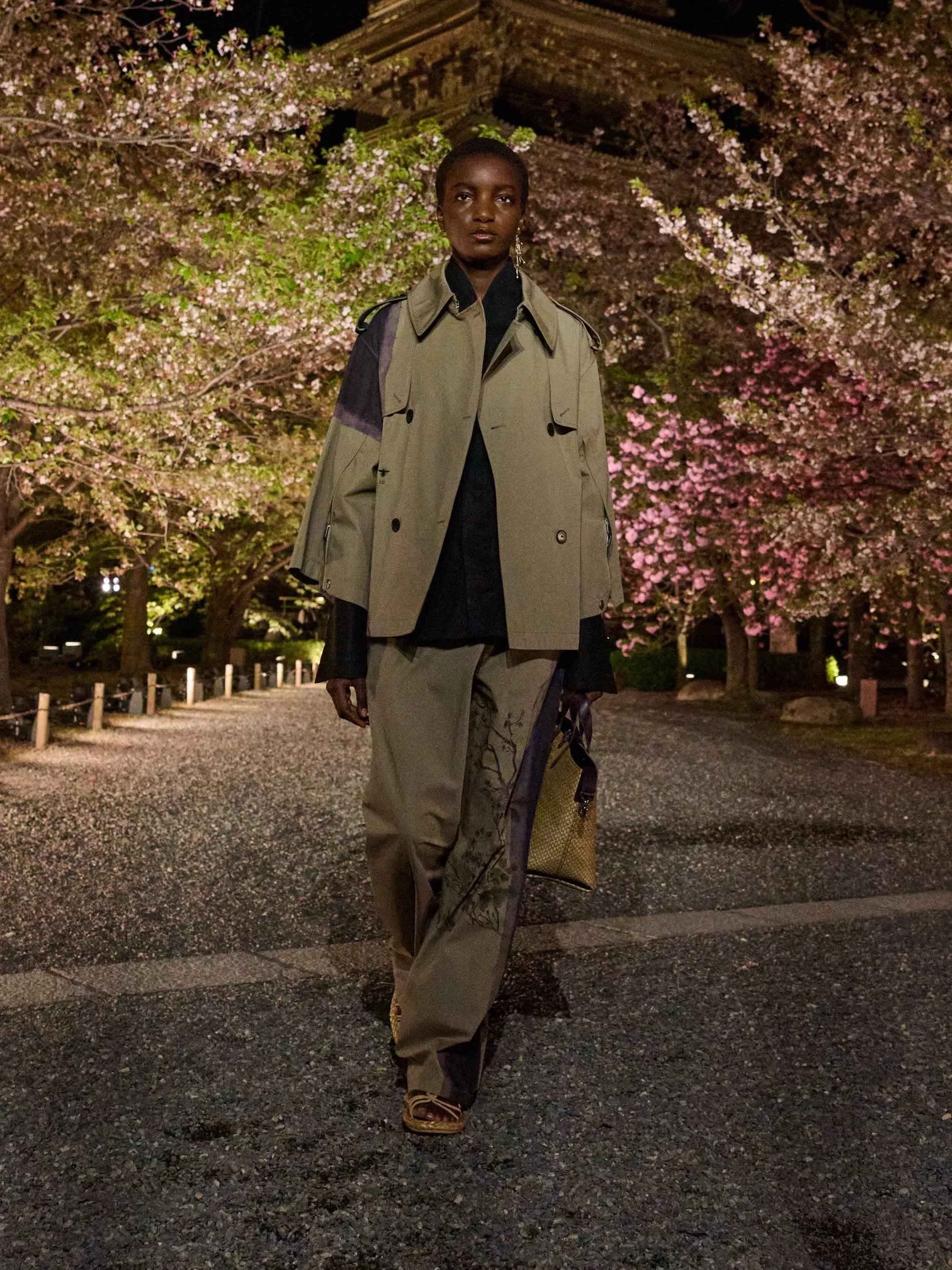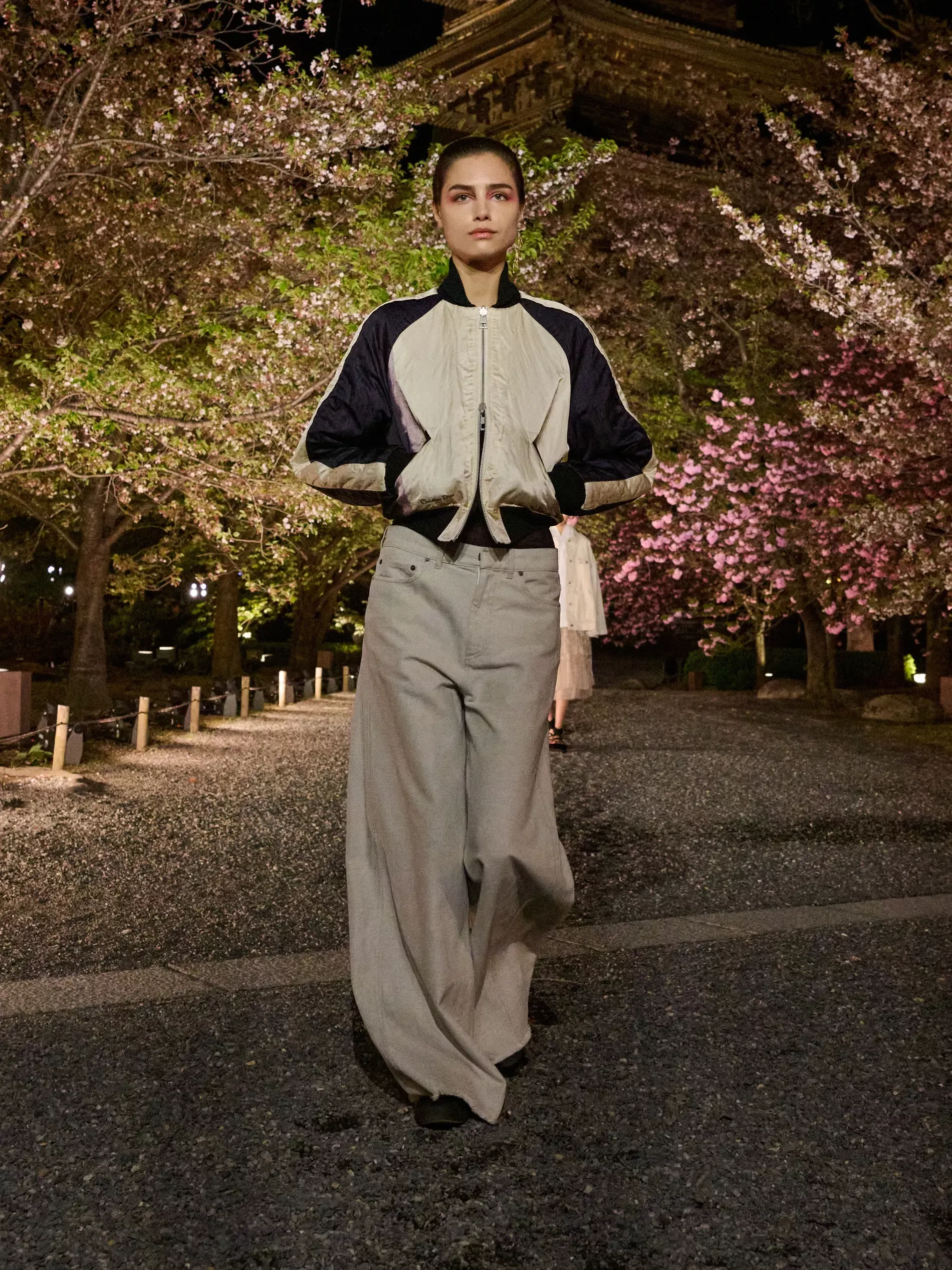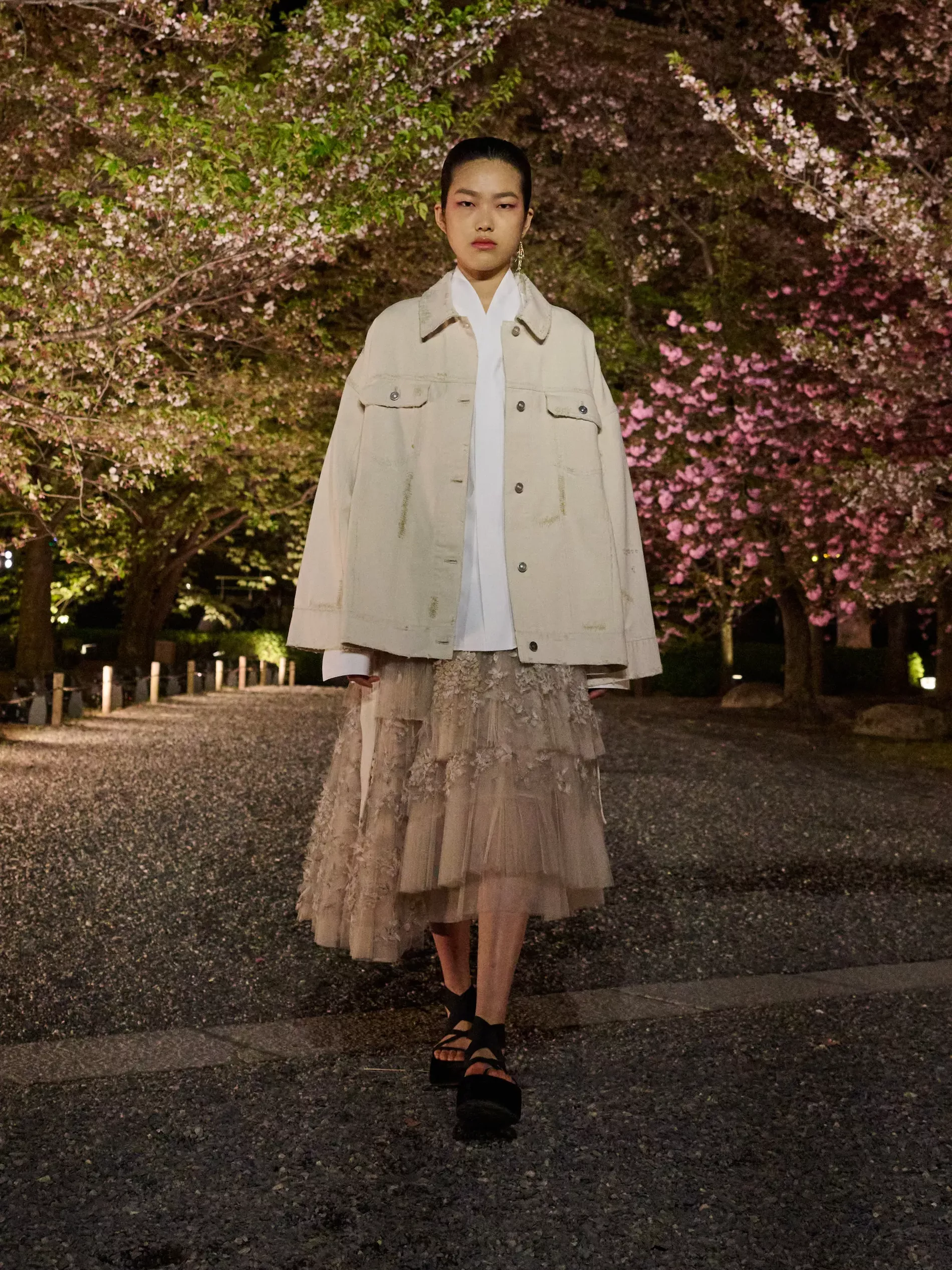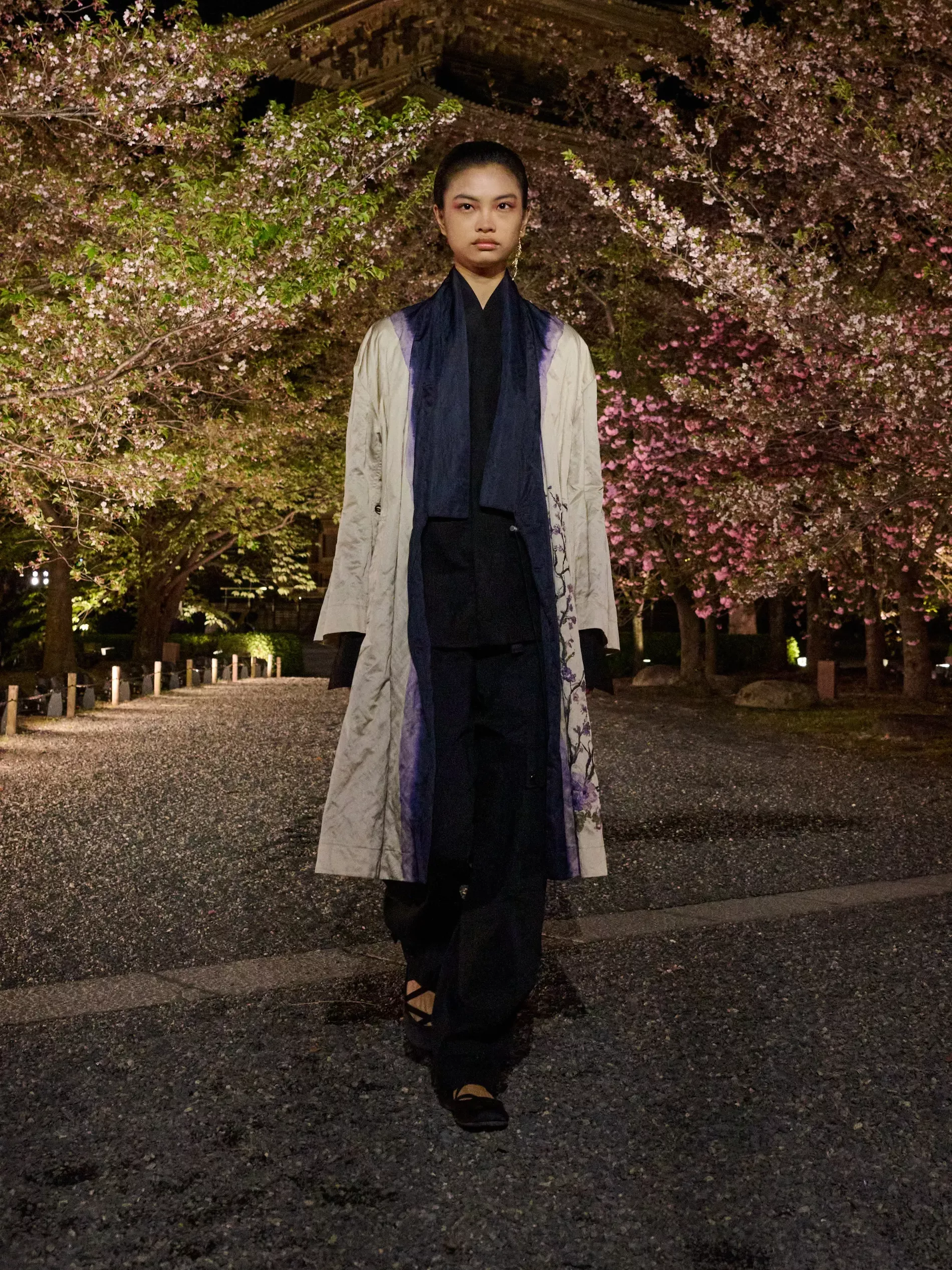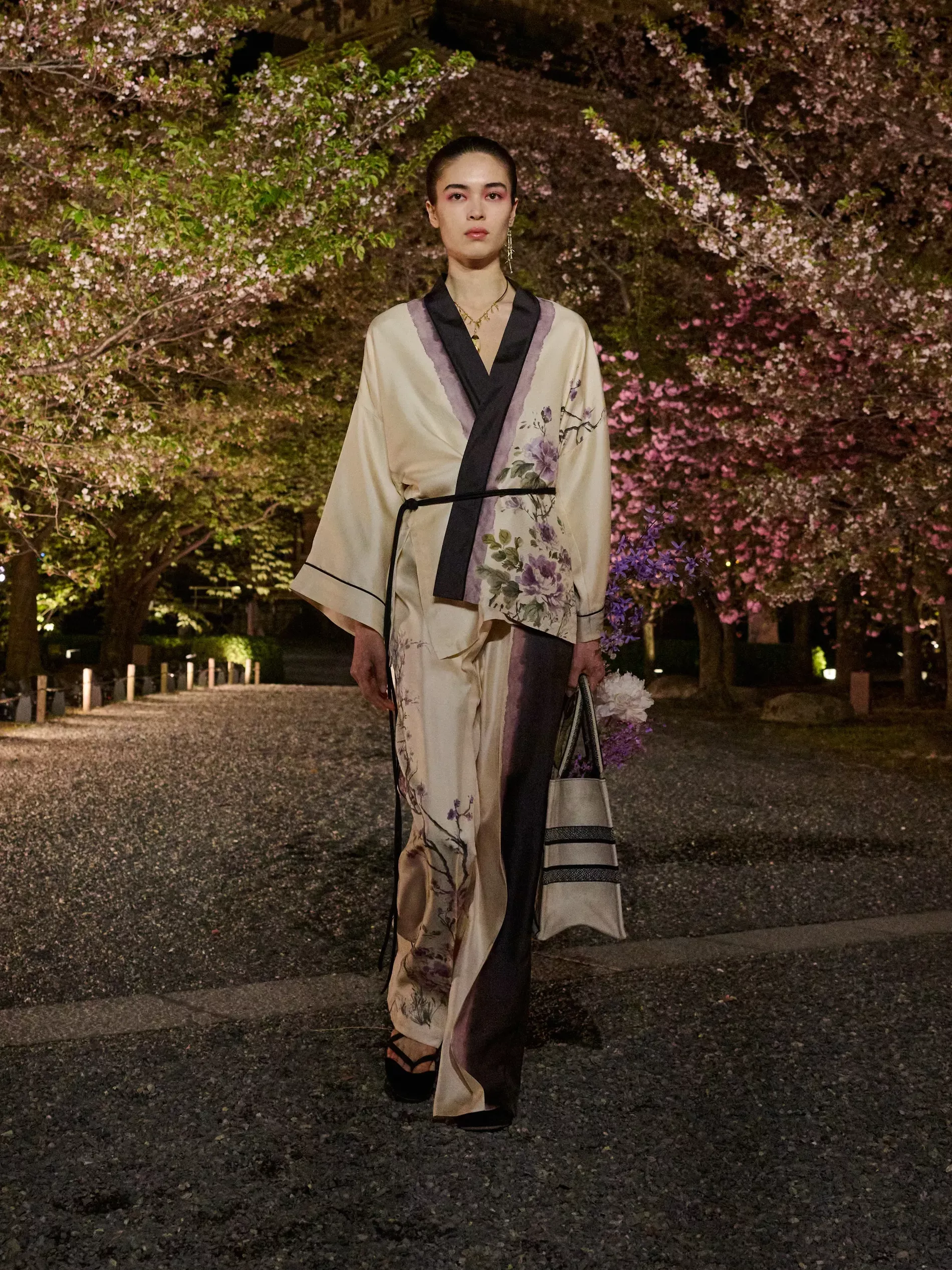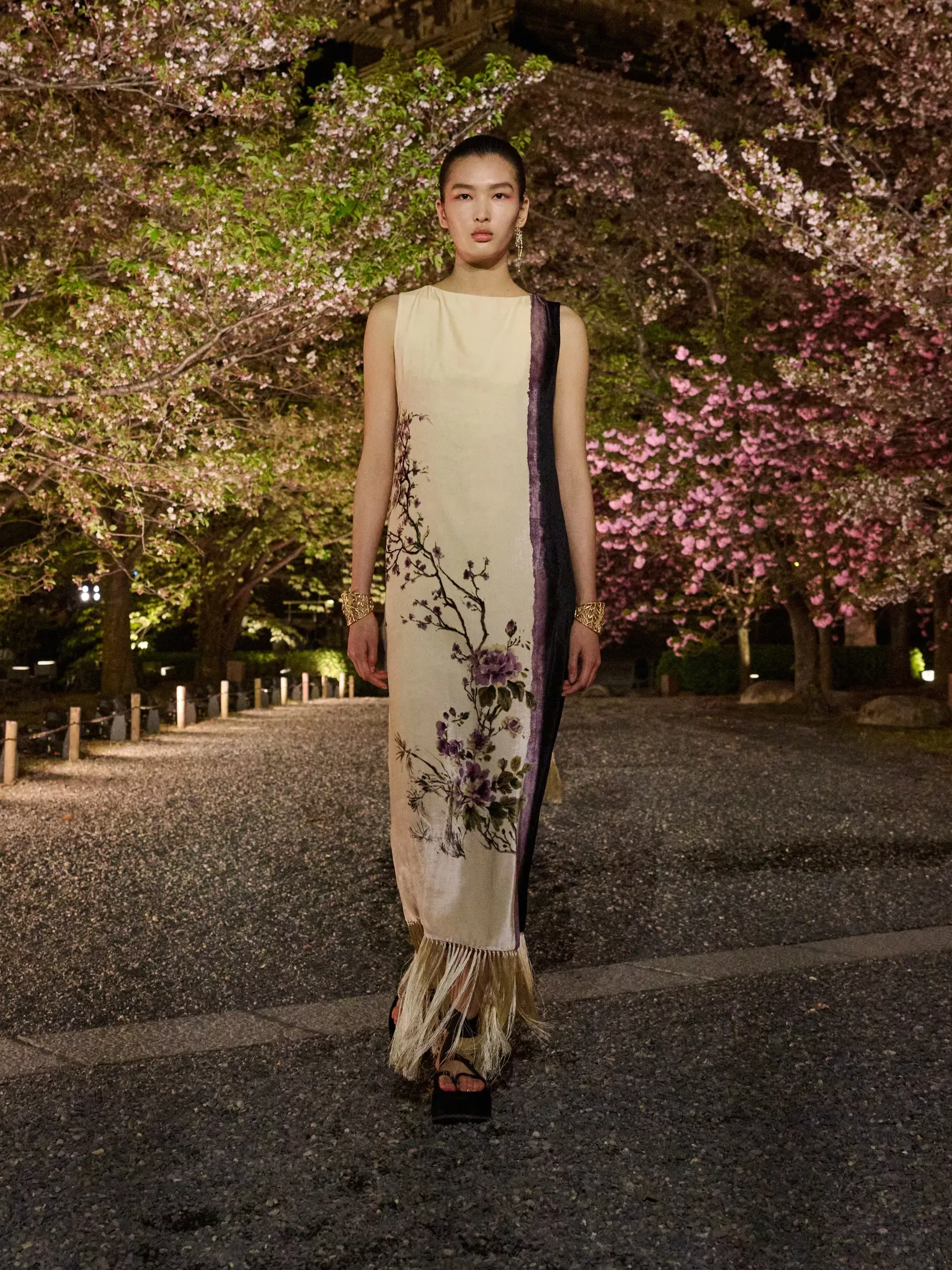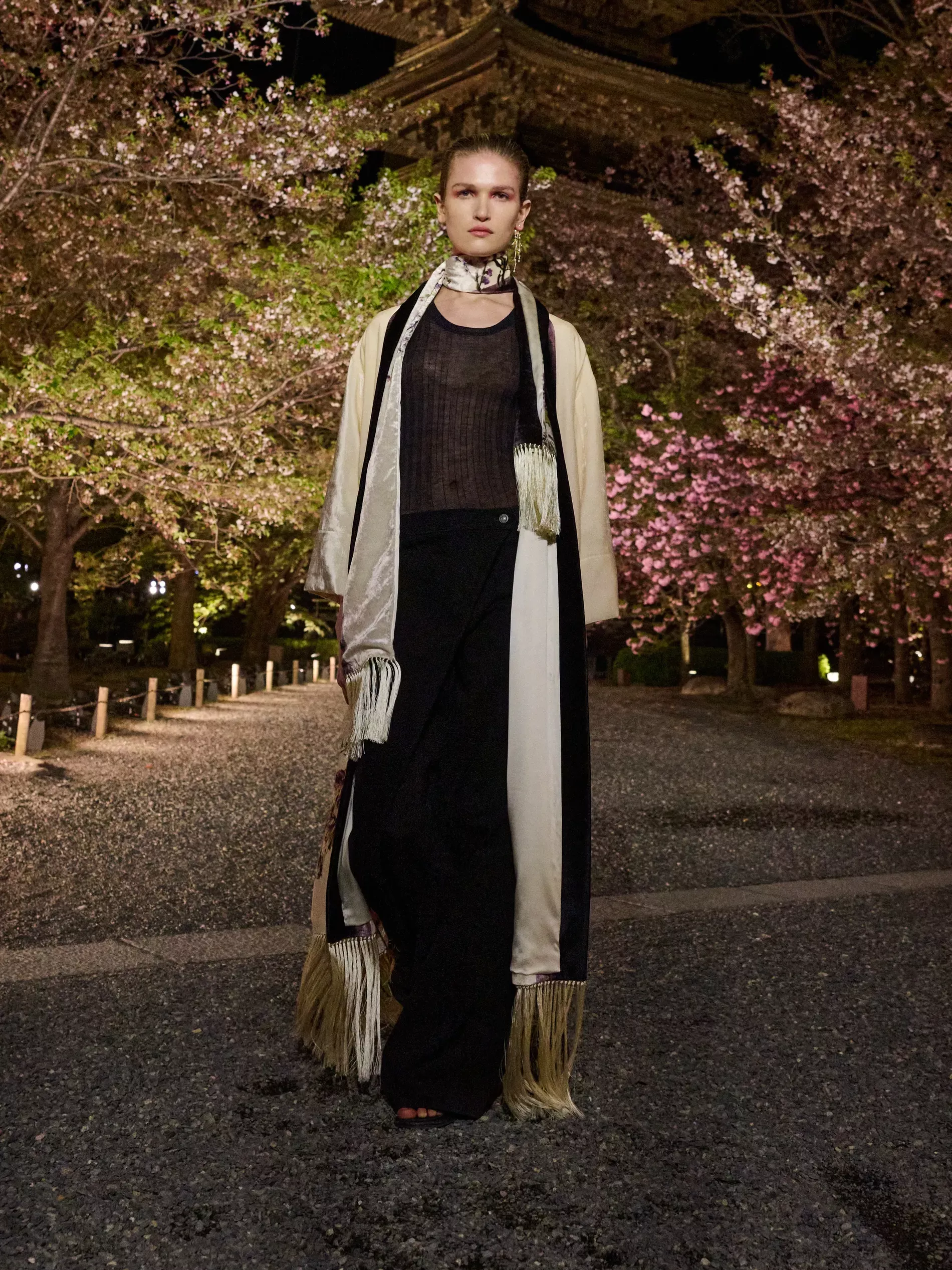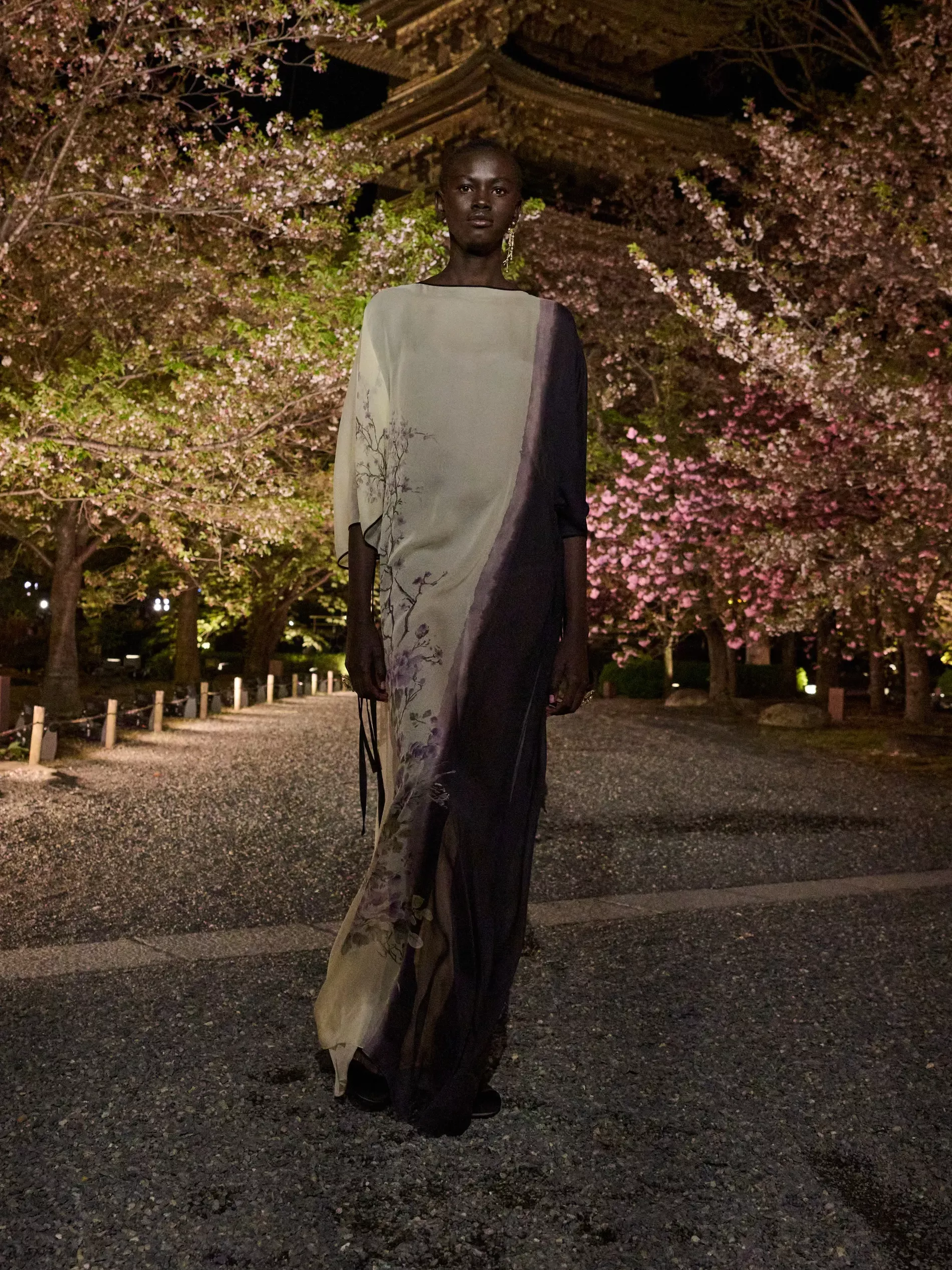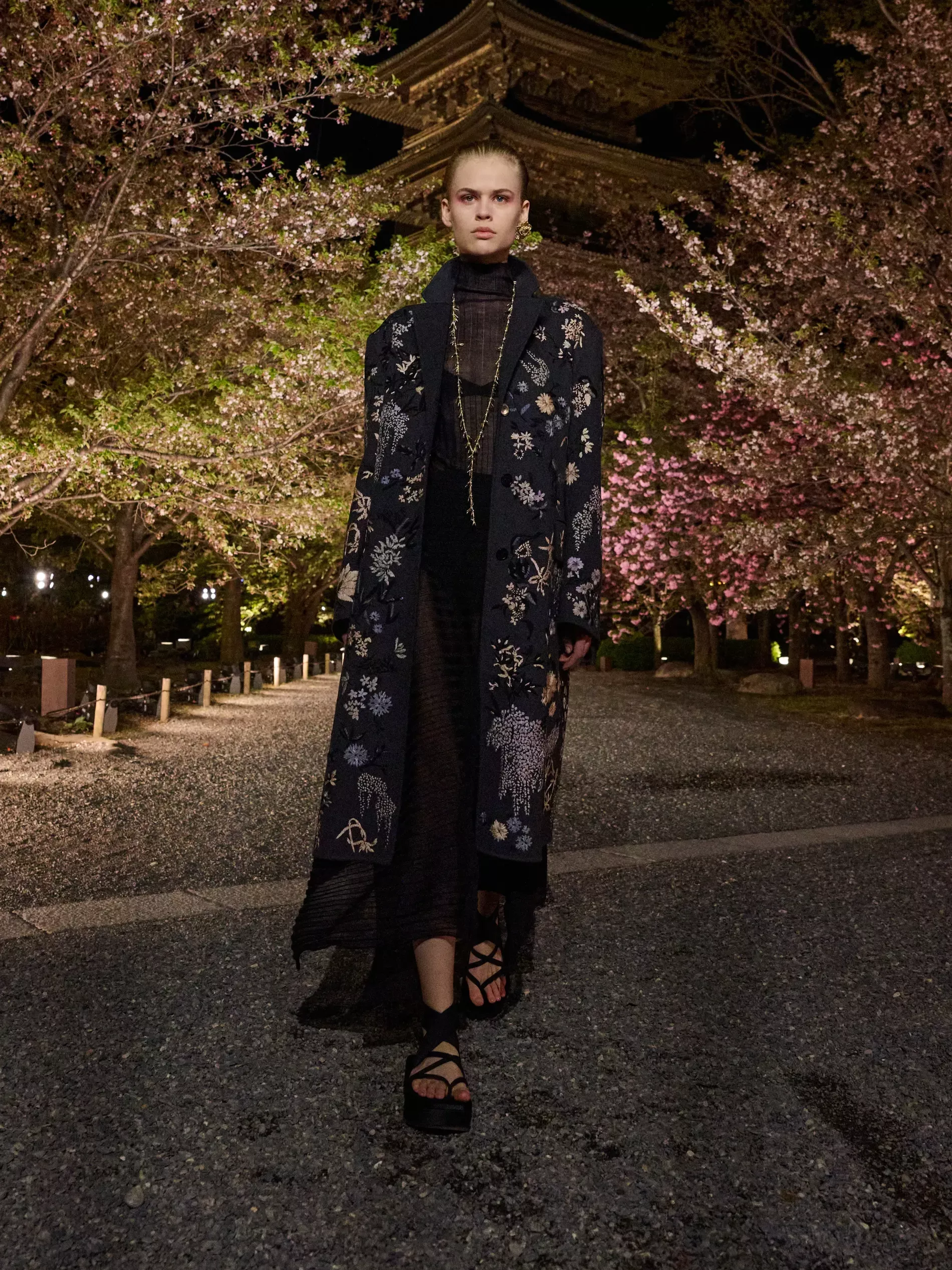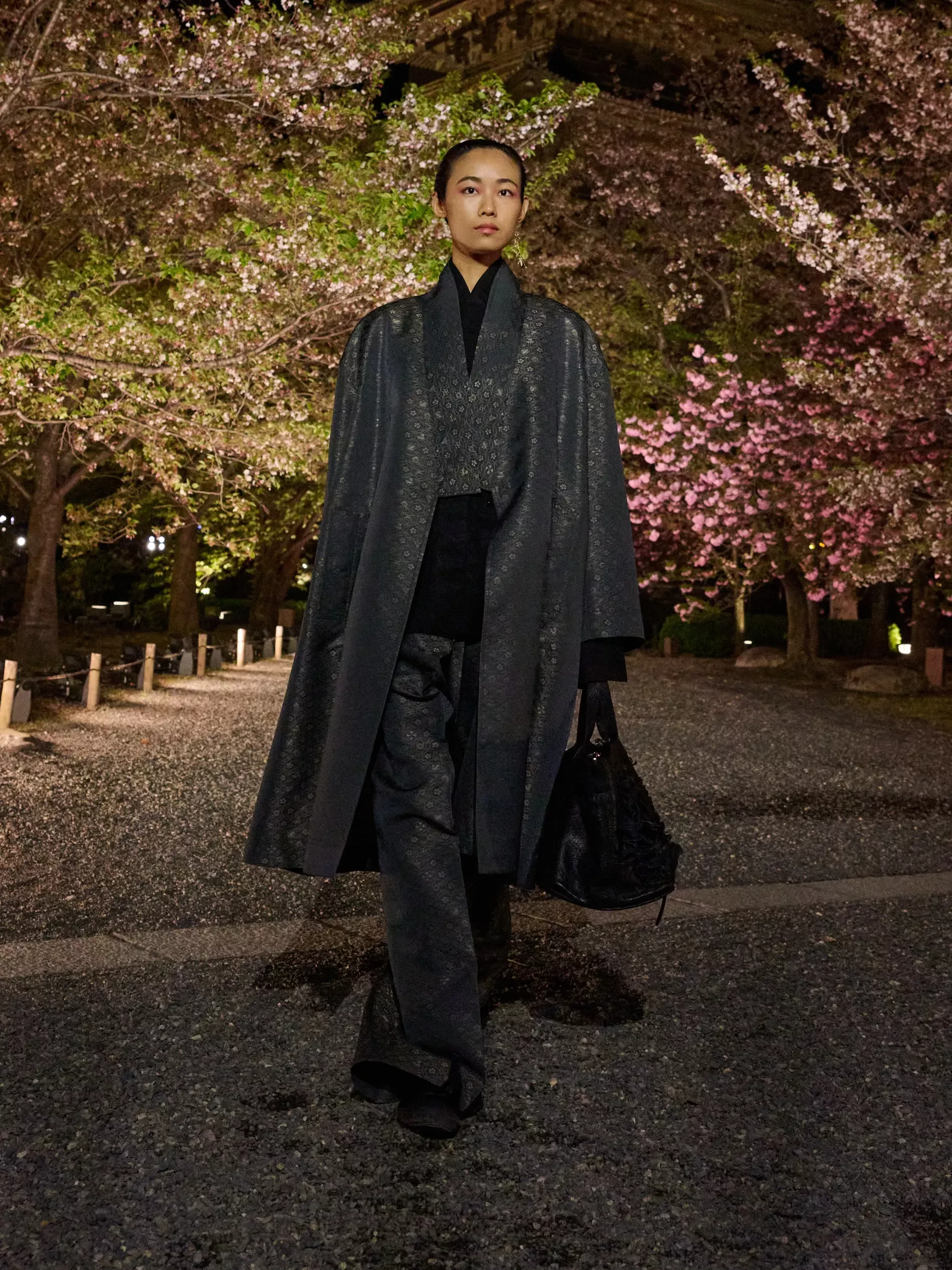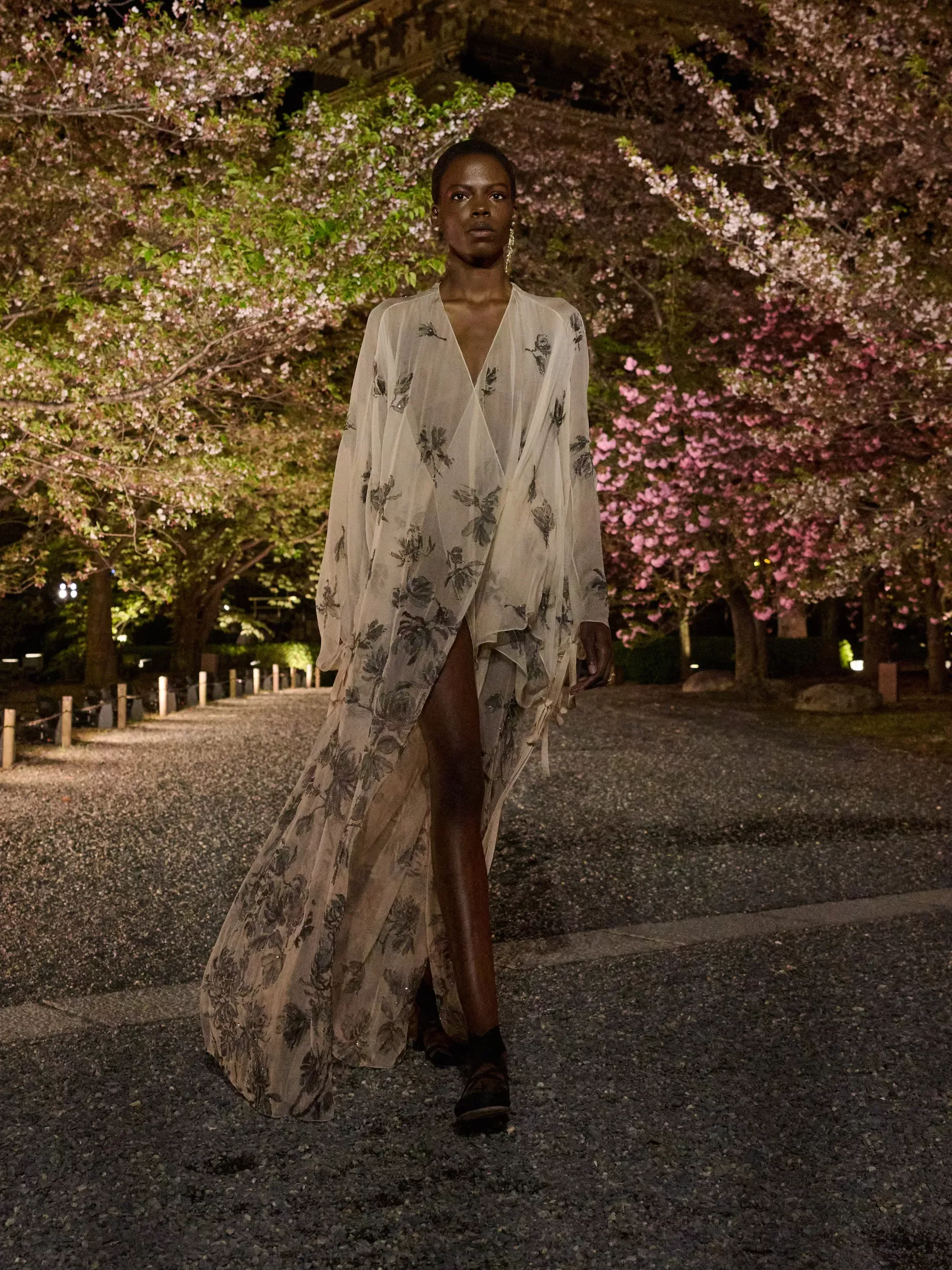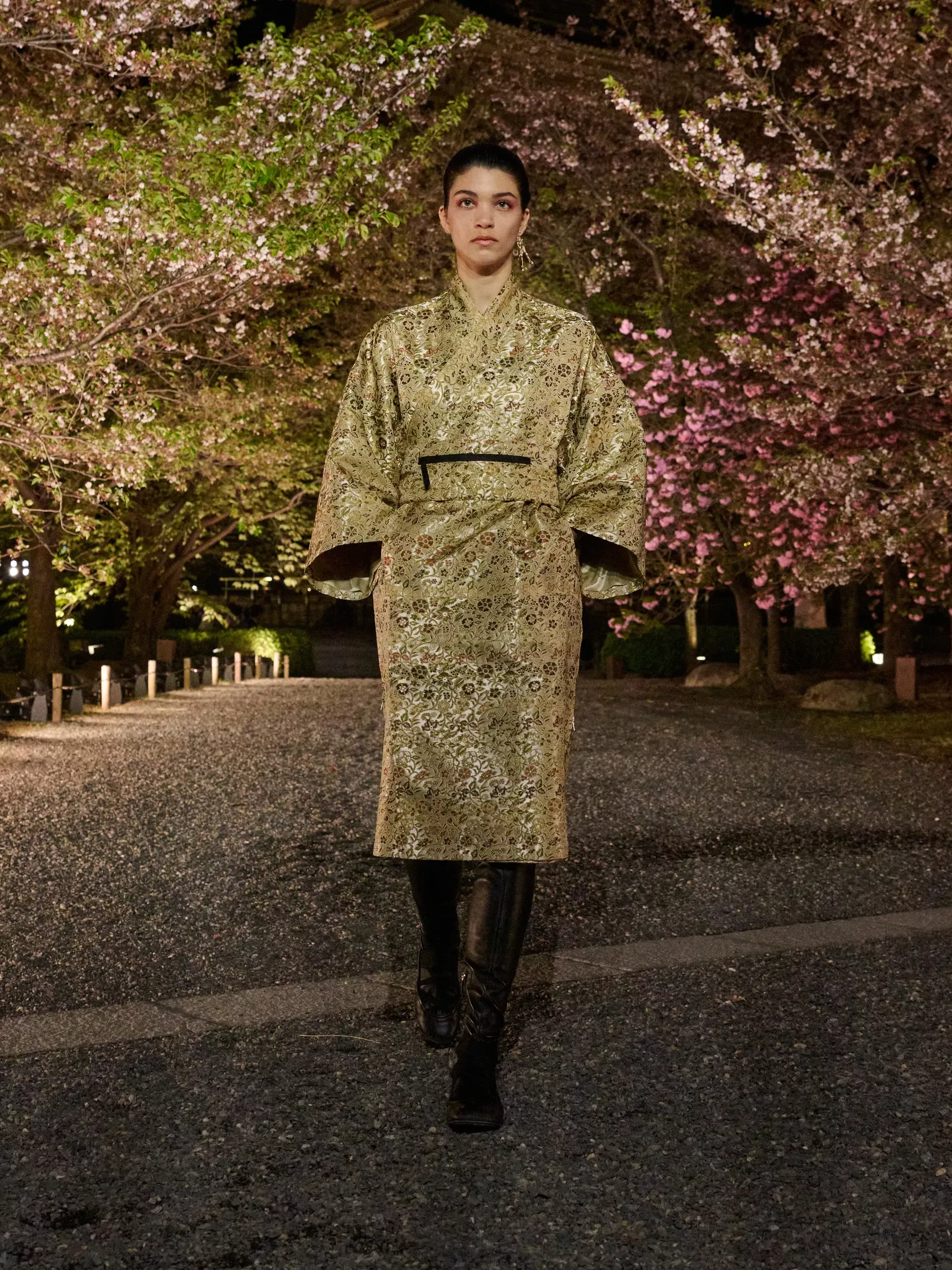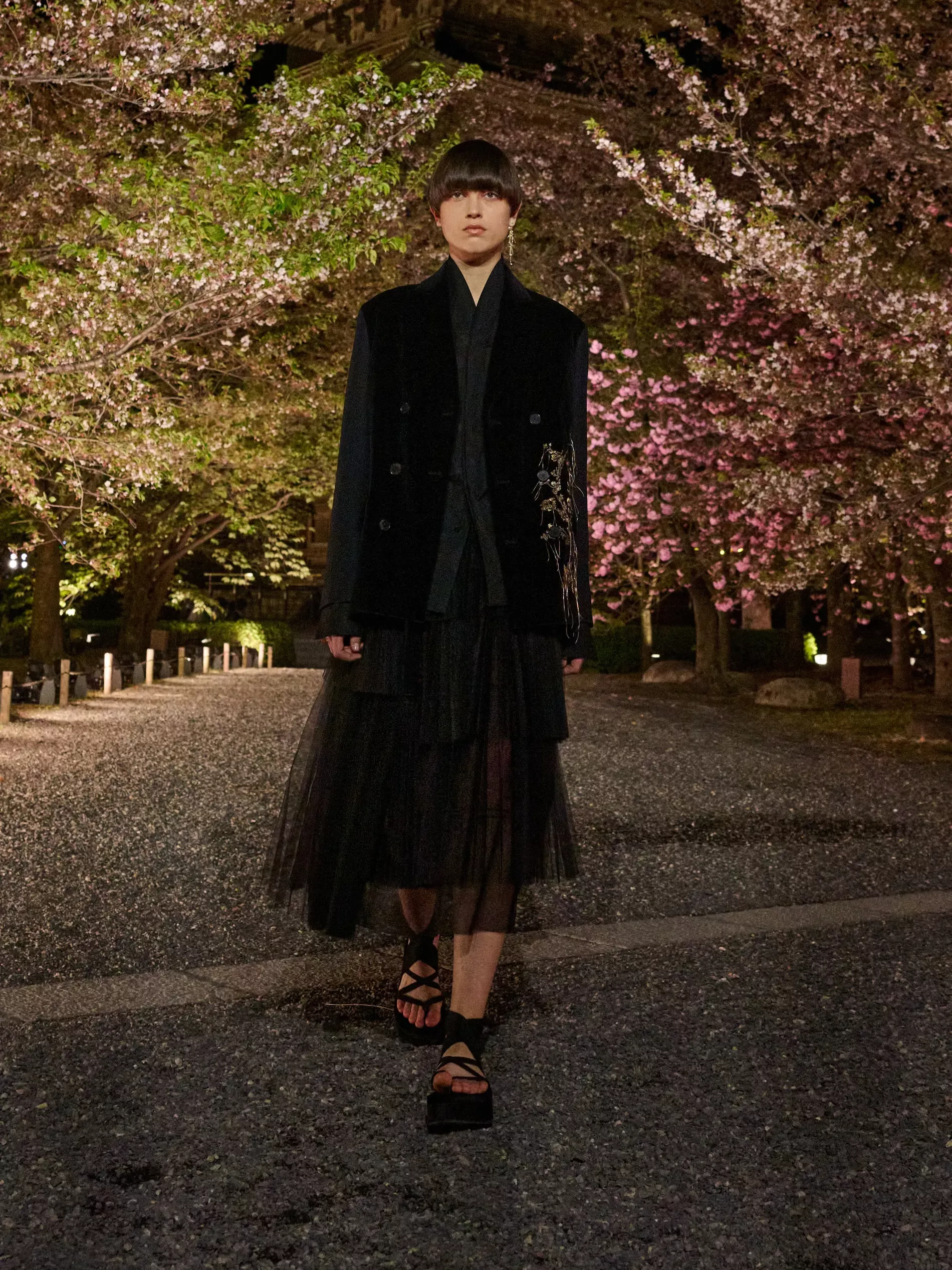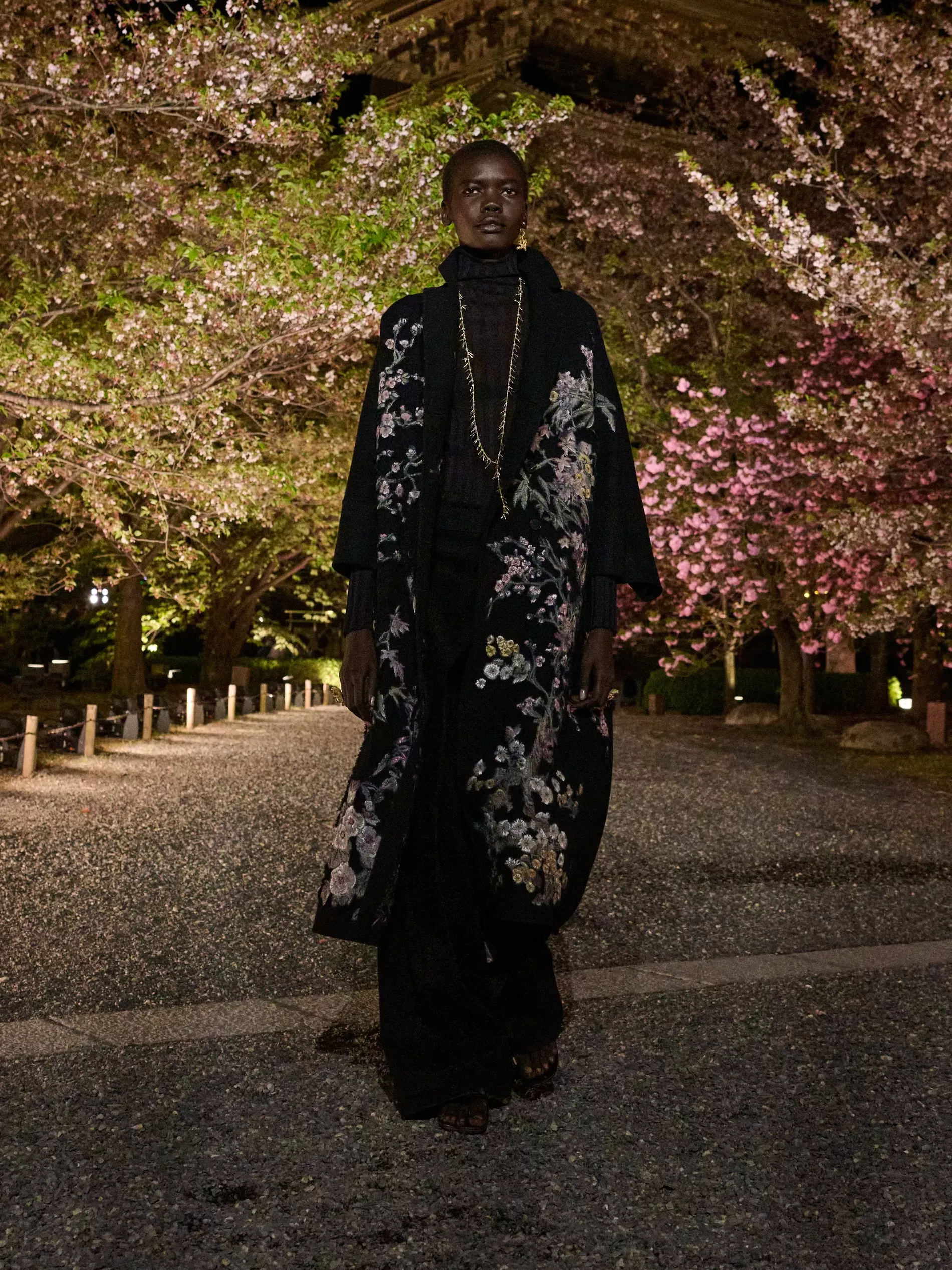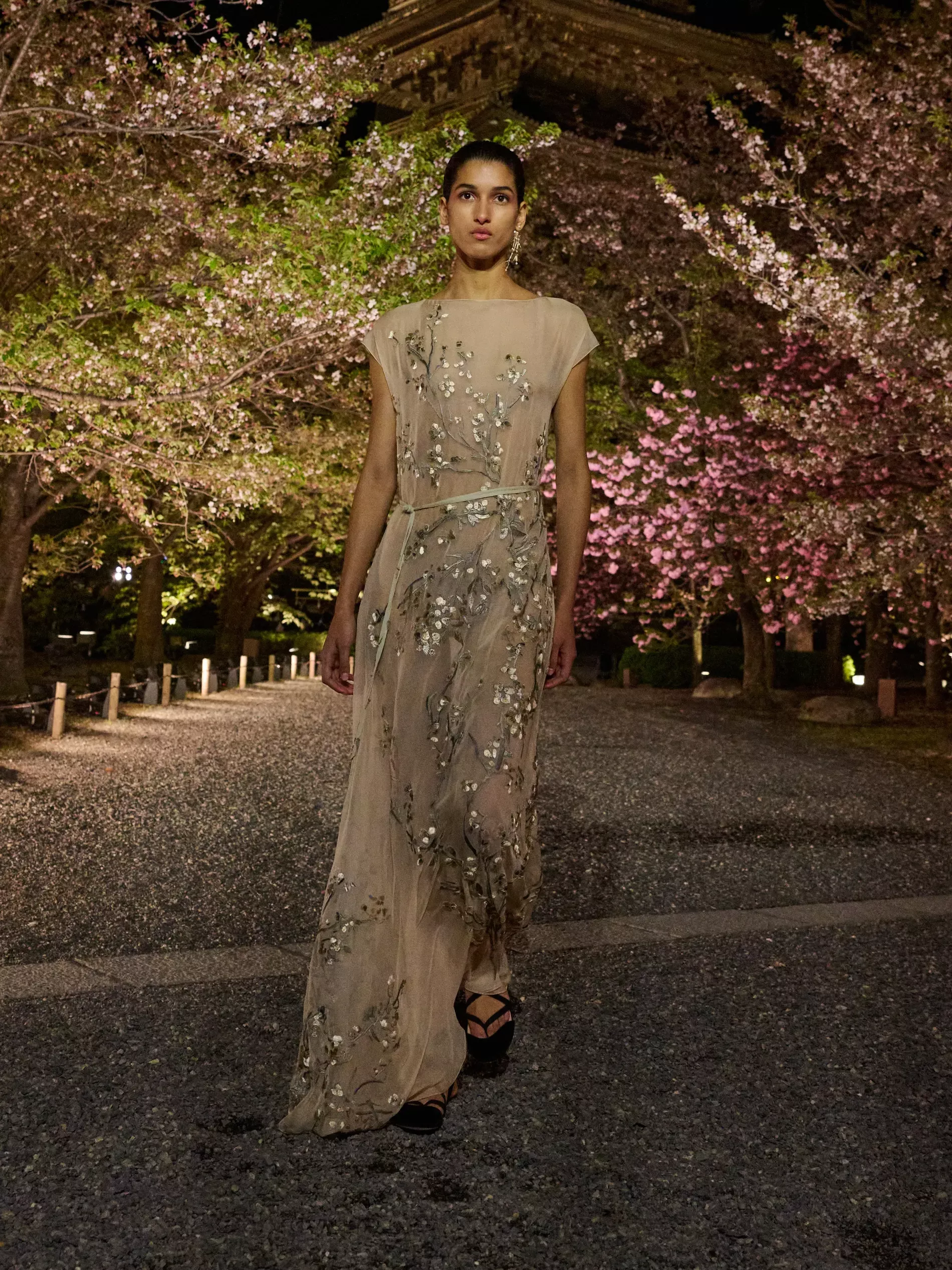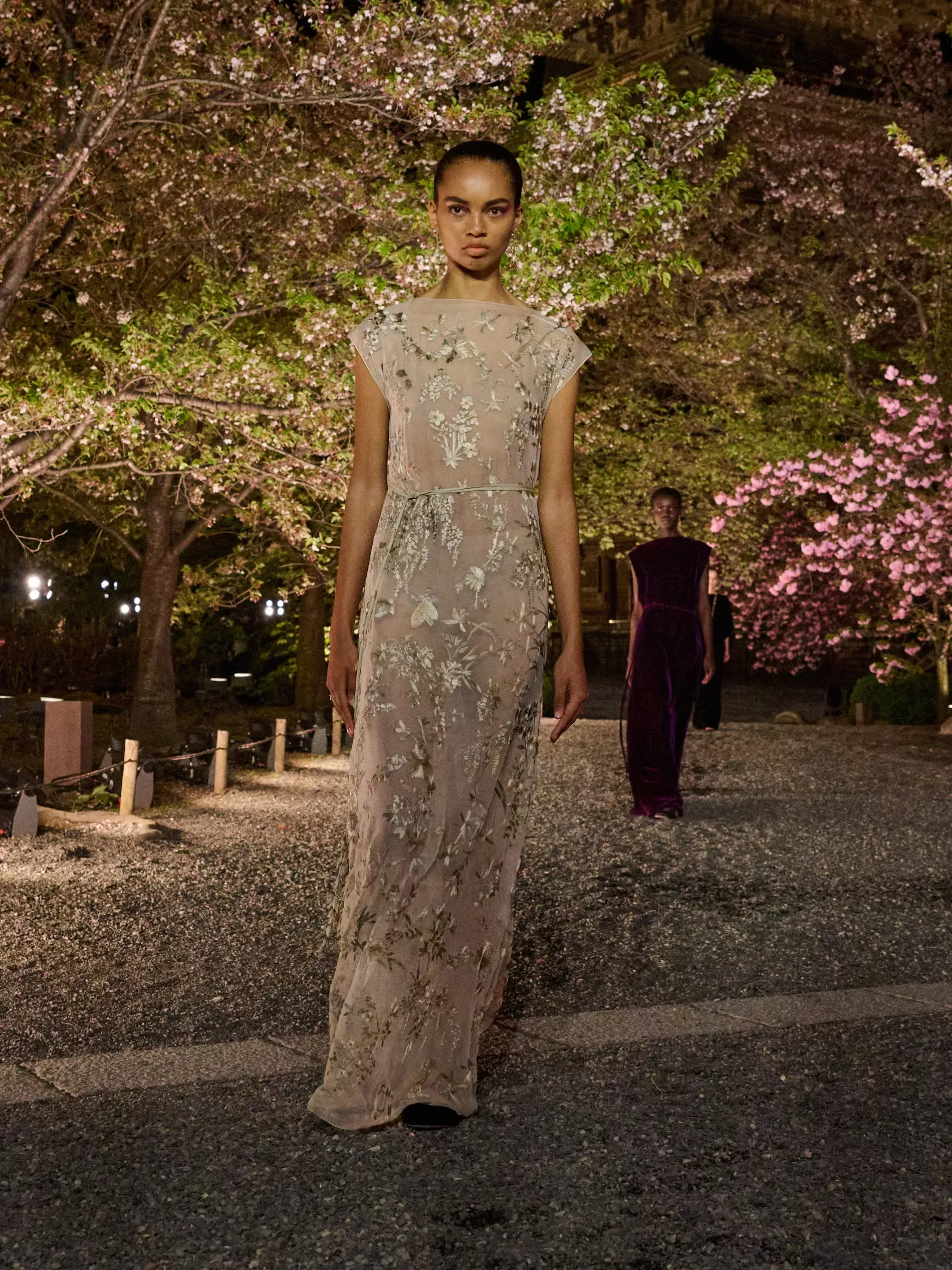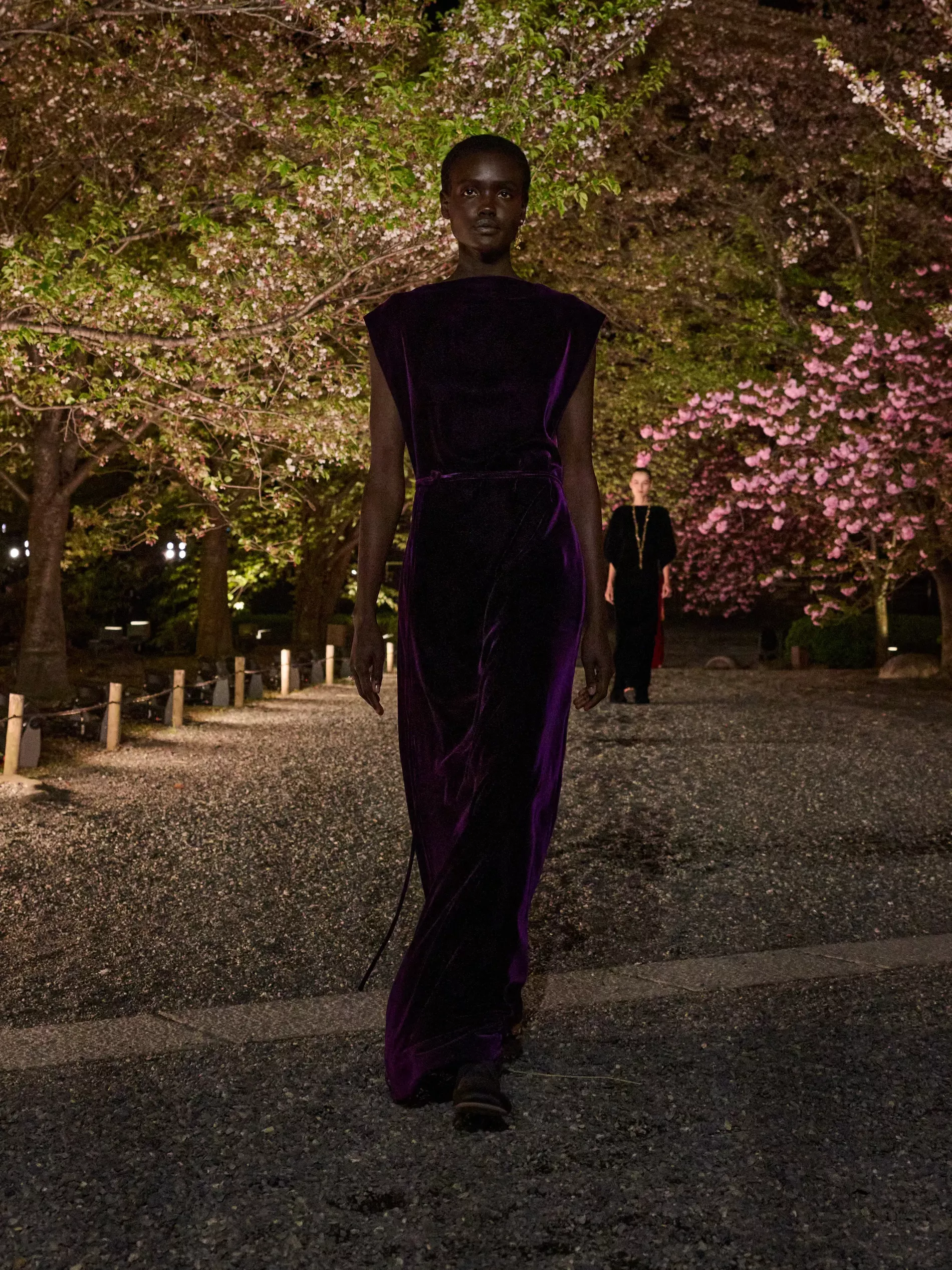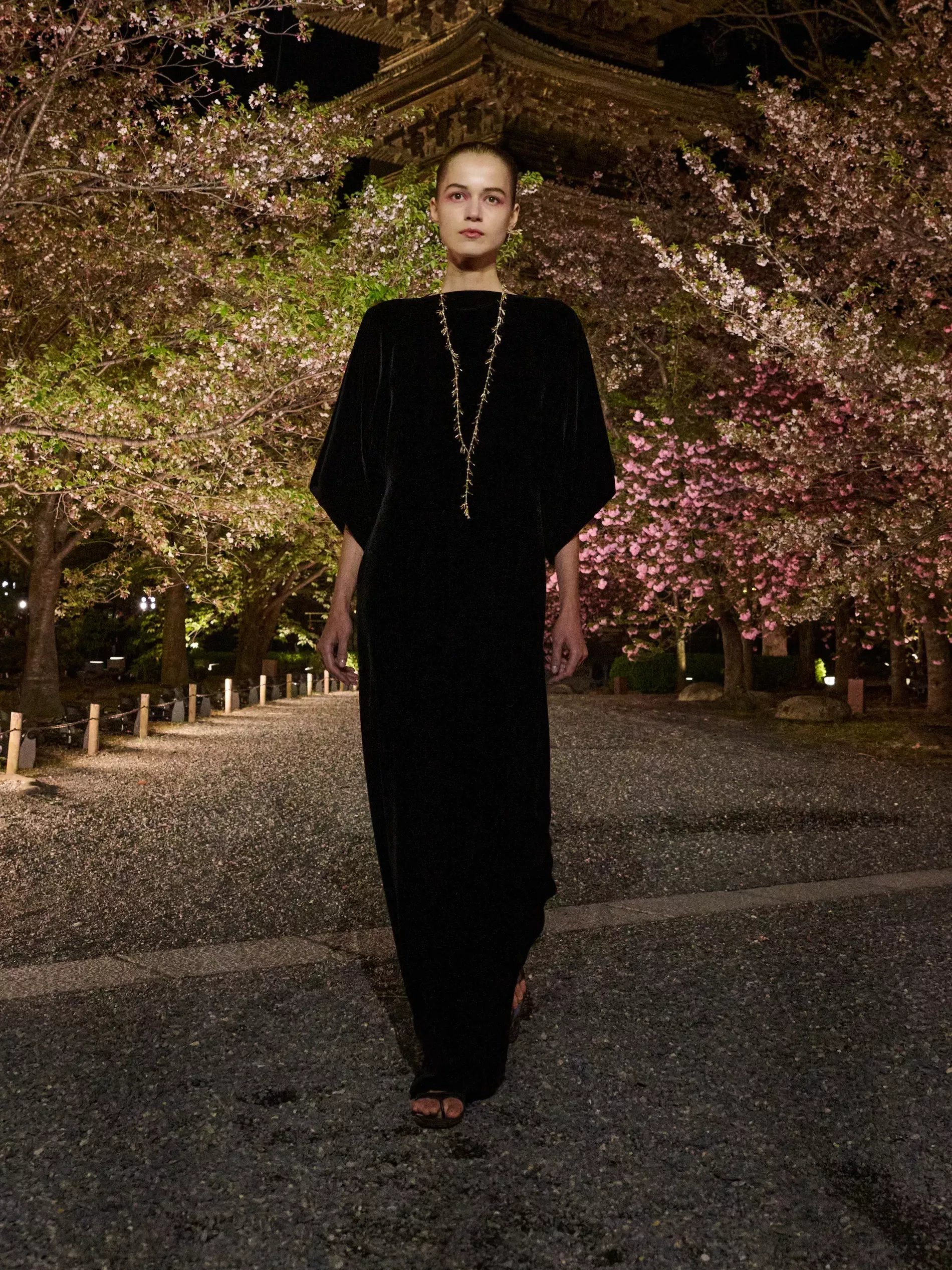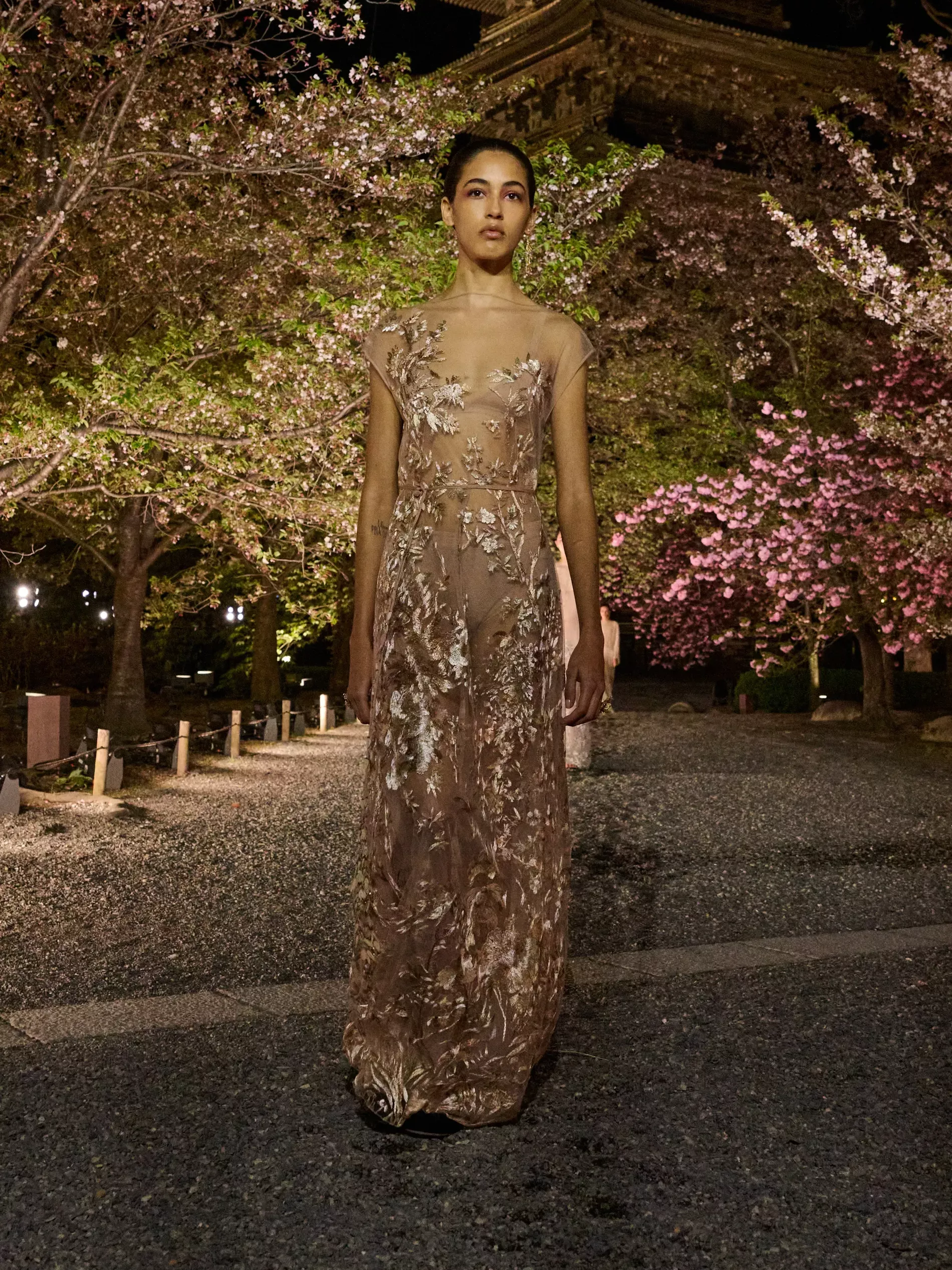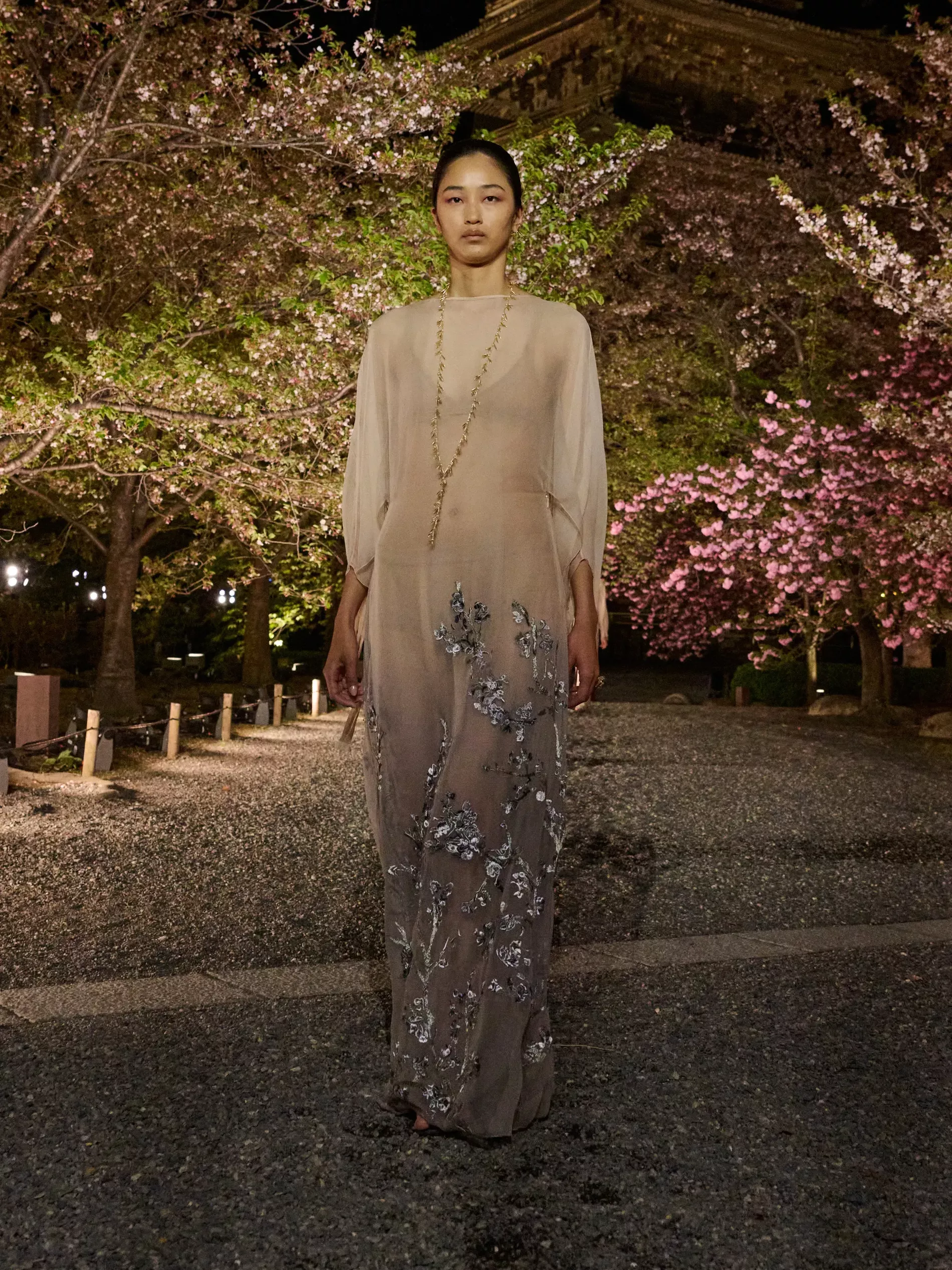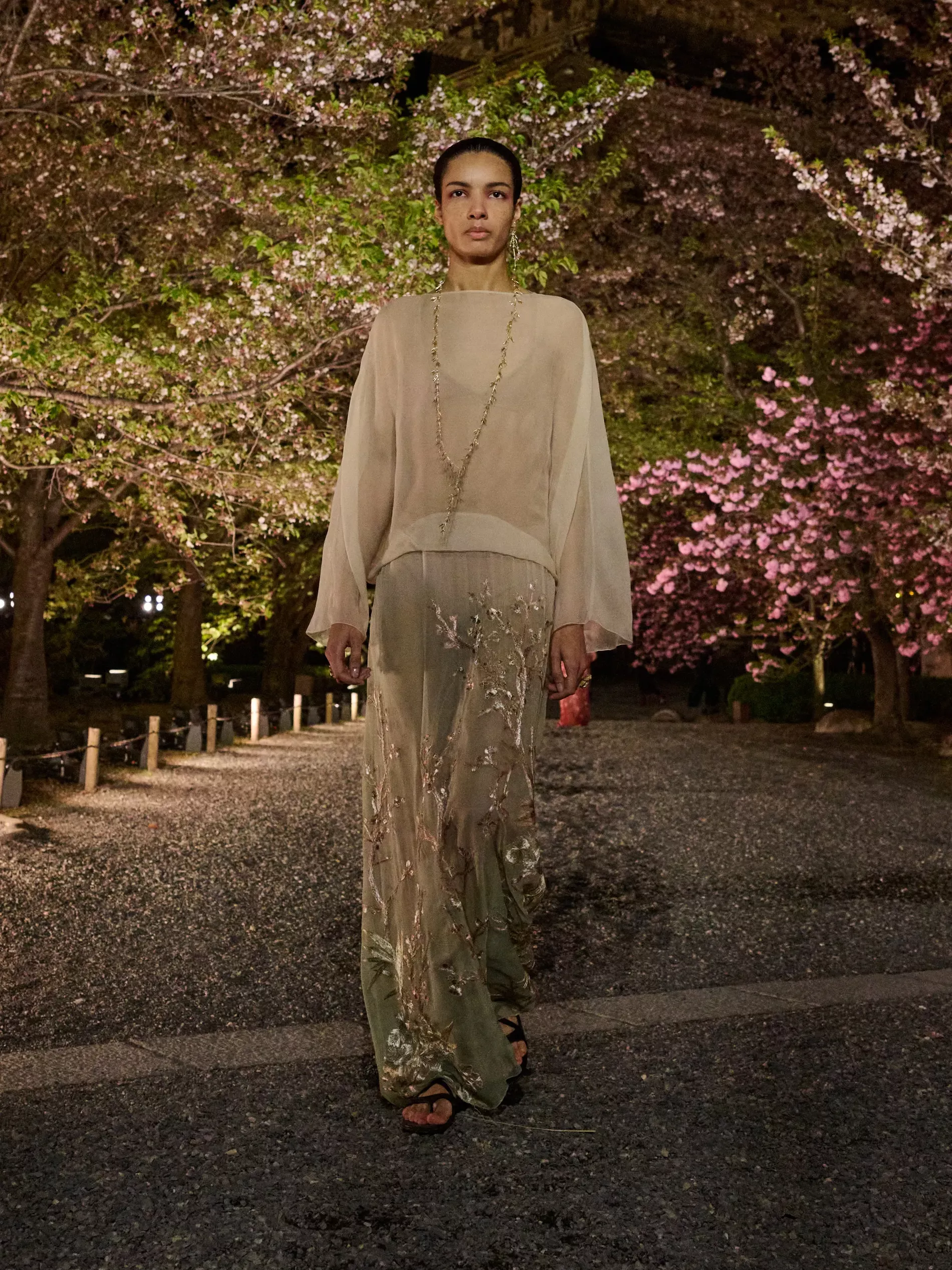Dior’s enduring love affair with Japan is honoured once more, as Maria Grazia Chiuri’s Kyoto show pays homage to the kimono, exquisite local craftsmanship, and a dialogue decades in the making
A true aesthete and connoisseur of the arts, Monsieur Christian Dior was captivated by the exquisite visual culture of Japan, and his admiration for its rich traditions shaped the house of Dior’s enduring liaison with the country – an artistic dialogue celebrated throughout its history.
In 1952, he chose the name Tokio for one of the dresses he designed for his Christian Dior – New York fall/winter collection. The following year, a haute couture ensemble was titled Jardin Japonais, and in 1954, he created Outamaro, an exquisite outfit crafted from a luxurious brocade woven by the Tatsumura Textile atelier in Kyoto. As the first couturier to present his collection in Japan in 1953, Monsieur Dior solidified his status as an icon of French fashion. This recognition reached its peak in 1959 when he was chosen to design three dresses for the civil wedding ceremony of Princess Michiko, future wife of Crown Prince Akihito, and future Empress of Japan. “From the late ’40s onward, he was truly determined to make Dior into a global brand,” said creative director Maria Grazia Chiuri.
Every designer at the helm of the maison has paid tribute to its connection with Japan – to its culture as well as its wealth. Marc Bohan staged a spectacular show in Tokyo in 1971, drawing on the expressionist tradition of Japanese kabuki theater. Gianfranco Ferré followed, and later, John Galliano took inspiration from Puccini’s Madame Butterfly and Hokusai’s famous painting The Great Wave off Kanagawa for his spring 2007 haute couture. Chiuri continued this legacy by choosing Kyoto as the setting for her pre-fall collection.
Cherry blossoms were lit up to magical effect in the garden of the historic Toji Temple, where the show unfolded as an exploration of heritage and reinvention – a calm, thoughtful negotiation between tradition and transformation. “I’ve been researching and reflecting on the beauty of the kimono, and the intriguing philosophy behind its intelligent, versatile, timeless shape – a 2D flat form as opposed to the Western 3-D pattern-cutting and construction,” she explained at a preview.
What captivated Chiuri was the dialogue between the body and the garment – a relationship the kimono articulates rather clearly. “It’s the body that defines the shape of the kimono,” she observed. “In Western fashion, it’s often the opposite – the body is expected to conform to the garment.” This quality of restraint was particularly apparent in Monsieur Dior’s architectural, structured approach to tailoring, though there were exceptions. In 1957 he introduced the Diorpaletot and Diorcoat, cape-like overcoats designed to be worn over a kimono. “He was stepping into a creative realm rather distant from his design ethos,” she noted. “It made for an intriguing departure – an anomaly, almost – but one he resolved brilliantly.”
Chiuri delved into the archetypal form of the kimono – its unisex, modern, two-dimensional structure, and the way it grants the body both freedom and mystery, concealing and revealing in equal measure. She explored its elegant ease of wear, while also paying tribute to the bravura of Japanese craftsmanship – “a tradition that is respected, preserved, and continually regenerated,” she remarked, “rooted in the past, honoured in the present, and propelled into the future.”
True to her commitment to collaborations with local artisanal communities – a hallmark of her creative practice – Chiuri partnered with the historic Tatsumura Textile atelier. Founded in 1894 and renowned for crafting exquisite obi sashes and ceremonial garments and decorations across five generations, the atelier revisited patterns originally commissioned by Monsieur Dior in the 1950s. A sumptuous brocade in deep green-gray, woven with subtly modernised geometric motifs, was crafted into a kimono-style overcoat paired with matching trousers, while a luminous golden brocade adorned with delicate floral designs became a cinched kimono-style robe-manteau.
Chiuri also tapped into the expertise of other historic artisans: Master dyer Tabata Kihachi and the Fukada family’s specialists in traditional dyeing techniques lent their hands to key looks, a standout being a belted kimono-style jacket and matching knee-length shorts in ivory and deep green dégradé tones. Japanese floral iconography was hand-embroidered onto oversized cashmere coats, printed on slender, chic silk velvet tunics with fringed hems, and hand-painted on the jackets worn by the violinists performing live at the show’s opening. Sportier alternatives, some rendered in stark black only slightly textured in moiré or tone-on-tone ramages, balanced the fluidity of other silhouettes – think voluminous padded blousons decorated with cherry blossoms and foliage, or indigo denim crafted into an oversized jumpsuit and a trapeze jacket printed with a minimalist sketch of a Japanese garden.
Seen up close, the craftsmanship was nothing short of couture. A prior visit to the historic Tatsumura Atelier – where sumptuous textiles are still painstakingly handwoven on antique looms – offered deeper insight into the enduring mastery of Japanese artistry, which still thrives and flourishes. The atelier’s guiding philosophy, “Restoration and Creation,” as expressed by its president Iku Tatsumura, definitely resonated with Chiuri’s approach to the collection. As the runway unfolded beneath the pink glow of cherry blossoms at Toji Temple, guests like Lily James, Deva Cassel, Sonam Kapoor, and Pretty Yende looked on from the front row, taking in the show’s serene vibe, and the grace the evening so generously delivered.
See the full Dior AW25 runway show in Kyoto below.

